

Caribbean Tourism Soars with 14.3% Increase in 2023, Surpassing Global Recovery Rates
Saturday, March 16, 2024 Favorite

Caribbean tourism rose 14.3% in 2023, with the US leading recovery. The region outperforms global trends, showing remarkable resilience and growth.
In 2023, tourism in the Caribbean saw a notable surge, registering a 14.3% boost in international visitors, as reported by the Caribbean Tourism Organization (CTO). This uplift aligns with the predictions made by the CTO and was announced during the “Caribbean Tourism Performance Review 2023” in Bridgetown by Dona Regis-Prosper, the Secretary-General. The growth is attributed to the continued interest in international travel, especially from the United States, the region’s primary market. Improvements in tourism infrastructure, strategic marketing efforts, and increased flight options played significant roles, though the benefits were not uniformly spread across all Caribbean destinations.
The global tourism sector’s resilience is evident, with the Caribbean slightly exceeding its pre-pandemic visitor numbers by 0.8%, showcasing a stronger recovery than many other worldwide regions. Several Caribbean islands, including Anguilla, Aruba, Curaçao, the Dominican Republic, Grenada, Guyana, Jamaica, Puerto Rico, St. Maarten, the Turks & Caicos Islands, and the U.S. Virgin Islands, surpassed their 2019 visitor statistics, with most seeing more than a 50% recovery rate. A record number of tourists in a single year was reported in multiple locales.
“Based on preliminary data provided so far by the destinations in the Caribbean, tourist visits were approximately 32.2 million – about four million more than in 2022,” stated Regis-Prosper , who noted that the data showed that each month’s arrivals exceeded those of 2022 thus establishing a continuous growth trend over the past 33 months as tourism steadily rebounded toward pre-pandemic levels.
In terms of market-specific recovery, the United States led the way with a complete rebound, whereas arrivals from Europe and Canada reached 88.2% and 88.1% of their former levels, respectively. The U.S. contributed approximately 16.3 million visitors, marking a 12.7% increase and setting a new record for the region. The Canadian market also saw significant growth, with three million visitors marking a 46.1% rise from the previous year, aided by expanded flights from major Canadian cities.
However, European arrivals stalled in 2023, totaling around 5.2 million. Caribbean internal travel saw a 3.6% increase, amounting to 1.6 million trips and indicating a 62.5% recovery from before the pandemic, although costs remained high due to fragmented air services. South American visits to the Caribbean also rose by 14%, totaling 1.7 million.
The hotel industry in the Caribbean rebounded impressively in 2023, with new establishments opening and existing ones seeing better occupancy and rates. The average occupancy climbed to 65.6%, and the average daily rate increased by 11.8% to US$329.37, with revenue per available room jumping 20.2% to US$215.97, as per STR’s data.
Cruise tourism also hit a new high with an estimated 31.1 million visits, a 56.8% increase from 2019, driven by strong demand and operational enhancements. The cruise industry is expected to maintain its growth, with projections of 34.2 million to 35.8 million cruise visitors in 2024.
Kenneth Bryan, Chairman of the CTO’s Council of Ministers and Commissioners of Tourism and the Cayman Islands’ Minister of Tourism and Ports, highlighted the industry’s extraordinary resilience and growth trajectory in 2023. Yet, he cautioned about the challenges ahead, including travel costs, ongoing conflicts, and geopolitical tensions affecting the industry in 2024.
“Caribbean destinations remain adaptable and responsive, and the region is still highly desired by travelers for its safety and diversity of tourism products,” stated Chairman Bryan , adding that the region will also be positively impacted by key developments in 2024, including increased air capacity throughout the year, which will facilitate greater access between the destinations and some of their legacy and emerging markets.
Chairman Bryan also pointed to “intensive strategic marketing initiatives” that are being executed to attract visitors to the region to enjoy its culture and heritage, including its carnivals and festivals.
He noted that the CTO is pleased that the ICC (International Cricket Council) Men’s T20 World Cup 2024 is being hosted in several destinations bringing not only teams but also their loyal followers to the region and further raising awareness and promoting the diverse offerings of Caribbean destinations to global audiences.
“Hence, the Caribbean’s prospects appear highly promising, with more regional destinations poised to either match or surpass the arrival figures recorded in 2019. Anticipated growth is forecast to range between five percent and 10 percent, potentially welcoming between 33.8 million and 35.4 million stay-over tourists,” concluded Chairman Bryan .
Subscribe to our Newsletters
« Back to Page
Related Posts
- Caribbean Tourism Organization’s Sustainable Tourism Conference in Grenada: Uniting Visionaries for a Greener Future
- Top Corporations Partner with Caribbean Tourism Organization for Upcoming Sustainable Tourism Event in Grenada
- Caribbean Tourism Booms in 2024: Islands See Record-Breaking Visitor Numbers
- How to select a right Caribbean cruise line for your vacation?
- Caribbean Tourism Organization to elevate presence at Routes Americas in Bogotá
Tags: caribbean tourism , Explore Caribbean , United States , United States tourism , US , US Tourism , What's new in Caribbean

Select Your Language
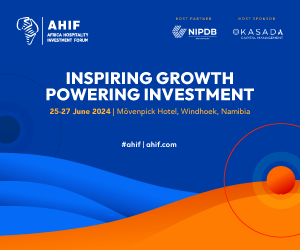
I want to receive travel news and trade event update from Travel And Tour World. I have read Travel And Tour World's Privacy Notice .
REGIONAL NEWS

Ryanair Announces Five New Summer Routes to Europe, Including Rome, from Katowic
Tuesday, April 23, 2024

Reykjavik to Host Spectacular 2024 DesignMarch Festival Under ‘The Circus&

Norwegian Cruise Line Introduces 2024 Europe Season Featuring New Homeports and

WestJet CEO Alexis Von Hoensbroech to Unveil Strategic Regional Investments in E
Middle east.

Saudi Tourism Authority launches ‘Visit Saudi’ as a comprehensive guide

Emirates Strengthens Commercial Operations with Strategic Role Changes

China Eastern Airlines and Amadeus Collaborate to Enhance Travel with Expanded N

Travel Across 23 Countries with Air Asia Grand Sale Offering 20% Off on All Flig
Upcoming shows.
Apr 21 April 21 - April 24 CONNECTIONS LUXURY COASTA BRAVA Find out more » Apr 21 April 21 - April 24 m&i Private Sorrento 2024 Find out more » Apr 22 April 22 - April 24 Routes Europe 2024 Find out more » Apr 22 April 22 - April 23 Caribbean Hotel & Resort Investment Summit (CHRIS) 2024 Find out more »
Privacy Overview

Resilience, Sustainability, and Inclusive Growth for Tourism in the Caribbean
Louise twining-ward, john perrottet, cecile niang.
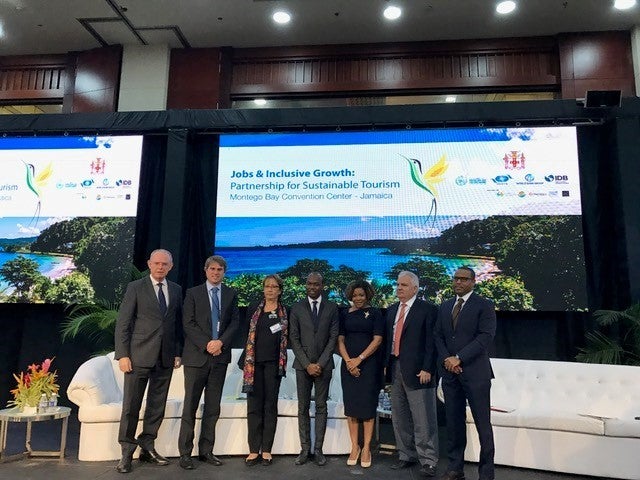
Senior Private Sector Specialist

Senior Industry Specialist

Program Leader
Join the Conversation
- Share on mail
- comments added
Caribbean Tourism Experiences Strong Growth in 2023, Recovery to Continue into 2024
Buy the full December 2023 Quarterly Review
BRIDGETOWN, Barbados (March 15, 2024) – Continuing its positive recovery trend, Caribbean tourism grew in 2023 with an estimated 14.3% increase in international stay-over arrivals to the region, the Caribbean Tourism Organization (CTO) has reported.
Delivering the “Caribbean Tourism Performance Review 2023” in Bridgetown today, Dona Regis-Prosper, Secretary-General of the CTO, shared that last year’s growth was in line with CTO’s forecast for the year, and attributed the outcome to sustained demand for outbound travel from the United States – the Caribbean’s main source market, enhanced tourism-related infrastructure within the destinations, the fulfillment of strategic marketing initiatives, and augmented airlift capacity between the region and its source markets, albeit unevenly distributed among the destinations.
The recovery of global tourism has been resilient, despite variability in the regional performances, according to Regis-Prosper, with the Caribbean surpassing pre-pandemic arrivals by a modest 0.8%, outperforming most of the main global regions in terms of recovery.
“Based on preliminary data provided so far by the destinations in the Caribbean, tourist visits were approximately 32.2 million – about four million more than in 2022,” stated Regis-Prosper, who noted that the data showed that each month’s arrivals exceeded those of 2022 thus establishing a continuous growth trend over the past 33 months as tourism steadily rebounded toward pre-pandemic levels.
Arrival levels amongst Caribbean destinations either significantly recovered or moderately exceeded the benchmark numbers of 2019, with 11 destinations, Anguilla, Aruba, Curaçao, Dominican Republic, Grenada, Guyana, Jamaica, Puerto Rico, St. Maarten, Turks & Caicos Islands, and U.S. Virgin Islands performing better than in 2019. The majority of those recovered greater than 50% of their 2019 arrivals. In addition, multiple destinations registered new record levels for tourist arrivals in a single year.
United States and Canada Markets
For the Caribbean, only the U.S. market has fully recovered, while the recovery rates of arrivals from Europe and Canada reached 88.2% and 88.1%, respectively. An estimated 16.3 million stay-over arrivals to the region came from the United States, representing an annual growth rate of 12.7%. The performance here established a new record level of arrivals from this market and surpassed the pre-pandemic arrivals by 4.2%. The performance of the Canadian market resulted in an estimated three million Canadian tourist visits by the end of the year, an increase of 46.1% compared to 2022. Increased air service from major Canadian cities to Caribbean destinations played a pivotal role in driving up visitor numbers.
Europe, Caribbean and South America Markets
Regis-Prosper noted that arrivals from Europe to the Caribbean region were stagnant in 2023. A total of approximately 5.2 million trips originated from the market. In 2023, travel among Caribbean residents to destinations within the region increased by approximately 3.6%, a total of 1.6 million trips, which was 0.3 million more compared to 2022. This also indicated a recovery of 62.5% from pre-pandemic levels. “Despite this positive outcome, intra-regional travel remained expensive due to fragmented air service and reduced air capacity,” said Regis-Prosper. By the end of the year, trips from South America to the region surged by an estimated 14%, totaling 1.7 million trips.
Caribbean Hotel Performance
The Caribbean hotel sector experienced a remarkable turnaround in 2023, including a surge in the establishment of new hotels and resorts. According to STR, throughout the Caribbean, average room occupancy grew to 65.6% in 2023 from 61% in 2022. The average daily rate (ADR) experienced a considerable increase of 11.8% with the region’s ADR reaching US$329.37 while the revenue per available room (RevPAR) jumped 20.2% to US$215.97.
Cruise Tourism Performance
Preliminary data for 2023 showed that Caribbean destinations received an estimated 31.1 million cruise visits, reflecting an increase of 11.3 million visits or 56.8% compared to 2019. This level established a new record for the regional cruise sector, surpassing the previous record of 2019 by 2.4%. Pent-up demand and the resumption of operations drove strong bookings for Caribbean cruises, along with improvements in cruise infrastructure such as larger ships, enhanced facilities, itineraries, and shore excursions.
Projections indicate that the cruise sector will continue its upward track, with an estimated 34.2 million to 35.8 million cruise visits expected in the Caribbean in 2024. This anticipated expansion falls within the range of 10% and 15%.
Remarkable Resilience
Chairman of the Caribbean Tourism Organization’s Council of Ministers and Commissioners of Tourism, Kenneth Bryan, who also serves as the Cayman Islands’ Minister of Tourism and Ports, noted the remarkable resilience of the tourism industry and its ongoing recovery and growth in 2023. However, he emphasized that the industry and the region will continue to face an array of challenges, including the high cost of travel, ongoing conflicts, heightened geopolitical tensions, and their anticipated impacts, in 2024.
“Caribbean destinations remain adaptable and responsive, and the region is still highly desired by travelers for its safety and diversity of tourism products,” stated Chairman Bryan, adding that the region will also be positively impacted by key developments in 2024, including increased air capacity throughout the year, which will facilitate greater access between the destinations and some of their legacy and emerging markets.
Chairman Bryan also pointed to “intensive strategic marketing initiatives” that are being executed to attract visitors to the region to enjoy its culture and heritage, including its carnivals and festivals.
He noted that the CTO is pleased that the ICC (International Cricket Council) Men’s T20 World Cup 2024 is being hosted in several destinations bringing not only teams but also their loyal followers to the region and further raising awareness and promoting the diverse offerings of Caribbean destinations to global audiences.
“Hence, the Caribbean’s prospects appear highly promising, with more regional destinations poised to either match or surpass the arrival figures recorded in 2019. Anticipated growth is forecast to range between five percent and 10 percent, potentially welcoming between 33.8 million and 35.4 million stay-over tourists,” concluded Chairman Bryan.
Posted in: 2024 News , Blog , Corporate News , Statistics
Let's Build Tourism Leaders
Donate to the CTO Scholarship Foundation.
Privacy Overview

Contemporary Issues Within Caribbean Economies pp 235–264 Cite as
Caribbean Tourism Development, Sustainability, and Impacts
- David Mc. Arthur Baker 3
- First Online: 09 June 2022
287 Accesses
1 Citations
The Caribbean economy is highly dependent on the tourism industry and the protection of the natural and cultural attractions on which it depends is critical. To address this concern, this chapter provides a snapshot of the progress that has been made on sustainable tourism development in the Caribbean region. There is now more demand from the traveling public for industries to be environmentally friendly and in order to continue to use tourism as a means of economic advancement, sustainable practices must be adopted. The evidence suggests that there are great economic, sociocultural, and environmental impacts of tourism in the Caribbean region that are both positive and negative. The actions of the accommodations sector are commendable but there is the need for all major stakeholders to better manage the negative impacts of tourism development. The Caribbean Tourism Organization has developed a policy framework which consists of guiding principles and integrated policies regarding sustainable tourism development, The Caribbean Sustainable Tourism Policy and Development Framework. A shock, such as COVID-19, can lead to economic collapse as communities heavily dependent on tourism have no capacity to respond to the loss of their primary revenue source. However, in order to strengthen the resilience of small island tourism development, the Caribbean region is transitioning toward community-driven solutions through innovation, employee training, upgrades, greater digitalization, and environmental sustainability.
This is a preview of subscription content, log in via an institution .
Buying options
- Available as PDF
- Read on any device
- Instant download
- Own it forever
- Available as EPUB and PDF
- Compact, lightweight edition
- Dispatched in 3 to 5 business days
- Free shipping worldwide - see info
- Durable hardcover edition
Tax calculation will be finalised at checkout
Purchases are for personal use only
Abdool, A. (2002). Residents’ perceptions of tourism: A comparative study of two Caribbean communities (Doctoral dissertation, Bournemouth University). ProQuest Dissertations and Theses Global. https://core.ac.uk/download/pdf/76947.pdf
Adrian, S. C. (2017). The impact of tourism on the global economic system. Ovidius University Annals, Economic Sciences Series, 17 (1), 384–387.
Google Scholar
Albattat, A. (2017). Current issue in tourism: Diseases transformation as a potential risk for travelers. Global and Stochastic Analysis, 5 (7), 341–350.
Anderson-Fye, E. P. (2004). A “Coca-Cola” shape: Cultural change, body image, and eating disorders in San Andrés, Belize. Culture, Medicine and Psychiatry, 28 (4), 561–595. https://doi.org/10.1007/s11013-004-1068-4
Article Google Scholar
Aref, F., Gill, S. S., & Farshid, A. (2010). Tourism development in local communities: As a community development approach. Journal of American Science, 6 , 155–161.
Bakar, N. A., & Rosbi, S. C. (2020). Effect of Coronavirus disease (COVID-19) to tourism industry. International Journal of Advanced Engineering Research and Science, 7 (4), 189–193. https://doi.org/10.22161/ijaers.74.23
Baker, D. M. A. (2015). Tourism and the health effects of infectious diseases: Are there potential risks for tourists? International Journal Safety and Security of Tourism and Hospitality, 1 (12), 18. https://www.palermo.edu/Archivos_content/2015/economicas/journal-tourism/edicion12/03_Tourism_and_Infectous_Disease.pdf
Baker, D., & Unni, R. (2018). Characteristic and intentions of cruise passengers to return to the Caribbean for land-based vacations. Journal Tourism – Revista de Turism, 26, 1–9.
Baker, D., & Unni, R. (2021). Understanding residents’ opinions and support towards sustainable tourism development in the Caribbean: The case of Saint Kitts and Nevis. Coastal Business Journal, 18 (1), 1–29.
Becken, S. (2014). Water equity-contrasting tourism water use with that of the local community. Water Resources and Industry, 7 (8), 9–22. https://doi.org/10.1016/j.wri.2014.09.002
Becker, A. E. (2004). Television, disordered eating, and young women in Fiji: Negotiating body image and identity during rapid social change. Culture, Medicine and Psychiatry, 28 (4), 533–559. https://doi.org/10.1007/s11013-004-1067-5
Becker, A. E., Fay, K., Agnew-Blais, J., Guarnaccia, P. M., Striegel-Moore, R. H., & Gilman, S. E. (2010). Development of a measure of “acculturation” for ethnic Fijians: Methodologic and conceptual considerations for application to eating disorders research. Transcultural Psychiatry, 47 (5), 754–788. https://doi.org/10.1177/1363461510382153
Behsudi, A. (2020, December). Wish you were here. Finance & Development . https://www.imf.org/external/pubs/ft/fandd/2020/12/pdf/impact-of-the-pandemic-on-tourism-behsudi.pdf
Bellos, V., Ziakopoulos, A., & Yannis, G. (2020). Investigation of the effect of tourism on road crashes. Journal of Transportation Safety & Security, 12 (6), 782–799. https://doi.org/10.1080/19439962.2018.1545715
Bohdanowicz, P., Simanic, B., & Martinac, I. (2004, October 27–29). Sustainable hotels—Eco-certification according to EU Flower, Nordic Swan and the Polish Hotel Association. In Proceedings of the Regional Central and Eastern European Conference on Sustainable Building (SB04) . Warszawa, Poland.
Brewster, R., Sundermann, A., & Boles, C. (2020). Lessons learned for COVID-19 in the cruise ship industry. Toxicology and Industrial Health, 36 (9), 728–735.
Brida, J. G., & Zapata, S. (2010). Cruises tourism: Economic, socio-cultural and environmental impacts. International Journal of Leisure and Tourism Marketing, 1 (3), 205–226.
Britton, S. (1989). Tourism, dependency, and development: A mode of analysis. Europäische Hochschulschriften 10 (Fremdenverkehr), 11, 93–116.
Bushell, R., & McCool, S. F. (2007). Tourism as a tool for conservation and support of protected areas: Setting the agenda. In R. Bushell & P. F. J. Eagles (Eds.), Tourism and protected areas: Benefits beyond boundaries (pp. 12–26). CABI International.
Butt, N. (2007). The impact of cruise ship generated waste on home ports and ports of call: A case study of Southampton. Marine Policy, 31 (5), 591–598.
Cannonier, C., & Burke, M. G. (2019). The economic growth impact of tourism in small island developing states-evidence from the Caribbean. Tourism Economics, 25 (1), 85–108.
Caribbean Hotel Association. (2014). Advancing sustainable tourism, a regional sustainable tourism situation analysis: Caribbean . https://caribbeanhotelandtourism.com/
Castillo-Manzano, J. I., Castro-Nuño, M., López-Valpuesta, L., & Vassallo, F. V. (2020). An assessment of road traffic accidents in Spain: The role of tourism. Current Issues in Tourism, 23 (6), 654–658. https://doi.org/10.1080/13683500.2018.1548581
Castro, C. (2004). Sustainable development: Mainstream and critical perspective. Organization and Environment, 17 (2), 195–225.
Chang, C., McAleer, M., & Ramos, V. (2020). A charter for sustainable tourism after COVID-19. Sustainability, 12 (9), 3671. https://doi.org/10.3390/su12093671
Chappell, K., & Frank, M. (2020). The most tourism-dependent region in the world braces for prolonged Coronavirus recovery . Reuters. https://skift.com/2020/04/20/the-most-tourism-dependent-region-in-the-world-braces-for-prolonged-coronavirus-recovery/
Charles, D. (2013). Sustainable tourism in the Caribbean: The role of the accommodations sector. International Journal of Green Economics, 7 (2), 148–161.
Cheng, T. L., & Conca-Cheng, A. M. (2020). The pandemics of racism and COVID-19: Danger and opportunity. Pediatrics, 146 (5), e2020024836. https://doi.org/10.1542/peds.2020-024836
Choi, H. C., & Sirakaya, E. (2006). Sustainability indicators for managing community tourism. Tourism Management, 27 (6), 1274–1289.
Cole, S. (2014). Tourism and water: From stakeholders to rights holders, and what tourism businesses need to do. Journal of Sustainable Tourism, 22 (1), 89–106. https://doi.org/10.1080/09669582.2013.776062
Cook, C. L., Li, Y. J., Newell, S. M., Cottrell, C. A., & Neel, R. (2018). The world is a scary place: Individual differences in belief in a dangerous world predict specific intergroup prejudices. Group Processes & Intergroup Relations, 21 (4), 584–596. https://doi.org/10.1177/1368430216670024
Croes, R., & Vanegas, M., Sr. (2008). Cointegration and causality between tourism and poverty reduction. Journal of Travel Research, 47 (1), 94–103.
Dangi, T. B., & Jamal, T. (2016). An integrated approach to “sustainable community-based tourism.” Sustainability, 8 , 475–507. https://doi.org/10.3390/su8050475
Darma, I. G. K. I. P., Dewi, M. I. K., & Kristina, N. M. R. (2020). Community movement of waste use to keep the image of tourism industry in GIANYAR. Journal of Indonesian Tourism, Hospitality and Recreation, 3 (1), 49–57. https://doi.org/10.17509/jithor.v3i1.23439
Deloitte. (2012). Sustainability for consumer business operations: A story of growth . https://www2.deloitte.com/content/dam/Deloitte/global/Documents/Consumer-Business/dttl_cb_Sustainability_Global%20CB%20POV.pdf
Farmer, P. (2006). AIDS and accusation: Haiti and the geography of blame . University of California Press.
Findlater, A., & Bogoch, I. I. (2018). Human mobility and the global spread of infectious diseases: A focus on air travel. Trends in Parasitology, 34 (9), 772–783. https://doi.org/10.1016/j.pt.2018.07.004
Ghadban, S., Shames, M., & Abou Mayaleh, H. (2017). Trash crisis and solid waste management in Lebanon-analyzing hotels’ commitment and guests’ preferences. Journal of Tourism Research & Hospitality, 6 (3), 1000169. https://doi.org/10.4172/2324-8807.1000171
Gössling, S., Peeters, P., Hall, C. M., Ceron, J.-P., Dubois, G., Lehmann, L. V., & Scott, D. (2012). Tourism and water use: Supply, demand, and security. An international review. Tourism Management, 33 (1), 1–15. https://doi.org/10.1016/j.tourman.2011.03.015
Greening, A. (2014). Understanding local perceptions and the role of historical context in ecotourism development: A case study of Saint Kitts (Master’s Thesis, Utah State University). ProQuest Dissertations and Theses Global.
Hanafiah, M. H., Harun, M. F., & Jamaluddin, M. R. (2010). Bilateral trade and tourism demand. World Applied Sciences Journal, 10 , 110–114.
Harry-Hernández, S., Park, S. H., Mayer, K. H., Kreski, N., Goedel, W. C., Hambrick, H. R., Brooks, B., Guilamo-Ramos, V., & Duncan, D. T. (2019). Sex tourism, condomless anal intercourse, and HIV risk among men who have sex with men. Journal of the Association of Nurses in AIDS Care, 30 (4), 405–414. https://doi.org/10.1097/JNC.0000000000000018
Haukeland, J. V. (2011). Tourism stakeholders’ perceptions of national park management in Norway. Journal of Sustainable Tourism, 19 (2), 133–153.
Haywood, M. K. (2020). A post COVID-19 future—Tourism re-imagined and re-enabled. Tourism Geographies, 22 (3), 599–609. https://doi.org/10.1080/14616688.2020.1762120
Homans, C. G. (1958). Social behavior as exchange. American Journal of Sociology, 63 (6), 597–606.
Hoppe, T. (2018). “Spanish Flu”: When infectious disease names blur origins and stigmatize those infected. American Journal of Public Health, 108 (11), 1462–1464. https://doi.org/10.2105/AJPH.2018.304645
Hung, C. H., & Wu, M. T. (2017). The influence of tourism dependency on tourism impact and development support attitude. Asian Journal of Business and Management, 5, 88–96. https://doi.org/10.24203/ajbm.v5i2.4594
International Ecotourism Society. (2004). The triple bottom line of sustainable tourism . https://www.coursehero.com/file/81910666/s1pdf/
Jamal, T., & Stronza, A. (2009). Collaboration theory and tourism practice in protected areas: Stakeholders, structuring and sustainability. Journal of Sustainable Tourism, 17 (2), 169–189.
Johnson, D. (2002). Environmentally sustainable cruise tourism: A reality check. Marine Policy, 26 (4), 261–270.
Jones, P., Hillier, D., & Comfort, D. (2016). The environmental, social and economic impacts of cruising and corporate sustainability strategies. Athens Journal of Tourism, 3 (4), 273–285.
Jordan, E. J. (2014). Host community resident stress and coping with tourism development (Doctoral dissertation, Michigan State University, East Lansing, MI). ProQuest Dissertations and Theses Global.
Jordan, E. J., Lesar, L., & Spenser, D. M. (2021). Clarifying the interrelations of residents’ perceived tourism-related stress, stressors, and impacts. Journal of Travel Research, 60 (1), 208–219. https://doi.org/10.1177/0047287519888287
Jordan, E. J., & Vogt, C. A. (2017). Appraisal and coping responses to tourism development-related stress. Tourism Analysis, 22 (1), 1–18. https://doi.org/10.3727/108354217X14828625279573
Kaseva, M. E., & Moirana, J. L. (2010). Problems of solid waste management on Mount Kilimanjaro: A challenge to tourism. Waste Management & Research, 28 (8), 695–704. https://doi.org/10.1177/0734242X09337655
Klein, R. A. (2011). Responsible cruise tourism: Issues of cruise tourism and sustainability. Journal of Hospitality and Tourism Management, 18 (1), 107–118.
Korstanje, M., & George, B. (2020). Demarketing overtourism, the role of educational interventions. In H. Séraphin & A. C. Yallop (Eds.), Overtourism and tourism education (pp. 81–95). Routledge.
Chapter Google Scholar
Laville-Wilson, D. P. (2017). The transformation of an agriculture-based economy to a tourism-based economy: Citizens’ perceived impacts of sustainable tourism development (Doctoral dissertation, South Dakota State University). South Dakota State University Open Prairie. https://openprairie.sdstate.edu/etd/2262/
Li, Y., & Galea, S. (2020). Racism and the COVID-19 epidemic: Recommendations for health care workers. American Journal of Public Health, 110 (7), 956–957. https://doi.org/10.2105/AJPH.2020.305698
Lubin, D. A., & Esty, D. C. (2010). The sustainability imperative. Harvard Business Review, 88 (5), 42–50.
Lyneham, S., & Facchini, L. (2019). Benevolent harm: Orphanages, voluntourism and child sexual exploitation in South-East Asia. Trends & Issues in Crime and Criminal Justice, 574 . Australian Institute of Criminology. https://www.aic.gov.au/sites/default/files/2020-05/benevolent_harm_orphanages_voluntourism_and_child_sexual_exploitation_in_south-east_asia.pdf
Mackenzie, S., & Goodnow, J. (2020). Adventure in the age of COVID-19: Embracing micro-adventures and locavism in a post-pandemic world. Leisure Sciences, 43 (10), 1–8. https://doi.org/10.1080/01490400.2020.1773984
MacNeill, T., & Wozniak, D. (2018). The economic, social, and environmental impacts of cruise tourism. Tourism Management, 66 , 387–404.
Mansfield, B. (2009). Sustainability. In N. Castree, D. Demeriff, D. Liverman, & B. Rhoads (Eds.), A companion to environmental geography (pp. 37–49). Wiley. https://doi.org/10.1002/9781444305722.ch3
Mansfeld, Y., & Pizam, A. (2006). Tourism, security and safety . Routledge.
Book Google Scholar
Manzoor, F., Wei, L., Asif, M., Zia ul Haq, M., & Rehman, H. (2019). The contribution of sustainable tourism to economic growth and employment in Pakistan. International Journal of Environmental Research & Public Health, 16 (19), 37–85. https://doi.org/10.3390/ijerph16193785
Mawby, R. I. (2017). Crime and tourism: What the available statistics do or do not tell us. International Journal of Tourism Policy, 7 (2), 81–92. https://doi.org/10.1504/IJTP.2017.085292
Miller-Perrin, C., & Wurtele, S. K. (2017). Sex trafficking and the commercial sexual exploitation of children. Women & Therapy, 40 (1–2), 123–151. https://doi.org/10.1080/02703149.2016.1210963
Minooee, A., & Rickman, L. (1999). Infectious diseases on cruise ships. Clinical Infectious Diseases, 29 (4), 737–743.
Murphy, P., & Murphy, A. E. (2004). Strategic management for tourism communities. Channel View Publications.
Nofriya, N. (2018, August 7). Health and safety issues from tourism activities in Bukit Tinggi City, West Sumatra . 13th IEA SEA Meeting and ICPH—SDev. http://conference.fkm.unand.ac.id/index.php/ieasea13/IEA/paper/view/622
Ohlan R., (2017). The relationship between tourism, financial development and economic growth in India. Future Business Journal, 3 (1), 9–22.
Okazaki, E. (2008). A community-based tourism model: Its conception and use. Journal of Sustainable Tourism, 16 (5), 511–529. https://doi.org/10.1080/09669580802159594
Osland, G. E., Mackoy, R., & McCormick, M. (2017). Perceptions of personal risk in tourists’ destination choices: Nature tours in Mexico. European Journal of Tourism, Hospitality and Recreation, 8 (1), 38–50. https://doi.org/10.1515/ejthr-2017-0002
Person, B., Sy, F., Holton, K., Govert, B., Liang, A., Garza, B., Gould, D., Hickson, M., McDonald, M., Meijer, C., Smith, J., Veto, L., Williams, W., & Zauderer, L. (2004). Fear and stigma: The epidemic within the SARS outbreak. Emerging Infectious Diseases Journal CDC, 10 (2), 358–363. https://doi.org/10.3201/eid1002.030750
Peterson, R. R., Harrill, R., & Dipietro, R. B. (2017). Sustainability and resilience in Caribbean tourism economies: A critical inquiry. Tourism Analysis, 22 (3), 407–419. https://doi.org/10.3727/108354217X14955605216131
Petkova, A. T., Koteski, C., Jakovlev, Z., & Mitreva, E. (2012). Sustainability and competitiveness of tourism. Procedia - Social and Behavioral Sciences, 44 , 221–227. https://doi.org/10.1016/j.sbspro.2012.05.023
Qiu, R., Park, J., Li, S., & Song, H. (2020). Social costs of tourism during the COVID-19 pandemic. Annals of Tourism Research, 84, 102994. https://doi.org/10.1016/j.annals.2020.102994
Quevedo-Gómez, M. C., Krumeich, A., Abadía-Barrero, C. E., & Van den Borne, H. W. (2020). Social inequalities, sexual tourism and HIV in Cartagena, Colombia: An ethnographic study. BMC Public Health, 20 (1208), 1–11. https://doi.org/10.1186/s12889-020-09179-2
Ram, Y. (2021). Me too and tourism: A systematic review. Current Issues in Tourism, 24 (3), 321–339. https://doi.org/10.1080/13683500.2019.1664423
Ramesh, D. (2002). The economic contribution of tourism in Mauritius. Annals of Tourism Research, 29 (3), 862–865.
Richter, L. K. (2003). International tourism and its global public health consequences. Journal of Travel Research, 41 (4), 340–347. https://doi.org/10.1177/0047287503041004002
Rittichainuwat, B. N., & Chakraborty, G. (2009). Perceived travel risks regarding terrorism and disease: The case of Thailand. Tourism Management, 30 (3), 410–418. https://doi.org/10.1016/j.tourman.2008.08.001
Robinson, M. (1999). Collaboration and cultural consent: Refocusing sustainable tourism. Journal of Sustainable Tourism, 7 (3–4), 379–397. https://doi.org/10.1080/09669589908667345
Rosselló, J., Santana-Gallego, M., & Awan, W. (2017). Infectious disease risk and international tourism demand. Health Policy and Planning, 32 (4), 538–548. https://doi.org/10.1093/heapol/czw177
Ryan, C., & Kinder, R. (1996). Sex, tourism and sex tourism: Fulfilling similar needs? Tourism Management, 17 (7), 507–518. https://doi.org/10.1016/S0261-5177(96)00068-4
Schwartz, K. L., & Morris, S. K. (2018). Travel and the spread of drug-resistant bacteria. Current Infectious Disease Reports, 20 (9), Article 29. https://doi.org/10.1007/s11908-018-0634-9
Sheller, M. (2004). Natural hedonism: The invention of Caribbean islands as tropical playgrounds. In S. Courtman (Ed.), Beyond the blood, the beach, and the banana : New perspectives in Caribbean studies (pp. 170–185). Ian Randle.
Sönmez, S., Wiitala, J., & Apostolopoulos, Y. (2019). How complex travel, tourism, and transportation networks influence infectious disease movement in a borderless world. In D. J. Timothy (Ed.), Handbook of globalization and tourism (pp. 76–88). Edward Elgar Publishing. https://doi.org/10.4337/9781786431295.00015
Sustainability Accounting Standards Board. (2014). Cruise lines: Sustainability accounting standards . http://www.sasb.org/wp-content/uploads/2014/12/SV0205_Cruise_ProvisionalStandard.pdf
Telfer, D. (2002). The evolution of tourism and development theory. In R. Sharpley & D. Telfer (Eds.), Tourism and development: Concepts and issues (pp. 35–78). Channel View.
The Caribbean Tourism Organization [CTO]. (2020). Caribbean sustainable tourism policy and development framework . https://caricom.org/documents/10910-cbbnsustainabletourismpolicyframework.pdf
Tolkach, D., & King, B. (2015). Strengthening community-based tourism in a new resource-based island nation: Why and how? Tourism Management, 48 , 386–398. https://doi.org/10.1016/j.tourman.2014.12.013
Tosun, C. (2006). Expected nature of community participation in tourism development. Tourism Management, 27 , 493–504.
UNCTAD. (2020). Coronavirus will cost global tourism at least $1.2 trillion . United Nations Conference on Trade and Development. Retrieved January 6, 2021, from https://unctad.org/news/coronavirus-will-cost-global-tourism-least-12-trillion
UNWTO. (2001). Tourism highlights 2001. World Tourism Organization. Madrid. https://doi.org/10.18111/9789284406845
UNWTO. (2019). United Nations World Tourism Report 2019 . Available at: https://www.eunwto.org/doi/pdf/10.18111/9789284421152 . Accessed 24 August 2020.
Walker, L., & Page, S. J. (2004). The contribution of tourists and visitors to road traffic accidents: A preliminary analysis of trends and issues for central Scotland. Current Issues in Tourism, 7 (3), 217–241. https://doi.org/10.1080/13683500408667980
Wallen, B. (2020, November 30). Why some countries are opening back up to tourism during a pandemic. National Geographic . https://www.nationalgeographic.com/travel/article/are-economics-driving-countries-to-reopen-to-tourists-coronavirus
Waterman, T. (2009). Assessing public attitudes and behavior toward tourism development in Barbados: Socio-economic and environmental implications . Central Bank of Barbados.
Wilks, J., Stephen, J., & Moore, F. (2013). Managing tourist health and safety in the new millennium . Routledge.
World Conservation Union. (1996, October 13–23). Resolutions and recommendations [Meeting]. World Conservation Congress, Montreal, Canada. https://portals.iucn.org/library/sites/library/files/documents/WCC-1st-002.pdf
World Travel & Tourism Council (WTTC). (2019). Economic impact reports . https://wttc.org/Research/Economic-Impact
World Travel & Tourism Council (WTTC). (2020). 100 million jobs recovery plan: Final Proposal (G20 2020 Saudi Arabia Summit). https://wttc.org/Portals/0/Documents/Reports/2020/100%20Million%20Jobs%20Recovery%20Plan.pdf?ver=2021-02-25-183014-057
Zheng, D., Luo, Q., & Ritchie, B. (2021). Afraid to travel after COVID-19? Self-protection, coping and resilience against pandemic ‘travel fear.’ Tourism Management, 83, 104261. https://doi.org/10.1016/j.tourman.2020.104261
Download references
Author information
Authors and affiliations.
Hospitality & Tourism Management, College of Business, Tennessee State University, Nashville, TN, USA
David Mc. Arthur Baker
You can also search for this author in PubMed Google Scholar
Corresponding author
Correspondence to David Mc. Arthur Baker .
Editor information
Editors and affiliations.
Jack C. Massey College of Business, Belmont University, Nashville, TN, USA
Colin Cannonier
Western Kentucky University, Bowling Green, KY, USA
Monica Galloway Burke
Rights and permissions
Reprints and permissions
Copyright information
© 2022 The Author(s), under exclusive license to Springer Nature Switzerland AG
About this chapter
Cite this chapter.
Baker, D.M.A. (2022). Caribbean Tourism Development, Sustainability, and Impacts. In: Cannonier, C., Galloway Burke, M. (eds) Contemporary Issues Within Caribbean Economies. Palgrave Macmillan, Cham. https://doi.org/10.1007/978-3-030-98865-4_10
Download citation
DOI : https://doi.org/10.1007/978-3-030-98865-4_10
Published : 09 June 2022
Publisher Name : Palgrave Macmillan, Cham
Print ISBN : 978-3-030-98864-7
Online ISBN : 978-3-030-98865-4
eBook Packages : Economics and Finance Economics and Finance (R0)
Share this chapter
Anyone you share the following link with will be able to read this content:
Sorry, a shareable link is not currently available for this article.
Provided by the Springer Nature SharedIt content-sharing initiative
- Publish with us
Policies and ethics
- Find a journal
- Track your research
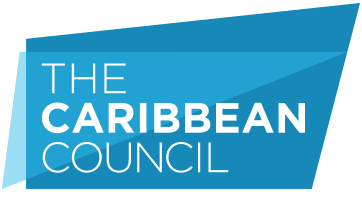
CTO upbeat about 2023 Caribbean tourism outlook
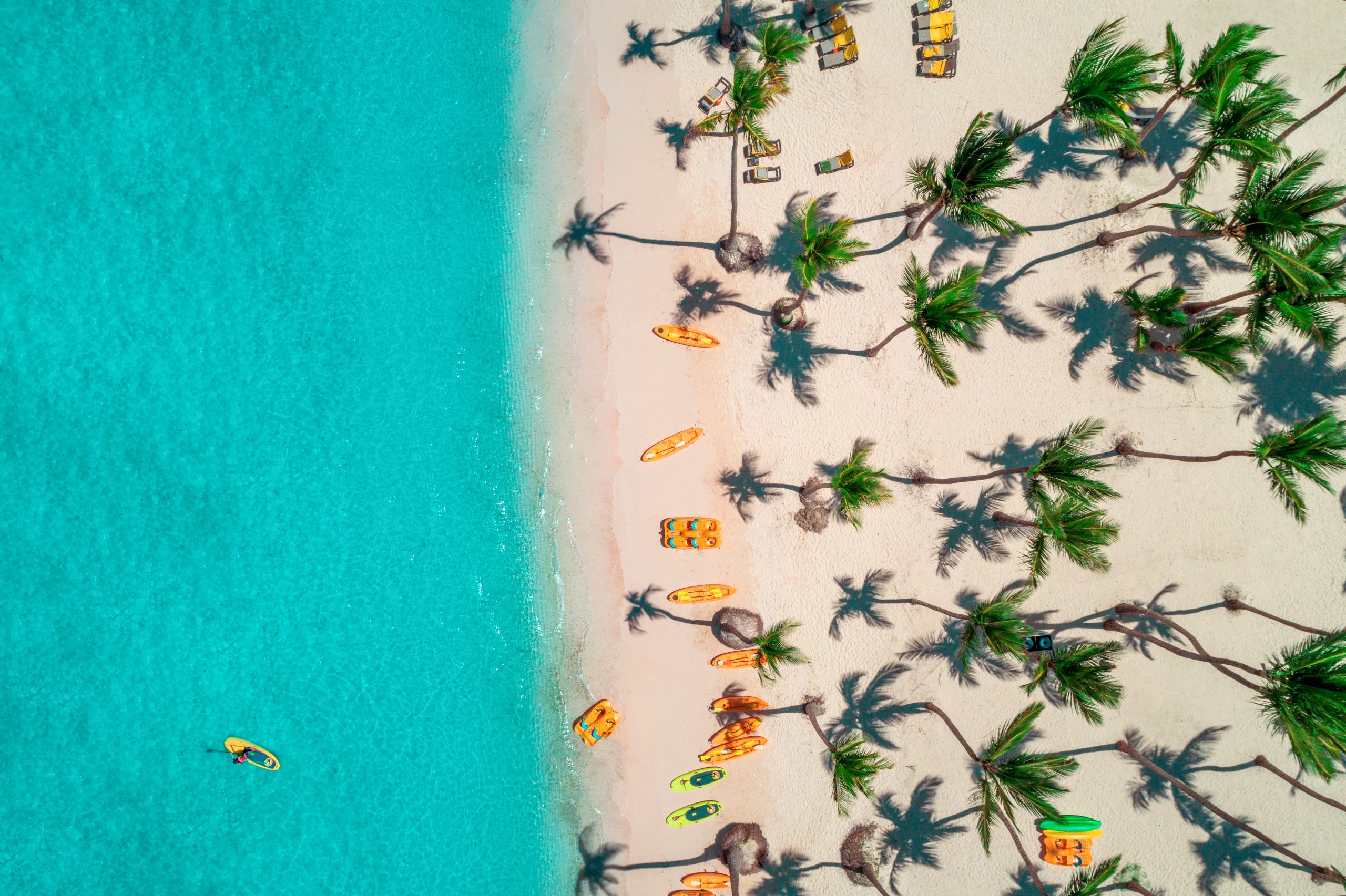
17th March 2023
The Caribbean Tourism Organisation (CTO) is voicing optimism on the region’s tourism prospects for the remainder of 2023.
Speaking in Barbados during the organisation’s launch of the 2022 “Tourism Performance and Outlook Report,” Acting Secretary General of the CTO, Neil Walters declared that the Caribbean had one of the quickest recovery rates globally.
Some 28.3mn tourists visited the region in 2022, representing 88.6% of pre-pandemic 2019 visitor arrivals. This performance was buoyed by a 28.1% increase in US tourists, reaching 14.6mn compared to the 11.4mn from that market in 2021.
The CTO noted that while travel restrictions imposed by Canada in early 2022 saw a slower 60% recovery, and major declines in intra-regional connectivity impacted the numbers, “arrivals from the European market increased by 81% in 2022 when compared to 2021”. The 5.2mn tourists from this market were almost double the 2.8mn in 2021 accounting for 18.3% of all arrivals in 2022.
The organisation attributed the improvement to shorter travel restrictions, pent-up demand, and surplus savings accrued during the pandemic, as well as “strategic marketing initiatives and the restoration of some of the airlift capacity between more markets and the Caribbean”.
“Nearly 90% of the region’s travel demand for 2019 has already been recovered,” said Walters, adding that destinations such as Curaçao, the Dominican Republic, Puerto Rico, Sint Maarten, Turks and Caicos, and the US Virgin Islands had already surpassed their pre-pandemic performance. All 27 Caribbean destinations showed an increase in annual stayover arrivals of between 8.3% and 16%.
Revenue in the sector was also up in 2022. Global data company STR reported that the average daily rate at hotels increased by 21.7% to US$290.60 in 2022 on the strength of an uptick in revenue per available room by 66.4% to US$176.46. The number of available rooms also increased by 4.4% while room income jumped by 73.6%.
All told, data estimates that visitors to the Caribbean region spent between US$36.5bn and $37.5bn in 2022, a significant increase of 70% to 75% when compared to 2021. “As a region, we have responded with hope, strength and the determination to prevail,” said CTO Council of Ministers and Commissioners Chairman and Cayman Islands’ Minister of Tourism and Transport, Kenneth Bryan.
“So, although we have not yet surpassed 2019’s numbers across the board in every jurisdiction, the needle is certainly moving in the right direction,” said Bryan as he voiced optimism about 2023.
The CTO expects that this year, the region will record a 10% to 15% bump in arrivals over its record performance in 2019, when the region welcomed 32mn land-based visitors. “This means that between 31.2 and 32.6 million tourists can be expected to visit the region this year,” said Acting Secretary General Walters.
Prospects for cruise tourism are also on the mend. “All berths in the region have reopened and are expanding. As more ships are deployed to the region, the capacity for cruises will rise and demand will stay high,” predicted Walters. He revealed that estimates put cruise tourists visiting the Caribbean in 2023 at between 32mn and 33mn, an overall increase of 5% to 10% over the pre-COVID-19 baseline.
To ensure continued recovery, the CTO said that it is focused on growing its membership, including countries, territories as well as allied partners.
“It is also my intention to strengthen the relationships with other organizations, such as the United Nations World Travel Organization, the World Travel and Tourism Council, and even the Central American Tourism Promotion Agency (CATA), to foster greater collaboration,” said Chairman Bryan, announcing the return of CTO’s Caribbean Week in New York from 5 to 8 June this year.
Bryan confirmed that consideration is being given to the restructuring of the organisation and reforming its strategic vision and direction for the next five years, which includes the appointment of a new Secretary General and addressing the vexing issue of regional air connectivity.
“It would be illogical for me to promise a solution to this issue during my tenure as chairman. But what I can and will commit to is getting the players around the table to forensically examine what we need to do as a unified region to improve this scenario and start the ball rolling towards the solution,” promised the CTO Chairman.
This is a lead article from Caribbean Insight, The Caribbean Council’s flagship fortnightly publication. From The Bahamas to French Guiana, each edition consists of country-by-country analysis of the leading news stories of consequence, distilling business and political developments across the Caribbean into a single must-read publication. Please follow the links on the right-hand side of this page to subscribe, or access a free trial .
Proud Supporters of
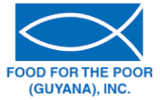
Follow Us on Social Media
Caribbean Tourism: Strong Growth in 2023 and Beyond
BRIDGETOWN, Barbados – Continuing its positive recovery trend, Caribbean tourism grew in 2023 with an estimated 14.3% increase in international stay-over arrivals to the region, the Caribbean Tourism Organization (CTO) has reported.
Delivering the “Caribbean Tourism Performance Review 2023” in Bridgetown today, Dona Regis-Prosper, Secretary-General of the CTO, shared that last year’s growth was in line with CTO’s forecast for the year, and attributed the outcome to sustained demand for outbound travel from the United States – the Caribbean’s main source market, enhanced tourism-related infrastructure within the destinations, the fulfillment of strategic marketing initiatives, and augmented airlift capacity between the region and its source markets, albeit unevenly distributed among the destinations.
The recovery of global tourism has been resilient, despite variability in the regional performances, according to Regis-Prosper, with the Caribbean surpassing pre-pandemic arrivals by a modest 0.8%, outperforming most of the main global regions in terms of recovery.
Arrival levels amongst Caribbean destinations either significantly recovered or moderately exceeded the benchmark numbers of 2019, with 11 destinations, Anguilla, Aruba, Curaçao, Dominican Republic, Grenada, Guyana, Jamaica, Puerto Rico, St. Maarten, Turks & Caicos Islands, and U.S. Virgin Islands performing better than in 2019. The majority of those recovered greater than 50% of their 2019 arrivals. In addition, multiple destinations registered new record levels for tourist arrivals in a single year.
United States and Canada Markets
For the Caribbean, only the U.S. market has fully recovered, while the recovery rates of arrivals from Europe and Canada reached 88.2% and 88.1%, respectively. An estimated 16.3 million stay-over arrivals to the region came from the United States, representing an annual growth rate of 12.7%. The performance here established a new record level of arrivals from this market and surpassed the pre-pandemic arrivals by 4.2%. The performance of the Canadian market resulted in an estimated three million Canadian tourist visits by the end of the year, an increase of 46.1% compared to 2022. Increased air service from major Canadian cities to Caribbean destinations played a pivotal role in driving up visitor numbers.
Europe, Caribbean and South America Markets
Regis-Prosper noted that arrivals from Europe to the Caribbean region were stagnant in 2023. A total of approximately 5.2 million trips originated from the market. In 2023, travel among Caribbean residents to destinations within the region increased by approximately 3.6%, a total of 1.6 million trips, which was 0.3 million more compared to 2022. This also indicated a recovery of 62.5% from pre-pandemic levels. “Despite this positive outcome, intra-regional travel remained expensive due to fragmented air service and reduced air capacity,” said Regis-Prosper. By the end of the year, trips from South America to the region surged by an estimated 14%, totaling 1.7 million trips.
Caribbean Hotel Performance
The Caribbean hotel sector experienced a remarkable turnaround in 2023, including a surge in the establishment of new hotels and resorts. According to STR, throughout the Caribbean, average room occupancy grew to 65.6% in 2023 from 61% in 2022. The average daily rate (ADR) experienced a considerable increase of 11.8% with the region’s ADR reaching US$329.37 while the revenue per available room (RevPAR) jumped 20.2% to US$215.97.
Cruise Tourism Performance
Projections indicate that the cruise sector will continue its upward track, with an estimated 34.2 million to 35.8 million cruise visits expected in the Caribbean in 2024. This anticipated expansion falls within the range of 10% and 15%.
Remarkable Resilience
Chairman of the Caribbean Tourism Organization’s Council of Ministers and Commissioners of Tourism, Kenneth Bryan, who also serves as the Cayman Islands’ Minister of Tourism and Ports, noted the remarkable resilience of the tourism industry and its ongoing recovery and growth in 2023. However, he emphasized that the industry and the region will continue to face an array of challenges, including the high cost of travel, ongoing conflicts, heightened geopolitical tensions, and their anticipated impacts, in 2024.
CTO Chairman Hon. Kenneth Bryan “Caribbean destinations remain adaptable and responsive, and the region is still highly desired by travelers for its safety and diversity of tourism products,” stated Chairman Bryan, adding that the region will also be positively impacted by key developments in 2024, including increased air capacity throughout the year, which will facilitate greater access between the destinations and some of their legacy and emerging markets.
Chairman Bryan also pointed to “intensive strategic marketing initiatives” that are being executed to attract visitors to the region to enjoy its culture and heritage, including its carnivals and festivals.
He noted that the CTO is pleased that the ICC (International Cricket Council) Men’s T20 World Cup 2024 is being hosted in several destinations bringing not only teams but also their loyal followers to the region and further raising awareness and promoting the diverse offerings of Caribbean destinations to global audiences.
“Hence, the Caribbean’s prospects appear highly promising, with more regional destinations poised to either match or surpass the arrival figures recorded in 2019. Anticipated growth is forecast to range between five percent and 10 percent, potentially welcoming between 33.8 million and 35.4 million stay-over tourists,” concluded Chairman Bryan.
South Florida Caribbean News
Related articles, 11 per cent growth in visitor arrivals in jamaica, how to prepare all the important documentation for your next trip, jamaica lifts uk travel ban starting may 1, jamaica tourist board partners with island expert travel for peek at paradise travel show in orlando.

The World Bank in the Caribbean
The Caribbean is a diverse region with significant economic potential and growth opportunities. However, the region is extremely vulnerable to natural hazards, and is facing severe economic impacts of the COVID-19 pandemic.
- Cayman Islands (U.K.)
- Curaçao (Netherlands)
- Antigua and Barbuda
- Saint Kitts and Nevis
- Saint Lucia
- Saint Vincent and the Grenadines
- Sint Maarten
- Trinidad and Tobago
- Turks and Caicos
Last Updated: Apr 14, 2023
As of April 2021, World Bank portfolio in the Caribbean (excluding the Dominican Republic ) totals US$2.6 billion in IBRD, IDA, and trust fund financing for 72 projects. In Sint Maarten , the World Bank manages the reconstruction and resilience trust fund financed by the Netherlands.
At the onset of the COVID-19 pandemic, the World Bank worked with Caribbean countries to mobilize rapid financing for health, social protection, and food security crisis response, using a variety of financing instruments. The next phase of support focuses on green, inclusive, resilient recovery measures, including strengthening social protection, reactivating economic activity, facilitating small and medium businesses, adapting to climate change, financial protection from disasters, improved debt management, and improved macro-fiscal sustainability. The World Bank assisted program remains anchored in supporting cross-cutting resilience building and climate change adaptation and mitigation, with technical assistance and investments in human capital development, fiscal sustainability, digital transformation, financial protection and disaster risk management, agriculture, renewable energy, and the blue economy. Details on the World Bank’s support to the Caribbean during the COVID-19 crisis are available in this factsheet .
The World Bank Group’s strategy in the Caribbean focuses on building cross-cutting “360-degree” resilience across four dimensions:
Human Capital Resilience
- The World Bank is supporting the Caribbean to build human capital and strengthen the resilience of health, education, and social protection systems. The World Bank has been working with Caribbean countries to enhance the preparedness of their health systems for pandemics as well as natural disasters; to improve the quality of education and health services; and to improve the coverage and targeting of social safety nets.
- In response to COVID-19, the Bank has provided rapid financing for the health response to the COVID-19 pandemic. Financing comes from the global COVID-19 Fast Track Facility, contingent financing mechanisms like Cat DDOs, development policy financing, and reallocation of existing project resources to provide immediate support. This funding for the pandemic response has helped countries procure needed supplies to detect, contain, and treat COVID-19, strengthen health systems, and expand social protection for vulnerable groups. The Bank has also provided technical assistance and project support to enhance e-learning during COVID-19 lockdowns.
- The World Bank is supporting stronger social protection systems including improving the coverage and targeting of safety nets, and through adaptive safety nets, ensuring recovery measures reach those who need them most. The World Bank is also supporting emergency social assistance programs for those who have lost jobs or been pushed into poverty due to the pandemic but are not covered by other poverty-related programs. This is particularly important as tourism, a major source of jobs and income for the Caribbean, is at a standstill.
Fiscal and Financial Resilience
- The World Bank is supporting countries in the Caribbean to strengthen their fiscal frameworks and build buffers to contain the impact of shocks through improved macro-fiscal policies, enhanced debt management, and better public financial management.
- The World Bank is supporting Caribbean countries to diversify their economies and facilitate private sector participation and especially access to finance for micro and small enterprises. The World Bank works with countries to improve the regulatory environment for private sector investments, and for financial inclusion and increased access to finance. With the onset of the COVID-19 pandemic, the Bank has been supporting countries through budget support operations, to sustain small and medium enterprises, especially in tourism-related activities, and facilitate an inclusive and resilient recovery.
- Innovative disaster risk financing mechanisms are supporting greater fiscal resilience for Caribbean economies. The Caribbean Catastrophe Risk Insurance Facility (CCRIF) is a parametric insurance facility that provides quick, short term liquidity in the event of a disaster. Since its inception, CCRIF has made payouts totaling US$197 million.
Physical and Infrastructure Resilience
- The World Bank is supporting countries in the region to strengthen preparedness including through early warning systems and projects to mitigate disaster vulnerability risks.
- The World Bank is supporting increased physical resilience through ‘Build Back Better’ principles, which are essential to reduce the economic cost of disasters and to ensure that key infrastructure and services can withstand the next storm. Infrastructure works are also generating much-needed jobs for communities during the COVID-19 pandemic.
- New engagement in transport and digital transformation is supporting increased connectivity in the Caribbean. The critical importance of digital connectivity has been highlighted by the COVID-19 pandemic.
Environment and Natural Resource Resilience
- The World Bank is helping countries in the Caribbean to develop the Blue Economy, pursue economic diversification through sustainable use of ocean resources, protect marine areas, reduce marine pollution, and repopulate coral reefs. Support is being provided for sustainable agricultural practices to boost incomes for small and medium businesses while decreasing deforestation and forest degradation. Technical assistance on nationally determined contributions (NDCs) and climate change strategies is also a core part of the World Bank’s engagement.
Last Updated: Apr 22, 2021
Natural disasters in the Caribbean region have become increasingly intense in the face of climate change. The World Bank engagement in the Caribbean has achieved these results:
- The Caribbean Catastrophe Risk Insurance Facility (CCRIF), developed under the technical leadership of the World Bank and with a grant from the Government of Japan has allowed payouts to several Caribbean countries after Hurricanes Dorian, Irma and Maria. The Caribbean Oceans and Aquaculture Sustainability Facility (COAST), is an innovative parametric insurance product developed under CCRIF specifically for fisherfolk in the Caribbean (Grenada and Saint Lucia).
- A financial package of more than US$100 million was provided for Dominica, including through the IDA crisis response window after Hurricane Irma in 2017. Contingent credit lines, known as a Cat-DDOs, were approved in 2020 for Saint Vincent and the Grenadines and Grenada, to be disbursed during a national emergency. Two days after the eruption of the La Soufrière volcano in Saint Vincent, the World Bank disbursed the US$20 million Cat-DDO to support the response to the crisis, the first large financial assistance provided to the country following the eruption.
- There are projects to support climate resilience and enhance disaster preparedness and emergency response on the islands of Dominica, Grenada, Saint Lucia, and Saint Vincent and the Grenadines. The focus is on making infrastructure more adaptable to extreme weather events and natural disasters and improving government capacity to handle disaster risks.
- In Surinam, the Saramacca Canal System Rehabilitation Project aims to support the country to reduce flood risk in the greater Paramaribo area and improve the Saramacca Canal System. It will improve the resilience against flooding by improving the ability of the Saramacca Canal to discharge water efficiently and safely, improving vessel transport, and strengthening the government’s capacity to manage and operate the canal’s drainage system.
The Blue Economy
Harnessing marine resources while preserving the Caribbean Sea can help countries address key challenges such as high unemployment, low growth, food security, poverty, and resilience to climate change.
The World Bank report “Toward a Blue Economy: A Promise for Sustainable Growth in the Caribbean” estimates that the Caribbean Sea (including mainland Caribbean coastal countries) generated US$407 billion in 2012.
Ongoing World Bank support to building environment and natural resource resilience in the Caribbean includes:
- Banning of single-use plastics and/or Styrofoam containers across the OECS;
- Creating an insurance mechanism to include the fisheries sector in Grenada and Saint Lucia;
- Building sustainable agriculture practices and competitiveness in Jamaica, Haiti, and the OECS;
- Expanding marine protected areas in Belize and strengthening protection and climate resilience of the Belize Barrier Reef;
- Preparation of a new regional blue economy project in the Eastern Caribbean to strengthen management and resilience of marine and coastal assets.
Macroeconomic and Fiscal Sustainability
The World Bank Group is working with Caribbean governments and regional partners to help Caribbean countries better manage public spending and reduce their debts to sustainable levels, while protecting poor and vulnerable populations.
- The World Bank provided Development Policy Financing to Jamaica, Dominica, Grenada, and Saint Lucia to support reforms to support the COVID-19 response and recovery.
- The World Bank is supporting Jamaica’s ambitious reforms to strengthen fiscal sustainability and inclusion, enhance fiscal and financial resilience against climate and natural disaster risks,
- In Grenada, a series of budget support operations helped private investment, improved public resource management and boosted resilience against natural disasters.
The WBG has worked with regional partners to help Caribbean countries facilitate the private sector and trade reforms, while supporting jobs and protecting poor and vulnerable populations.
- The World Bank Group is helping improve Jamaica’s competitiveness by facilitating the growth of new and existing businesses. This includes technical assistance for public-private partnerships, ranging from airports to ports, economic zones, water generation, wastewater and sewage, schools, and renewable energy.
- The World Bank Group is mobilizing private capital for strategic investments and seeking to more fully integrate Jamaica’s small and medium enterprises (SMEs) into global value chains.
- The World Bank Group is supporting diversification of the region’s power sector by increasing the production of renewables and other clean energy sources. In the Eastern Caribbean, this involves the use of commercial-scale solar photovoltaic systems on rooftops in Saint Lucia, Grenada, and Saint Vincent and the Grenadines.
- The Entrepreneurship Program for Innovation in the Caribbean (EPIC), with support from the government of Canada, has provided tailored business development support and training to more than 2,100 entrepreneurs across sectors, including in digital and climate technologies. It has also facilitated more than US$4 million in investments raised by Caribbean entrepreneurs.
- In Jamaica, the Youth Employment in Digital & Animation Industries Project is building on successful pilots in the Digital Jam and KingstOOn events, with more than 4,000 young Jamaicans engaged in digital enterprises, supporting the growth of the Jamaican animation training and industry.
- The World Bank is supporting digital development to help diversify growth and improve public services. Digital projects are underway in the Eastern Caribbean, Haiti, and Sint Maarten.
- The World Bank is promoting governance, good international practices, and sector diversification through the Suriname Competitiveness and Sector Diversification Project . By focusing on policy, legal, and regulatory reforms in the mining, agribusiness, and tourism industries, the investment will enable private sector growth opportunities, boost job creation, and benefit more than 200 small and medium enterprises. The project is also building the capacity of key institutions and enhancing business development services.
Human Capital, Inclusion and opportunities for all
Quality education, affordable health care, and equitable social safety nets are key ingredients in building inclusive societies. In the Caribbean, several countries have launched innovative efforts to provide the most vulnerable, including children, with the knowledge, skills, and health they need to excel.
- Jamaica’s comprehensive National Strategic Plan for early childhood development is the first of its kind in the region. Jamaica is one of the few countries in the region that guarantees free pre-primary education and has the highest proportion of children enrolled in preschool. The World Bank supported the scaling-up of early childhood development services to help improve parenting, care, and school readiness for children from birth to six years of age, and to provide diagnosis and early stimulation for children at risk.
- In Guyana, the World Bank has provided long-standing support in the area of education spanning from early childhood to primary and secondary education, all the way to the University of Guyana. Curricula reform and research programs have included significant contributions from the main indigenous groups.
- In Saint Vincent and the Grenadines, support was provided to help 13,000 students and 2,000 teachers adapt to schooling during the COVID-19 outbreak. The World Bank worked with the Government to develop a COVID-19 Action Plan to guide safe reopening. School safety assessment and disaster plans were also revised to ensure that schooling could resume as soon as possible after an emergency.
- In 2021, the Bank adjusted its program to support COVID-19 response and recovery in OECS countries. The program in the region had a strong focus on building cross-cutting resilience across the fiscal/financial, infrastructure, human capital, and environmental dimensions. Hence, the active portfolio was already well placed to respond to the pandemic response priorities, including through the activation of Contingency Emergency Response Components (CERCs). Moreover, the Bank reprioritized the IDA program to support COVID-19 response and recovery, closely aligned with the Bank’s COVID-19 Crisis Response Approach on “Saving Lives, Scaling-up Impact and Getting Back on Track”.
- In Haiti, the World Bank supported improved nutrition through the provision of 5,100,000 school meals were provided to 170 public 60 community schools during the 2019-2020 school year. During the school closures caused by the COVID-19 pandemic for the months April-June 2020, 62,000 take-home food rations were provided to 82,000 students in 230 projects supported schools.
- Through a series of projects in the health sector, the World Bank has supported Haiti to contain the outbreak of cholera, through mobile rapid response teams, community-based support, and increased capacity for disease surveillance. There have been no new laboratory-confirmed cases of cholera since January 2019.
Last Updated: Oct 19, 2022
Haitian school children attend school for free, as part of the Bank's support to the Education for All project.
- Show More +
- Suriname Country Partnership Strategy
- Suriname Performance and Learning Review
- Show Less -
AROUND THE BANK GROUP
Find out what the Bank Group's branches are doing in the Caribbean.
STAY CONNECTED

Brochure: Inside the Caribbean
Learn about our work in the Caribbean

Towards a Blue Economy
A promise for sustainable growth in the Caribbean
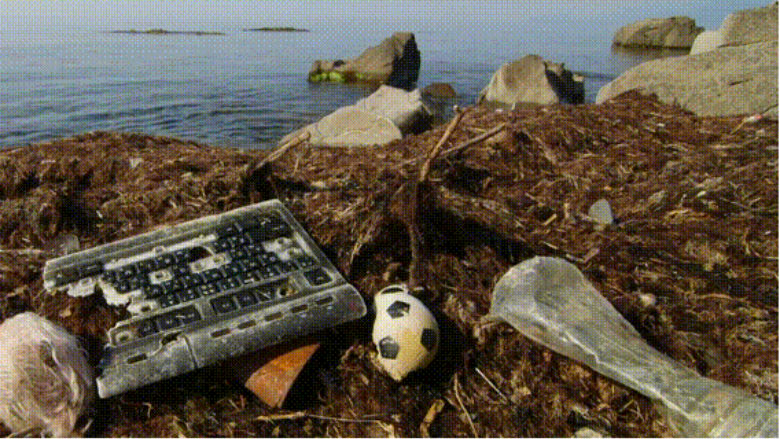
Marine Pollution in the Caribbean: Not a Minute to Waste
Report Calls for Urgent Action to Tackle Marine Pollution, A Growing Threat to the Caribbean Sea
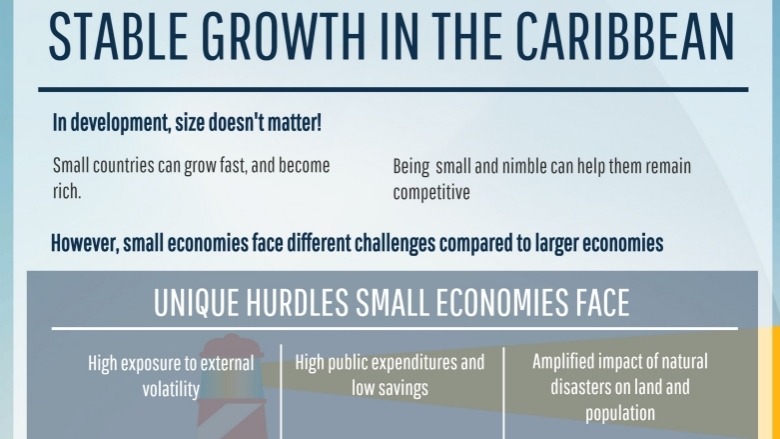
Open and Nimble
Finding Stable Growth in Small Economies
Additional Resources
Country office contacts.
This site uses cookies to optimize functionality and give you the best possible experience. If you continue to navigate this website beyond this page, cookies will be placed on your browser. To learn more about cookies, click here .
Promoting Sustainable Development through Tourism in the Caribbean
Adam ratzlaff, alejandro trenchi.

Photo by makenzie cooper on Unsplash
December 7, 2023
The Caribbean is reliant on tourism to keep the regional economy growing, but the cruise industry reaps most of the benefits and reliance on tourism also makes the region vulnerable to climate impacts. These are problems that can solve one another, write Alejandro Trenchi and Adam Ratzlaff.
N Secretary General António Guterres has called the Caribbean Basin “ ground zero ” for the impacts of climate change. While countries in the region have a relatively small carbon footprint , the Caribbean will feel the impacts of climate change more acutely than other regions—particularly in the short term. At the same time, regional economies are heavily dependent on the tourism industry, which are also dependent on the Caribbean as part of their business model. Rethinking how tourism is conducted in the Caribbean and developing public-private partnerships will not only strengthen resilience critical for Caribbean nations and the tourism industry, but also support sustained economic development.
With stunning scenery, pleasant tropical weather, rich cultural heritages, and proximity to the North American market, tourism represents a significant and lucrative economic sector for the Caribbean. The decline of the Caribbean’s agriculture industry in the 1980s prompted tourism to become the region’s undisputed economic driver. While in 1970 the region received roughly 4 million visitors, it now receives approximately 28 million visitors annually. Today, tourism accounts for 13.9% of the regional GDP as well as 15% of regional employment.
Despite the importance of tourism to the regional economy and the growth in the number of visitors, the impact of growing tourism in the region has declined as the relative importance of the cruise industry in the region has expanded. According to the Caribbean Development Bank, while real tourist expenditure grew from $6.8 billion in 1989 to $13.1 billion in 2014, the average expenditure per visitor declined by 30.1%. Some of this is due to the growth of the cruise industry in the region. While a long-stay tourist spends approximately one week in their destination, a cruise passenger only stays one day in the country of arrival—with many choosing to stay aboard the ship. On average, a cruise ship tourist spends 94% less than a long-stay tourist. The result is fewer economic opportunities for local economies.
The Caribbean’s Climate Vulnerability
This reliance on tourism makes the Caribbean extremely vulnerable to external shocks, raising doubts about the region’s ability to provide long-term, sustained economic growth. While the region’s economy shrank as a result of both the 2008 financial crisis and COVID -19, the region is particularly susceptible to climate change and natural disasters—particularly hurricanes which have devastated regional economies. Scientists expect that more devastating hurricanes, droughts, heat waves, and other climate change-related events will pose increasing threats to the region. The danger of climate change and worsening natural disasters is not only a problem for the governments and peoples of the Caribbean but also for the private sector. Companies will face greater risks and may lose out on important business. The threat of more devastating hurricanes as well as biodiversity loss poses significant concerns for the profitability of Caribbean tourism. Extreme weather events and pollution endangers the region’s most valued tourism assets such as coral reefs, beaches, and tourism infrastructure including ports.
Given these concerns, it is vital for the private sector to engage with regional governments to strengthen climate resilience and climate-proof their businesses. While this should be done across the private sector, the cruise industry should play a leading role in supporting these efforts given that the Caribbean represents approximately 43% and 46.7% of total cruise passengers in 2019 and 2022, respectively. While cruise lines note that they have taken important steps, more can be done.
One way that governments and the cruise industry can collaborate to develop public-private partnerships is to increase the amount of time that cruise ships spend in port rather than traveling between destinations. By leveraging the positions of cruise ships as portable hotels, cruise lines can encourage individuals to arrive via alternative means and provide the opportunity for guests to spend greater time on location.
The Caribbean remains among the world’s most indebted regions—with an average public debt to GDP ratio of 90.8% in 2021. In addition to its high debt, the region’s middle-income status places further structural constraints both in terms of financial and human capacity to boost resilience and economic growth, and policy makers need to implement innovative solutions to not only boost the tourism industry’s resilience, but increase its competitiveness and secure long-term inclusive economic growth. Cruise lines can leverage their access to international finance to develop public-private partnerships that invest in key infrastructure.
While climate change represents an existential threat, there is a window of opportunity to reimagine how tourism works in the Caribbean with an eye toward a more profitable, sustainable, and equitable future. Looking for partnerships between Caribbean governments and the cruise sector may provide an important space to ensure more equitable development in the Caribbean while also ensuring that the cruise industry does not lose its most valuable asset—the locations of its cruises.
Editors’ Note: This article was included in our COP 28 special edition, which was published on November 21, 2023, and which you can find here . All articles were written with that publication time frame in mind.
a global affairs media network
www.diplomaticourier.com
Sustaining youth climate activism at COP and beyond
The resilience and potential of nuclear energy, addressing institutional weaknesses in climate–vulnerable south asia, newsletter signup.
- Fitch Solutions
CreditSights
Fitch learning, fitch ratings research & data, sustainable fitch.
- BMI Platform
- BMI Geoquant
- Fitch Connect
Caribbean Tourism Growth To Decelerate In 2024, Weighing On Regional Economies
Country Risk / Caribbean / Mon 18 Sep, 2023

- We are expecting growth in the Caribbean region to slow in 2024, after experiencing a solid two-and-a-half years of growth after the end of Covid lockdowns.
- The expected recession in the United States beginning in Q224 will lower demand for Caribbean tourism, dragging down growth across the region.
- Past 2024, we expect a rebound driven in part by the tourism recovery, and see regional growth at approximately 2.4% (2023-2028).
We are expecting growth in the Caribbean region to slow in 2024, after experiencing a solid two-and-a-half years of growth after Covid lockdowns were lifted. As the United States economy slows down in Q224 , we expect a slowdown in demand for Caribbean tourism from the US consumer. This in turn will drive down growth across the region, as US tourism is a major driver of growth in most markets. The charts below show our expectations for a region-wide slowdown from 2.2% in 2023 to 1.7% in 2024. As we expect the US recession to be short and relatively mild, we see growth in the region rebounding to 2.3% in 2025, above the pre-Covid average of 1.7% (2015-2019).
Historically, tourism has been a major contributor to the GDP of Caribbean economies. As of 2021, Statista reported that travel and tourism brought in USD39.3bn towards Caribbean GDP, approximately 12.5% of overall Caribbean GDP, with the largest tourism markets being the Dominican Republic, followed by Cuba, Puerto Rico, the Bahamas, Jamaica and Aruba. We note that this 12.5% figure is dragged down somewhat by the Dominican Republic and Puerto Rico, with smaller markets being much more reliant on tourism. For example, before the pandemic tourism made up 67.9% of GDP in Aruba, 42.5% in the Bahamas and 29.1% in Jamaica compared to 15.9% in the Dominican Republic, 9.9% in Cuba and 5.6% in Puerto Rico ( see chart below ). The strong reliance on tourism makes these markets exceptionally vulnerable to any shocks, as was clearly demonstrated in 2020-21. While these figures dropped during the lockdown period, we expect these proportions to stay near historical norms in the next few years – with the exception of Cuba, which will likely not see a tourism rebound due to severe structural challenges.
Beyond the six largest markets mentioned above, we want to highlight that some of the smallest island economies in the regions, such as those belonging to the Organisation Of Eastern Caribbean States, are even more reliant on tourism, with travel and tourism contributing more than 40.0% of GDP in places like Antigua and Barbuda, St. Lucia, Anguilla, the British Virgin Islands, St. Kitts and Nevis and Grenada. This makes them even more vulnerable to disruptions such as US economic downturns, hurricanes, recessions and pandemics.
Caribbean Region Vulnerable To Disruptions To Growth From Vital Tourism Sector
Caribbean – % contribution to gdp from travel and tourism sector (2019).
During the post-pandemic period we have seen an uneven recovery with strong travel rebounds in some countries and slower tourism growth in others, with most seeing peak arrivals in 2022. Even as tourism has generally returned to pre-pandemic levels, in the last few months we have seen either a tapering off or a reduction of new arrivals. This has been the case even as airline fares came off historic highs ( see chart below ).
Airline Fares Off Historic Highs In Q223
Us – consumer price index growth, % y-o-y, airline fares in u.s. city, average.
The map and chart below show the percent change in arrivals in Q223 compared to the same period in 2019, and indicate a mixed recovery. We expect the picture to deteriorate as we move into 2024. We want to note that there are a variety of factors for the variance in rebound rates. Some Caribbean islands are easier to access from the US and other major tourism markets, some had Covid lockdowns for longer, and yet others have internal problems such as crime or political protests (in the case of Cuba). In the months ahead, we expect to see slower demand from the US consumer across the board, as the US economy begins shedding jobs.
Currently, among the largest tourism markets the Dominican Republic had the healthiest recovery of the major markets with arrivals at 17.0% above pre-Covid levels as of Q223 ( see chart and map below) , surpassing 700,000 arrivals in July 2023 alone. The country is on track for its highest-ever total of annual visitors, benefiting from relatively inexpensive all-inclusive resorts that are easily accessible from the United States.
Post-Covid Caribbean Tourism Recovery Peaked In 2022
Caribbean – arrivals compared to the period level in 2019 (% change).
Aruba likewise saw very strong growth with arrivals up 16.0% from 2019 due to a healthy influx of US and European tourists. Meanwhile, at 4.0% above 2019 levels, Puerto Rico (which only has data through end-2022) is lagging behind its peers. Although tourism makes up only a relatively small percentage of Puerto Rican GDP, it remains a very popular destination for US visitors, as it does not require a passport and has multiple accessible flights. Much like the Dominican Republic, we expect this will leave it particularly exposed to the US’s 2024 slowdown. Aruba, by contrast, may not see the same level of slowdown as it receives a sizeable proportion of tourists from outside of the United States.
We saw tourism recoveries slow down in Jamaica and the Bahamas in 2022, with this trend likely to continue next year. Jamaica, which has arrivals at 2.0% above pre-Covid levels, has seen a resurgent crime wave, with a travel adivsory issued by the US Department of State in May 2023 that is still in effect. The Bahamas are 6.0% below 2019 arrival levels as of Q223. Both Jamaica and the Bahamas have reported some struggles in terms of hiring enough labour for the resurgent post-Covid travel boom.
Finally, Cuba’s tourism recovery has been extremely slow since the lifting of Covid restrictions, in part due to the partial loss of the Russian tourism market due to the war in Ukraine. Additionally, Cuba’s attractiveness as a travel destination has been marred by a number of internal crises including including shortages of electricity and basic goods and political protests. Consequently, arrivals remain 49.0% below 2019 levels as of Q223.
Although we are expecting stronger growth in the region beginning in 2025, as the tourism sector fully bounces back, we note that there are multiple factors that threaten Caribbean growth in the years ahead. Even as most of the Caribbean tourism sector has not yet fully recovered from the effects of the pandemic, it remains vulnerable to external shocks from business cycle downturns as well as public sentiment on issues such as crime given rising murder rates. The region also has vulnerabilities from its strong dependency on fuel imports. Finally, the region remains exceptionally vulnerable to weather-related events such as hurricanes and other storms. Though a number of countries in the region have invested in infrastructure development to protect from climate-related events, on the whole the region will continue to remain beholden to the success of the tourism sector for growth.
This commentary is published by BMI, a Fitch Solutions company, and is not a comment on Fitch Ratings Credit Ratings. Any comments or data included in the report are solely derived from BMI and independent sources. Fitch Ratings analysts do not share data or information with BMI. Copyright © 2023 Fitch Solutions Group Limited. All rights reserved. 30 North Colonnade, London E14 5GN, UK.
Thank you. Your download link will be emailed to you shortly.
Please complete to access all articles on fitchsolutions.com.
Thank you for registering. To read the article please click on the link we have sent to your email address.
Get to know the business behind the products. Meet some of our key people and explore our credentials.

Sustainable Fitch Wins "Best Specialist ESG Ratings Provider" and Recognised as Runner-Up in “Most Innovative ESG Product” Category at the ESG Investing Awards

Fitch Group Completes Acquisition of Bixby

GeoQuant Wins Most Innovative Technology Vendor – AI & Machine Learning at American Financial Technology Awards
- Early Talent
Know what you need but not sure where to find it? Discover how we can meet your requirements.
- Countries & Regions
- Industries & Sectors
- Companies or Entities
- Issues, Deals & Transactions
Explore knowledge that cuts through the noise, with award-winning data, research, and tools.
- Country Risk
- Industry Research
- Operational Risk
- Fitch Ratings Data & Research
- Fitch Credit Ratings Data
- Fitch Ratings Credit Research
- Fitch Ratings ESG Relevance Scores Data
- Fundamental Data & Analytics
- Bank Scorecard
- Basel III - SCRA Data
- CDS Implied Credit Scores
- Financial Implied Credit Scores
- Fitch Connect News
- Fundamental Data
- Leveraged Finance Intelligence
- Covenant Review
- LevFin Insights
- PacerMonitor
- CreditSights
- Risk Products
Browse over 2,000 research reports at the Fitch Solutions Store .
- Country Risk Reports
- North America
- Latin America
- Middle East
- Industry Reports
- Special Reports
- Browse All Reports
Know what you need but can't find it?
BMI has a 40- year track record of supporting investors, risk managers and strategists. We help them identify opportunities and quantify risks in markets where reliable information is hard to find and difficult to interpret. This includes in-depth insight and data, and high frequency geopolitical risk indicators.
CreditSights enables credit market participants to manage financial risk better with independent credit research, global market insights, covenant analysis, and news, distilling market noise into actionable investment ideas.
dv01 provides true transparency in lending markets, and valuable intelligence on every consumer loan in the structured finance world, through a leading data intelligence platform.
Fitch Learning develops the future leaders of the financial services industry and drives collective business performance. We do this by utilizing a best-in-class technology platform and blended learning solutions that maintain the personal element of development.
We help credit, risk, and investment professionals make better-informed decisions and meet regulatory requirements, within and beyond the rated universe. We do this by providing differentiated perspectives and in-depth expertise through Fitch Credit Ratings, Fitch Ratings Credit Research, Fundamental Financial Data, and innovative datasets, all backed by transparent methodologies, accessible analysts, and workflow-enhancing analytical tools.
Sustainable Fitch delivers human-powered sustainability Ratings, Scores & Opinions, as well as Data & Research to serve the needs of fixed income investors. Our specialists uniquely deconstruct the complex issues of E, S, and G globally.
ESG Relevance Scores Data
Access ESG Scores on more than 10,000 entities and transactions, and over 140,000 ESG data points to support your credit risk assessments.
Get to know the company behind the products, our values and our history. Meet some of our key people and explore our credentials.

AfCFTA Implementation Could Boost African GDP by up to 4.2% by 2035, Says CFCA Insights/BMI Report
Geoquant wins most innovative technology vendor – ai & machine learning at american financial technology awards.


BMI Wins Best Index Data Provider at Data Management Insight Awards USA
- Work with Us
Explore our latest views on risks and opportunities by industry, region or topic.

Implications Of South Africa’s Possible Election Outcomes For Agribusiness

Norway's New Data Centre Regulation Unlikely To Alter Its Growth Trajectory

Quick View: Singapore Cable To Bolster Vietnam’s Cloud Hub Ambitions

Americas Telecommunications Insight (March 2024)

Middle East & Africa Mining Insight (March 2024)

Americas Pharma & Healthcare Insight (March 2024)
- BMI Key Themes 2024
- Russia-Ukraine Crisis
- Agribusiness
- Consumer & Retail
- Consumer Electronics
- Food & Drink
- Information Technology
- Infrastructure
- Medical Devices
- Oil & Gas
- Pharmaceuticals
- Telecommunications
- More Industries
Learn more about the BMI products and services that empower you to make critical business decisions with confidence.
- Politics & GeoQuant
- Reports Store
- Reference Manager
- Simple TEXT file
People also looked at
Original research article, are there limits to growth of tourism on the caribbean islands case-study aruba.

- 1 Sustainable Island Solutions through Science, Technology, Engineering and Mathematics or (SISSTEM), Faculty of Arts and Sciences, University of Aruba, Oranjestad, Aruba
- 2 Division of Geography and Tourism, Department of Earth and Environmental Sciences, Faculty of Sciences, KU Leuven, Leuven, Belgium
Mass tourism is a major driver of economic growth in the Caribbean. One major trade-off of this economic growth model is the loss of natural areas due to tourism activities and increasing urbanization. Aruba is one of the most tourist intense destinations within the region with a total of 1.1 million stay-over tourists in 2019. Moreover, this island has one of the largest population densities in the Caribbean and high-speed urbanization takes place in this formerly rural island state. Therefore, this study aims to assess the islands' carrying capacity in relation to its limited land resources by means of a geospatial methodological analysis coupled with a correlation analysis between socio-economic indicators and statistics. First, the past and present drivers and characteristics of urbanization are analyzed. Second, the correlation between socio-economic indicators and the number of tourists was assessed. Third, two future scenarios were developed to assess the maximum carrying capacity. From 1986 till 2020, Aruba's built environment increased from ~29–60 km 2 and translates to one-third of the island. Expansion was characterized by sprawl in the earlier years and changed to infilling in the latter. Furthermore, the results indicate that all socio-economic indicators are strongly positive correlated to tourism. Lastly, the possible maximum physical carrying capacity for yearly visitors and number of inhabitants was calculated to be ~1.7 million and 150.000, respectively. We conclude that the proposed methodological framework is robust and adequate to serve as a low budget decision-making tool for sustainable tourism development on islands.
1 Introduction
Sustainable tourism, a field that emerged about three decades ago in response to the detrimental impacts of the rapidly expanding travel and tourism industry ( Zolfani et al., 2015 ), has grappled with a persistent lack of consensus regarding its definition since its inception ( Butler, 1999 ; Higgins-Desbiolles, 2018 ). The ongoing ambiguity in defining sustainable tourism stems from diverse perspectives within key disciplines and frameworks that address this multifaceted subject ( Hardy et al., 2002 ; Lu and Nepal, 2009 ; Zolfani et al., 2015 ; Budeanu et al., 2016 ). Consequently, the interpretation of sustainable tourism relies heavily on the theoretical lenses and methodologies applied within various scholarly contexts. Within this study the definition by Butler (1999) – “tourism which is in a form which can maintain its viability in an area for an indefinite period of time” – is used. This definition implies a balance between economic development, environmental protection, and social equity.
While sustainable tourism has been a prevailing topic for over three decades, recent years have brought forth two novel concepts that have become critical issues for the world's major tourist destinations: overtourism and mass tourism. As defined by Capocchi et al. (2019) , overtourism pertains to a tourism model that adversely affects the quality of life for local residents, with congestion and environmental degradation being directly linked to the level of visitation ( Peeters et al., 2018 ; Dodds and Butler, 2019 ). On the other hand, mass tourism involves accommodating a substantial number of tourists, and though it doesn't inherently imply negative impacts, poorly managed mass tourism can still lead to environmental and cultural degradation ( Vainikka, 2013 ; Hernández et al., 2016 ). These concepts universally suggest the necessity of defining limits for various tourism models to achieve sustainability. To address the associated concerns, one effective approach is to evaluate the carrying capacity.
The concept of carrying capacity relates to early approaches of the “limits to growth” theory ( Meadows et al., 2005 ), which refers to the maximum level of visitor activity that an area can sustainably accommodate without causing irreversible environmental degradation or compromising the quality of the visitor experience ( Saarinen, 2015 ). In destinations experiencing high tourist influxes there is a strong strain on natural resources, infrastructure, and local communities. This can lead to overcrowding, environmental degradation, and social tensions ( Chakraborty, 2021 ). The theory highlights the necessity of recognizing and respecting the finite capacity of destinations to absorb tourism pressures, advocating for responsible tourism practices that prioritize environmental conservation, and socio-cultural integrity ( Saarinen, 2015 ; Bambrick, 2018 ; Hayward, 2021 ). By acknowledging and managing these limits to growth, destinations can strive toward achieving sustainable tourism development that balances economic gains with the carrying capacity of the natural and cultural environment.
The Mediterranean region stands out as a focal point where the previously mentioned concepts have undergone thorough examination. Diverse studies within this region encompass a broad spectrum of topics, such as the study conducted by Leka et al. (2022) . Their work delves into the Tourism Carrying Capacity (TCC), proposing it as a decisive tool for the sustainable management of densely populated coastal areas in Mediterranean islands. Utilizing the Pressure-State-Response framework, the suggested TCC method primarily focuses on environmental and manmade dimensions, incorporating predominantly tourism-specific variables.
Similarly, Vandarakis et al. (2023) utilized 17 indicators to evaluate and enhance the tourism attractiveness of the South Aegean region in Greece. These indicators were strategically categorized to represent physical-ecological, social-demographic, and political-financial contexts, aiming to address over-tourism's impact, alleviate natural environmental degradation, and foster sustainable development.
Other notable studies, such Zacarias et al. (2011) and Cupul-Magaña and Rodríguez-Troncoso (2017) , have concentrated on Carrying Capacity (CC) within specific locations, such as protected areas or beaches. Their focus is on assessing potential impacts on ecological, social, and cultural environments. Tejada et al. (2009) employed geomorphological and socio-economic indicators, including beach stability, coastal morphodynamics, land use, and land use change, to evaluate the physical carrying capacity of coastal tourist destinations.
Given the maturity of the Mediterranean as a tourist destination, extensive data has been accumulated, resulting in data-driven and qualitative CC models. However, these models, while straightforward, are not directly applicable to the Caribbean region due to a scarcity of data. Hence, this paper introduces a robust and low-budget geospatial methodological analysis, specifically tailored to assess the carrying capacity of islands and regions heavily reliant on tourism in the Caribbean utilizing existing satellite data, socio-economic indicators and statistics.
1.1 The Caribbean
Mass tourism is a major driver of economic growth in the Caribbean ( Cannonier and Burke, 2019 ). According to the World Tourism Organization (2018) tourism accounts overall for more than forty percent of the GDP shares in the Caribbean. This started after World War II when most of the islands strived toward self-sufficiency and self-reliance by reducing the export of agricultural crops with “high value” export services such as tourism, domestic manufacturing, or exploiting mineral resources like bauxite or petroleum ( Marshall, 1982 ). Additionally, aviation accessibility to middle-class North Americans and Europeans expanded in the 1980s and expanded further in the 1990s with the availability of sea cruises ( Wong, 2015 ). In 2019 the Caribbean islands hosted a total of 24 million stay-over tourists ( World Tourism Organization, 2023 ), Figure 1 depicts the total stay over visitors per country.
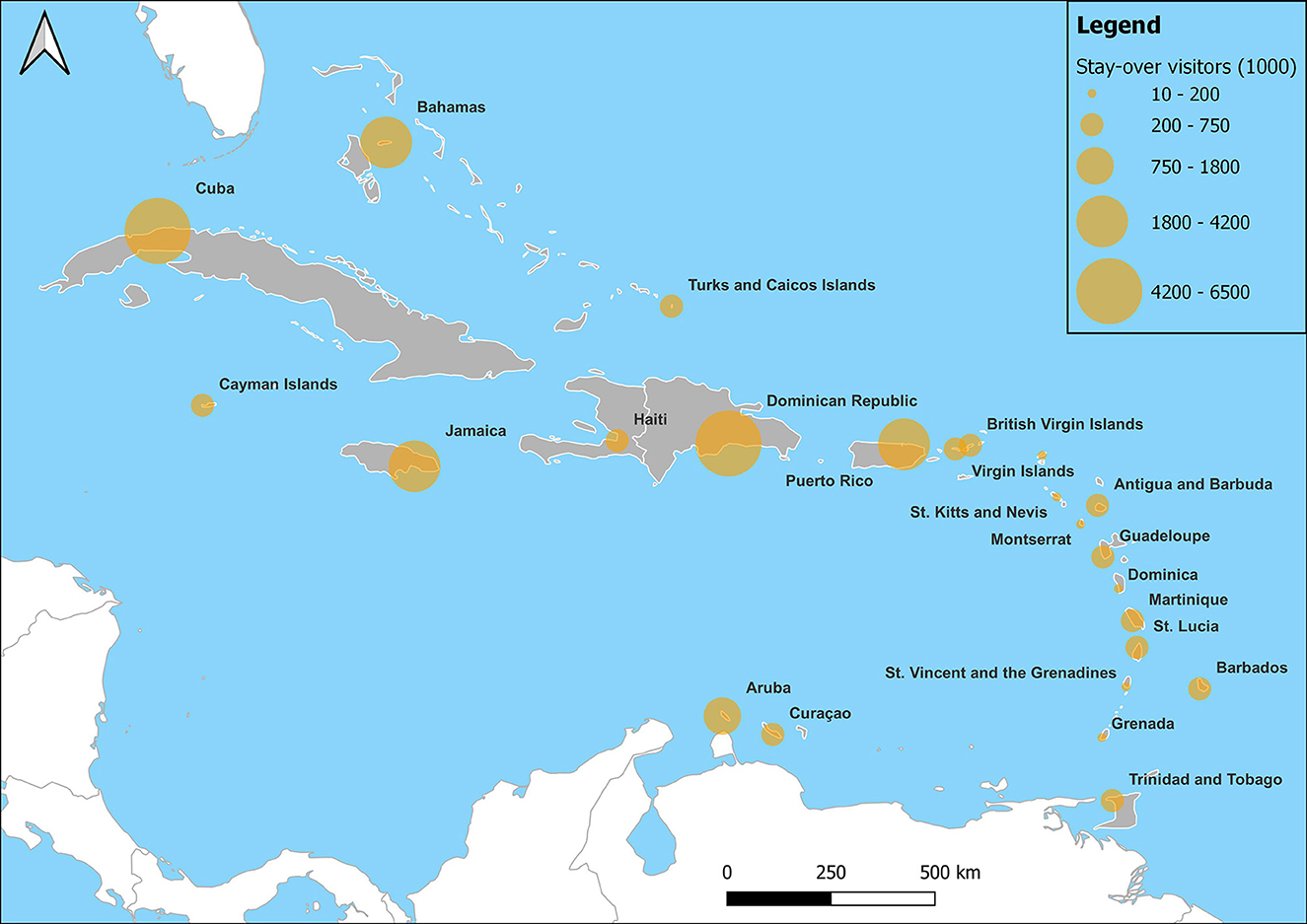
Figure 1 . Overview of the total number of stay-over visitors in Caribbean countries in 2019.
Unfortunately, economic growth caused by tourism is often accompanied by negative social and environmental impacts ( García-Ayllón, 2015 ; Briguglio and Avellino, 2019 ). One major trade-off is urbanization and the loss of natural areas, especially in small island states (SIS). Most islands environments have been largely impacted by their colonial history of serving as agricultural supplier for their colonizers. So, the islands are already at a disposition regarding environmental degradation ( Pantin, 1999 ).
With tourism, islands unbeknownst continued extracting valuable resources from their environment. Unlike other well-known extractive activities such as mining and logging, tourism exhibits both direct and indirect impacts. The direct impact manifests as ecological damage, while the indirect impact manifests as the loss of cultural heritage ( Bambrick, 2018 ; Hayward, 2021 ). For instance, the construction of hotels, resorts, and transportation infrastructure often requires significant land use changes. This can result in the displacement of communities, loss of agricultural land, and changes to the natural landscape ( García-Ayllón, 2015 ; Drius et al., 2019 ). Similarly, the influx of tourists contributes to increased waste generation, including plastic waste, litter, and pollution, which in the case of islands can lead to further environmental degradation ( Mohee et al., 2015 ). The work by, both, Loperena (2017) and Herva et al. (2020) provide great examples of tourism as extractive activity. With the extractive tourism activities the focus is often more on the economic outputs and less on the environmental impact ( Hayward, 2021 ). According to Loperena (2017) this includes activities like outward-oriented production or marketing of natural and cultural resources for external consumption.
The present study focuses on Aruba as one of the smallest islands in the Caribbean. In 2019 Aruba received a total of ~1.1 million stay-over visitors ( Centrale Bank van Aruba, 2022 ). Combined with a size of ~180 km 2 , the island ranks as one of the most tourist intense destinations of the region ( Figure 2 ). During COVID-19 Aruba was one of the hardest hit economies, due to its strong reliance on tourism ( International Monetary Fund. Western Hemisphere Dept, 2023 ). Over the past 2 decades multiple scholars have addressed the question whether the island has reached its carrying capacity due to the employed tourism model. In early 2000, the focus was on developing an environmental assessment method to preserve the natural landscape from further degradation by tourism activities ( Schilstra and van Belle, 2003 ). Next, the carrying capacity was addressed in relation to sustainable tourism ( Cole and Razak, 2009 ; Department of Economic Affairs, C. and I. of A., 2020 ). In 2020, Peterson addressed the carrying capacity from a political-economic perspective in relation to community wellbeing and over-tourism. The main conclusion drawn from those studies is that Aruba's mass tourism model needs to be adapted to combat further environmental and cultural degradation. The carrying capacity was never addressed in relation to limited land resources. According to Ratter (2018) , the overshot of an island's carrying capacity can result from over-exploitation or degradation of already limited natural capital. Therefore, this research addresses the island's carrying capacity through a comprehensive approach that integrates geospatial analysis with correlation assessments of socio-economic indicators and statistics concerning available land resources. Here we consider available land as a finite natural resource and focus on the morphological aspect of urbanization, thus concentrating on the urban form in terms of total square kilometers of manmade structures. The research poses three key questions: (1) What are the past and present drivers and characteristics of land use change in Aruba? (2) How do different socio-economic indicators correlate to the influx of stay-over tourists? (3) What constitutes the potential maximum capacity for tourists on the island under different development scenarios?
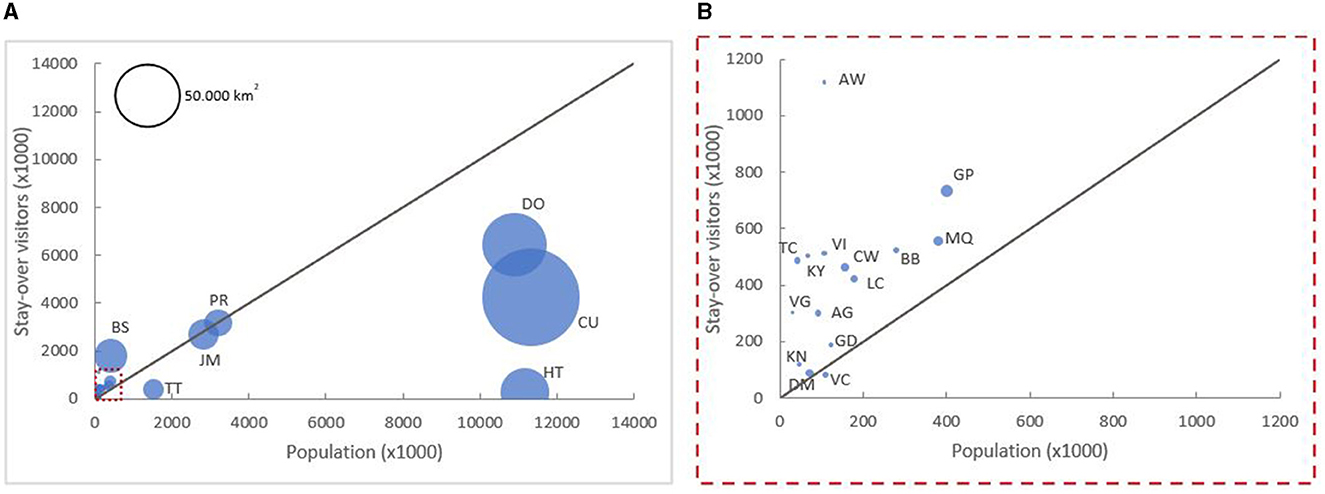
Figure 2 . (A) Bubble plot relating total number of stay over visitors to population per Caribbean country in 2019. The bubble size represents the relative area. (B) Demonstrating the relatively high number of stay over tourists per head of the population and per surface unit (AI, Anguilla; AG, Antigua and Bermuda; AW, Aruba; BS, The Bahamas; BB, Barbados; VG, British Virgin Island; KY, Cayman island; CU, Cuba; DM, Dominica; DO, Dominican Republic; GD, Grenada; GP, Guadeloupe; HT, Haiti; JM, Jamaica; MQ, Martinique; MS, Montserrat; CW, Curaçao; PR, Puerto Rico; KN, St. Kitts and Nevis; LC, St. Lucia; VC, St. Vincent and the Grenadines; TT, Trinidad and Tobago; TC, Turks and Caicos islands; VI, Virgin Islands).
The initial question aims to unravel the island's developmental trajectory by quantifying the expansion of manmade structures over the years. The second question delves into understanding the catalysts behind these changes and how they align with the evolution of tourism on the island. Building on these insights, the final question seeks to assess the plausible maximum capacity, providing valuable perspectives for sustainable tourism planning and management.
Based on aforementioned discussion, this paper is structured as follows: Section 2 presents the study area, encompassing Aruba's, natural landscape, the tourism system, and the historical land use changes. Subsequently, Section 3 attempts to establish the proposed methodological framework, while Section 4 presents the obtained results. Finally, section 5 discusses the results and draws key conclusions.
2 Study area
2.1 natural landscape.
Aruba is a small island state situated in the Caribbean Sea at ~20 miles north of the coast of the Paraguaná Peninsula, Venezuela. Its latitudes are 12°25' - 12°25'30” and longitudes 69°52' - 70°04'. The island is 31 km long and 9 km wide and has a surface area of ~180 km 2 . The climate is semi-arid and largely characterized by varying annual rainfall between 400 to 900 mm. The average temperature fluctuates between 27° in the coldest months, December to February, and 32° in the summer months from July to August ( Van Den Oever, 2000 ; Derix, 2016 ).
The Northeastern coastline is characterized by a rocky coast alternating between cliffs, dry riverbeds, and small sandy beaches, whilst the Southwestern coastline is characterized by beautiful long sandy beaches and fossilized limestone terraces ( Schmutz et al., 2017 ). Furthermore, the island is continuously exposed to the north-east trade winds, resulting in higher wave energy on the rocky coast compared to the calmer southeastern sandy beaches ( Van Den Oever, 2000 ; Fitzpatrick, 2015 ; Schmutz et al., 2017 ).
2.2 Tourism model
According to Cole and Razak (2009) , Aruba's tourism has long been centered on the irresistible appeal of “sun, sand, and sea.” This allure is fostered by a harmonious blend of favorable climate, pristine beaches, a well-established tourism sector, robust public security measures, local entrepreneurial initiatives, a warm and welcoming atmosphere, and a substantial migrant population. With a notable level of foreign investment and control, Aruba has successfully developed a competitive tourism industry, underscored by its distinctive “One Happy Island” branding slogan ( Schmutz et al., 2017 ; Peterson, 2020a ).
The island's activities and attractions predominantly revolve around outdoor experiences, featuring a spectrum of watersports such as snorkeling, scuba diving, and windsurfing. Additionally, visitors can partake in off-road sightseeing tours, explore natural wonders like Arikok National Park, and visit cultural sites like Alto Vista Chapel.
In terms of tourism source markets, the United States holds a prominent position, serving as the primary source and contributing to 84% of the total stay-over visitors in 2021. Other key source markets include Venezuela, the Netherlands, and Canada ( Centrale Bank van Aruba, 2022 ). Notably, Aruba's tourism sector experienced its most substantial growth from 1986 to 1996, surpassing the Caribbean's overall tourism growth rate 2-fold ( Aruba Tourism Authority, 2021 ). During this period, the number of hotel rooms more than doubled, increasing from 2,776 to 5,625 ( Cole and Razak, 2009 ; Murphy, 2011 ). Subsequently, the sector maintained consistent growth, occasionally experiencing brief slowdowns in response to various crises ( Aruba Tourism Authority, 2021 ).
2.3 Historical land use change
Land us change in Aruba has been shaped by a complex interplay of historical events, economic transformations, and strategic government initiatives. The island's spatial development is characterized by key phases that reflect a shift in economic priorities and population dynamics.
The initial settlements in Aruba, influenced by geology and geomorphology, were geared toward facilitating subsistence agricultural practices, leading to limited urbanization on fertile soils ( Derix, 2016 ; Pan et al., 2016 ). The 1920s marked a pivotal shift as Aruba transformed into a multiethnic society with the establishment of the Lago Refinery, attracting a large influx of immigrants to San Nicholas which is located relatively close to the southeastern tip of the island ( Ridderstaat, 2007 ; Derix, 2016 ; Bowen, 2019 ). This resulted in a transition from a predominantly agricultural population living in rural settlements to a urban-based population engaged in industrial and service activities. The 1980s was characterized by negotiations for independence and the closure of the refinery, prompting a substantial outmigration ( Ridderstaat, 2007 ; Central Bureau of Statistics, 2010 ). In response, the Aruban government strategically turned toward tourism as the main economic pillar, further diversifying the island's demographic landscape through attraction of migrant workers ( Cole and Razak, 2009 ; Department of Economic Affairs, C. and I. of A., 2019 ). Although Aruba was not extensively used for agriculture during colonization, it followed the broader Caribbean trend of concentrated development concentrated along coastal strips, often encroaching upon ecologically sensitive and productive areas ( Thomas, 2013 ). Land transformation, including deforestation, resource depletion, and monocultivation has led to the loss of natural capital ( Derix, 2016 ; Ratter, 2018 ). Overtime, the continued immigration, population growth experienced, and rural to urban migration have increased fragmentation of the island's natural landscape ( Cole and Razak, 2009 ; Derix, 2016 ; Central Bureau of Statistics, 2022 ).
3 Materials and methods
The proposed methodology involves an initial geospatial analysis of various land use classes, primarily aimed at delineating the morphological urban extent of the area. Subsequently, a correlation analysis of socio-economic indicators and statistics is conducted. Building upon the insights derived from this analysis, the potential maximum physical carrying capacity is calculated. This computation integrates existing population projections, tourism growth aspirations, and spatial plans, offering a comprehensive perspective on the sustainable development and capacity assessment of the island ( Figure 3 ).
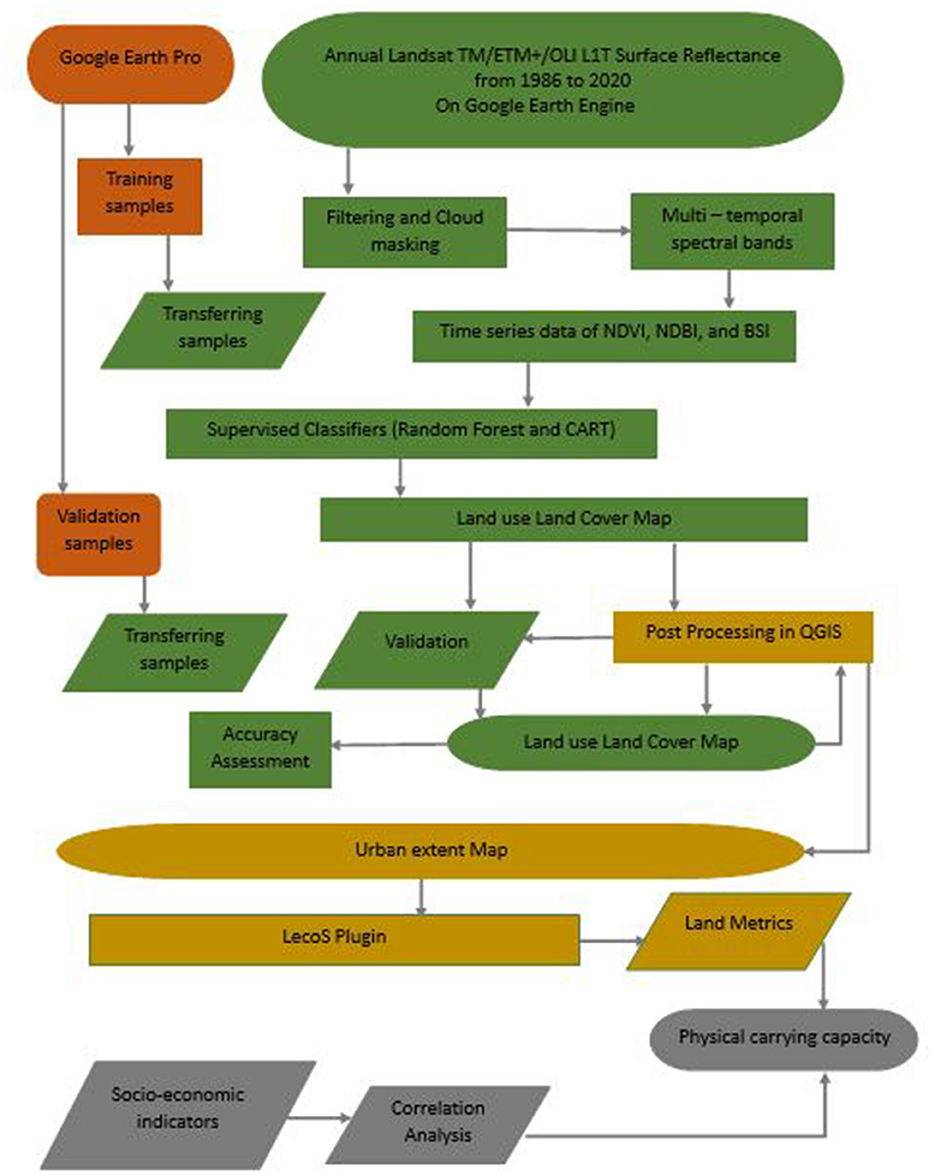
Figure 3 . Schematic overview of methodological framework.
3.1 Geospatial analysis
Geographical data was obtained from United Nations Geological Survey (USGS) through the Google Earth Engine software and used to map urban extent for Aruba from 1986 until 2020. Since the study is aimed to include historical urban extent, we decided to use images obtained by the Landsat satellites. For this study, the most advanced sensor was used during an assessment window of 10 years. Thus, resulting in 4 time slots namely, 1980–1990, 1991–2000, 2001–2010, and 2011–2020. The land-use classes distinguished are urban, vegetation, water, and bare ground (including beaches).
The methodology used to produce the maps is derived from Liu et al. (2020) and adapted to suit the purpose of this study. The main adjustment is the creation of both training and validation data. Instead of using Open Street Maps (OSM) we use Google Earth Pro as a reference to accommodate the production of historical training and validation data by utilizing google earth's historical imagery. In addition, 3 indices are included to improve classification of the built environment, namely Normalized Difference Vegetation index (NDVI; Eq. 1 ), Normalized Difference Built-up Index (NDBI; Eq. 2 ), and the Bare Soil Index (BSI; Eq. 3 ). Finally, the data is classified by means of Random Forest (RF) and Classification and Regression Trees (CART).
Post processing is predominantly performed in QGIS (Białowieża, version 3.22.8) and Microsoft Excel. Within QGIS change maps are analyzed to create urban extent maps. From these maps total land cover (A urban ), urban intensity index (UI index ), urban growth (U growth ), and the average annual expansion rate (R) are determined. The Urban Intensity Index measures the built-up density of the study area ( Eq. 4 ), whilst urban growth calculates the absolute growth percentage ( Eq. 5 ), and rate (R) calculates the yearly expansion rate over a given period(n) ( Eq. 6 ).
Furthermore, the LecoS plugin in QGIS ( Jung, 2016 ) was used to calculate various land metrics providing important insights on the organization of space. The metrics were selected to obtain 3 main characteristics of urban areas, namely absolute size, relative size, and complexity. The corresponding selected features are listed in Table 1 .
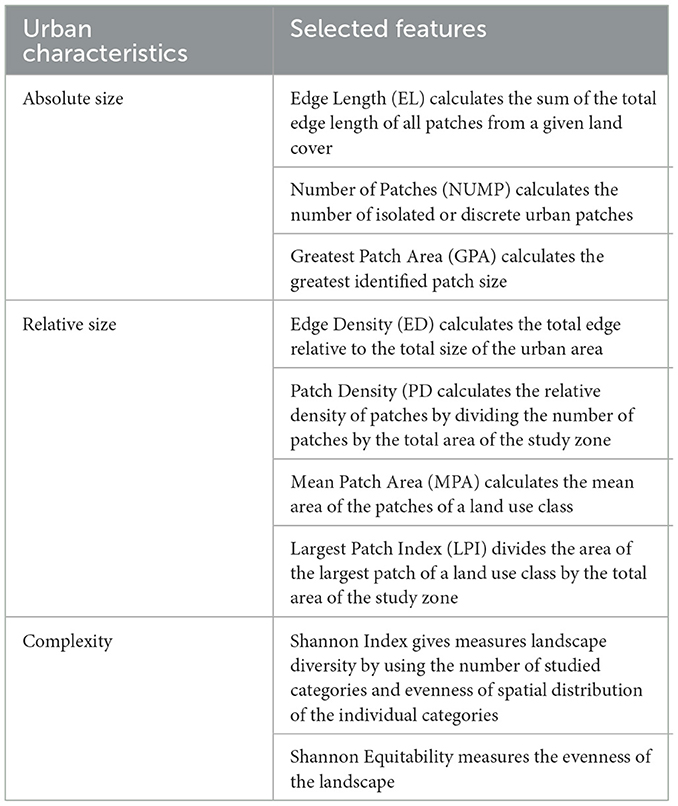
Table 1 . Selected urban characteristics and corresponding features.
3.2 Correlation analysis
Socio – economic data was obtained from the Central Bureau for Statistics (CBS), the Centrale Bank van Aruba (2022) , World Tourism Organization (2023) , and World Bank. Correlation was analyzed through descriptive statistics and tested with the Spearman correlation method. This method computes the correlation between the rank of tourism numbers and the rank of socio-economic indicators and statistics. The data range is from 1986 till 2020.
3.3 Scenario development
To assess the maximum carrying capacity of the islands in relation to the available land, two future scenarios were developed based on the land allocations within the Spatial Development Plan 2019 ( Directie Infrastructuur en Planning, 2019 ). Scenario 1 represents a conservative approach by restricting expansion beyond the currently developed areas, whilst Scenario 2 moderately expands allowing low-intensity build-up considering current population and infrastructure growth scenarios. The scenarios were developed for the year 2030. The numbers used for the population projections by 2030 are based on the 20-year revised outlook performed by CBS in 2014. The outlook projected a total of 3 population scenarios: low – 102,768, moderate – 132,225, and high – 146,674 ( Central Bureau of Statistics, 2014 ). To establish the maximum number of stay-over visitors by 2030, the growth rate recommended by the Sustainable Travel International (2018) was employed, as it was derived from inputs derived from stakeholders. The two suggested models were the desired model and the threshold model. The desired model is sustainable in nature and strives toward a desirable ideal in which the number of visitors that visit at the same time does not cause destruction to local resources or negatively impact the living experiences of the inhabitants. Contrarily, the threshold model strives for the maximum economic benefit by continuing the already unsustainable growth model. For the desired model a 1% “Year Over Year” (YOY) growth was selected for stay-over visitors vs. a 3.7% YOY growth for the threshold model. These growth rates were used to calculate the projected number of stay-over visitors by 2030 with the formula listed in Eq. 7 , with Y representing the number of stay-over visitors, parameter a corresponding to the growth rate, t 0 representing the reference year, and t i corresponding to the target year. The different projections were then used to calculate the possible population and tourism densities.
4.1 Geospatial analysis
Land use/Land cover maps were classified for the years 1986, 2000, 2010, and 2020. Table 2 presents the performance of the Random Forest (RF) and Classification and Regression Tree (CART) supervised classification models by means of the overall accuracy and kappa index. The results clearly indicate that the RF classifier outperformed the CART model. Therefore, the RF classifications were used to calculate urban extent of the different years depicted in Figure 4 .
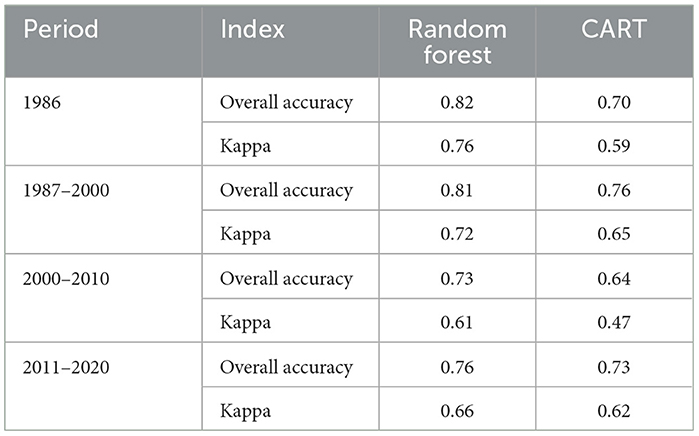
Table 2 . Accuracy and Kappa index for produced land use/land cover maps.
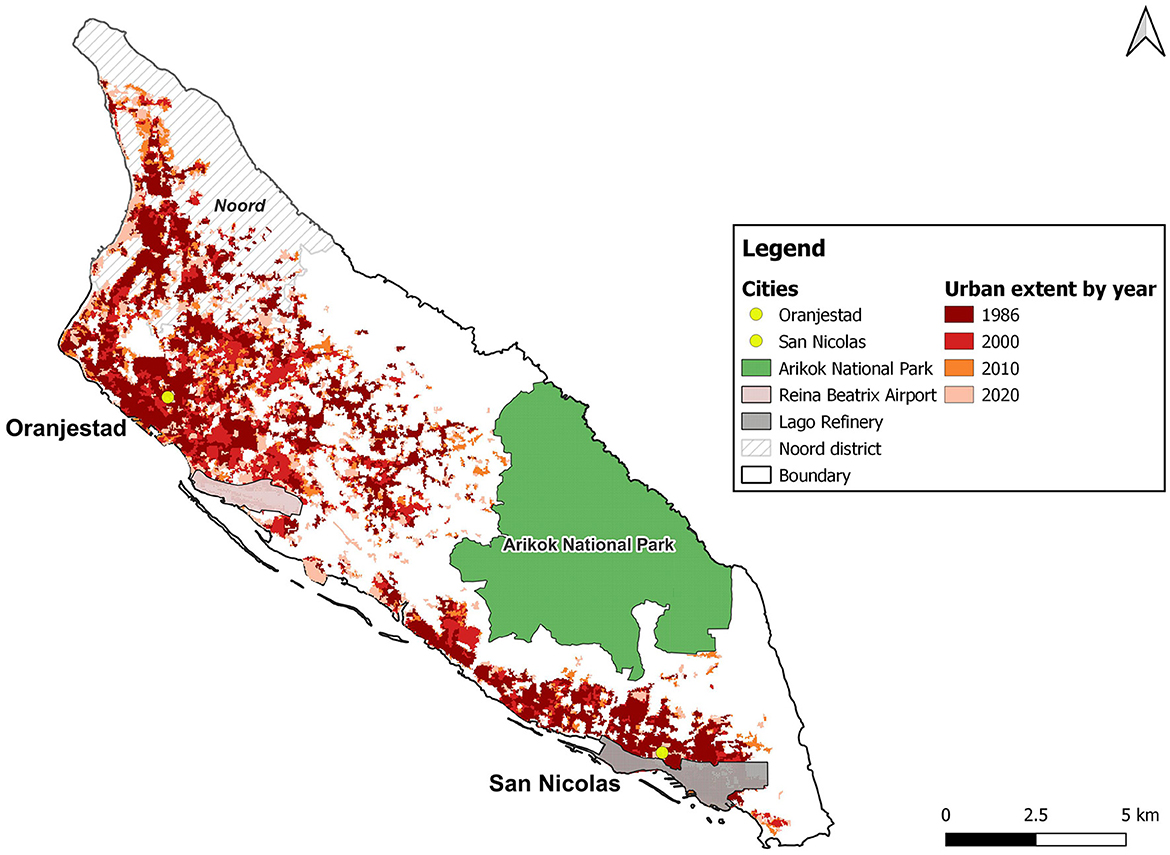
Figure 4 . Urban extent map of Aruba from 1986 till 2020.
Only two compatible images over the period 1980–1990 are available. This puts the starting point of our analysis in 1986, when only 29.03 km 2 was developed (see Table 3 ). Between 1987 and 2000 ~12 km 2 in built-up was added, followed by 5.55 km 2 over the next decade and 12.14 km 2 between 2011 and 2020. Hence, urban intensity (UI) doubled over 40 years. Table 3 further illustrates varying absolute urban growth (U growth ) percentages, from 39% in 2000, to 13% in 2010, and 26% in 2020. The average annual expansion rate (R) varies similarly to U growth .
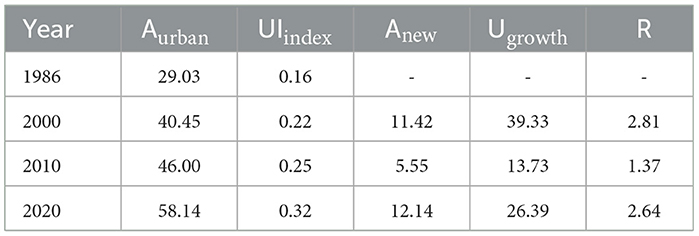
Table 3 . Urban extent metrics.
Although expansion between 1987–2000 and 2011–2020 is roughly equal, the absolute growth and expansion rate contribute differently to urbanization. Urban development increased faster over the first period. Interestingly, this corresponds to the population change depicted in Figure. From this Figure 5 can be deduced that the population increased considerably over the studied period, with the largest change observed between 1984 and 1995. Noticeable are the large outmigration from 1984 to 1985 and the huge influx from 1986 to 1998. Moreover, in the third and fourth decades the population continued to increase but growth diminished proportionally compared to the previous intervals. Altogether Figure shows that population growth is largely controlled by migration, as natural growth stays relatively constant over the years.
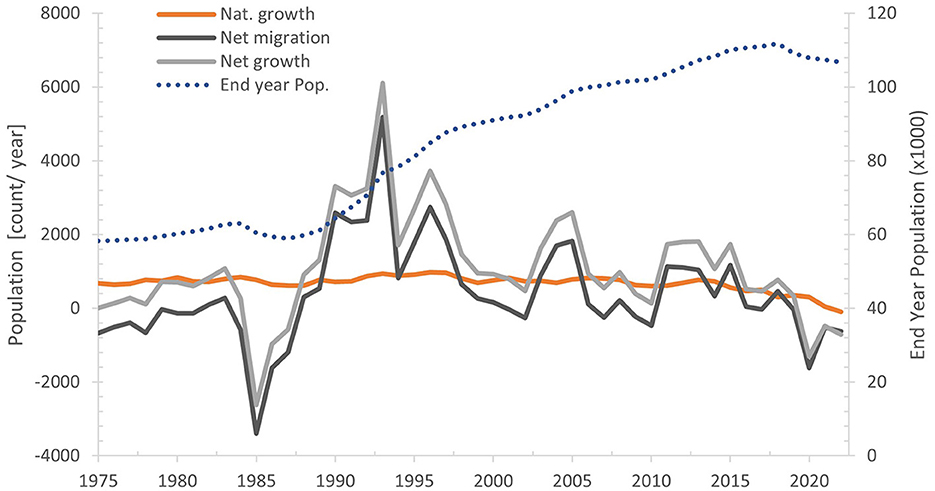
Figure 5 . Population change from 1972 to 2020: presented are natural growth, net migration (immigration – emigration), net growth (Nat growth + Net migration), and the total population at the end of the year excluding the ~17,000 undocumented ( HIAS Aruba staff, 2022 ).
Upon inspection of urbanization characteristics summarized in Table 4 , various trends are revealed. The characteristics related to absolute size, Edge Length (EL) and Greatest Patch Area (GPA) increased over the years, whilst Number of Patches (NUMP) decreased. Likewise, the features related to relative size, Mean Patch Area (MPA) and Largest Patch Index (LPI) increased, whilst Edge Density (ED) and Patch Density (PD) decreased. In contrast, both features related to the complexity of landscape imprint increased over the years.

Table 4 . Land metrics.
The trends observed in GPA and NUMP both indicate that urbanization occurred close to already existing areas. Additionally, the increase in MPA and LPI further strengthens this trend. Correspondingly, Figure 4 illustrates a patchy landscape in 1986 filled in with build-up from the consecutive years, thus, moving from a relatively sprawled landscape to a more compacted one.
The third and final characteristics which determine landscape complexity, the Shannon index (Div_SH) and the Shannon Equiability (Div_EV), corroborate the observed trend that the landscape improved in uniformity between 1986 and 2020, thus is less complex.
Despite the increased landscape uniformity, Figure 4 still shows an increase in new built-up distant from existing, especially in 2020.
4.2 Correlation analysis
The correlation analysis is used to assess the relation between socio-economic indicators and the number of annual stay-over visitors ( Figure 6 ). In plot A, the annual mid-year population is plotted as a function of annual stay-over visitors. Obvious from this graph is that tourism started quite slowly in 1986 and intensified quickly between 1990 and 2000. From 2000 onwards, the number of tourists continued increasing at a slower rate and is currently moving toward a plateau. The outlier in this plot coincides with 2020, which clearly demonstrates the impact of the COVID-19 pandemic as travels abruptly ceased after the first quarter of that year.
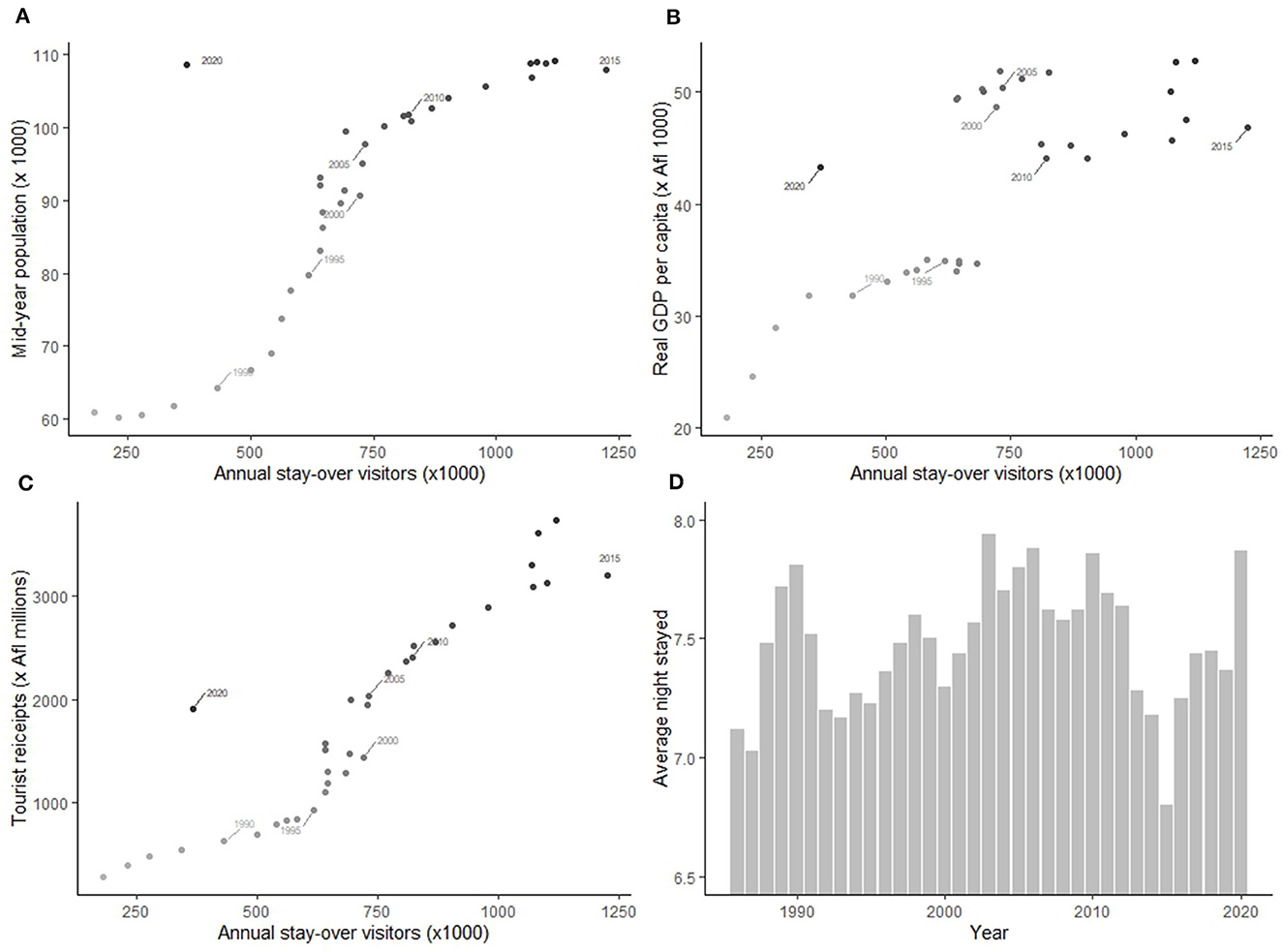
Figure 6 . (A–C) Overview of socio-economic indicators vs. corresponding annual number of stay-over visitors from 1986 until 2020. (D) Overview of annual averaged nights logged by stay-over tourists.
Graph B illustrates the relationship between annual stay-over visitors and Real GDP per capita. The graph reveals four distinct clusters. In the initial 4 years, Real GDP per capita surged from Afl 20,950 to Afl 31,880. Moving to the second cluster (1990–1999), GDP fluctuated within the range of Afl 31,880 and Afl 35,000. The third cluster (2000–2008) saw GDP fluctuations between Afl 48,660 and Afl 51,730. Lastly, in the fourth cluster (2010–2019), the range varied from Afl 43,130 to Afl 55,220. Overall, the presented graph does not reveal any discernible relationship.
When it comes to the relation between stay-over visitors and their expenditure (plot C) the observed trend is quite continuous compared to the trends observed in plot B. Despite this continuous pattern, four distinct periods can be distinguished. In the initial decade, tourism income steadily increased from Afl200 million to Afl900 million in 1995, followed by a faster growth rate in the subsequent decade from Afl1 billion to Afl2 billion in 2006. The next increment is from 2007 to 2013, starting from Afl2.2 billion in 2007 to Afl2.8 billion in 2013. From 2014 onwards the income increased from Afl3 billion to Afl3.7 billion in 2019. Although 2020 is an outlier, the tourism income in that year still was Afl1.9 billion, indicating that the changes observed over the different periods are probably due to an increase in disposable income.
Although all socio-economic variables shown in Figures 6A – D exhibited significant correlations with the number of stay-over tourists, the analysis above clearly indicates that the relation between Real GDP per capita and the annual influx of stay-over tourist is not straightforward. The final graph in Figure 6D depicts the average number of nights visitors spend on the island. Although this plot can also be divided in 4 distinct periods, the periods do not align with those observed in Figure 6C . Here the average duration of stay on the island increased over the first 6 years, followed by a relatively low and fluctuating trend between 1991 and 2000. From 2001 the time spend on the island increased again until 2012, peaking in 2003 at an average of 7.9 nights per visit. Between 2013 and 2019 the average fluctuates around 7.3 nights per visit. Like the other graphs, 2020 can be considered an outlier because in that year the average length tourists stayed on the island increased substantially to 7.8. This ranks second over the entire studied period from 1986 to 2020.
4.3 Future urban scenarios
The two scenarios explored are based on the development plan of 2019, taking into consideration the different allocations. In Scenario 1, the emphasis is on preserving existing ecosystems by confining urban development to extensively built areas. This scenario allocates ~72 km 2 for urban areas and 107 km 2 for nature conservation. On the other hand, Scenario 2 is much more lenient, preserving ~74 km 2 of nature and designating 104 km 2 to urban development ( Figure 7 ). The second scenario is comparatively more permissive than the first, as it assigns an extra 34 km 2 for urban development.
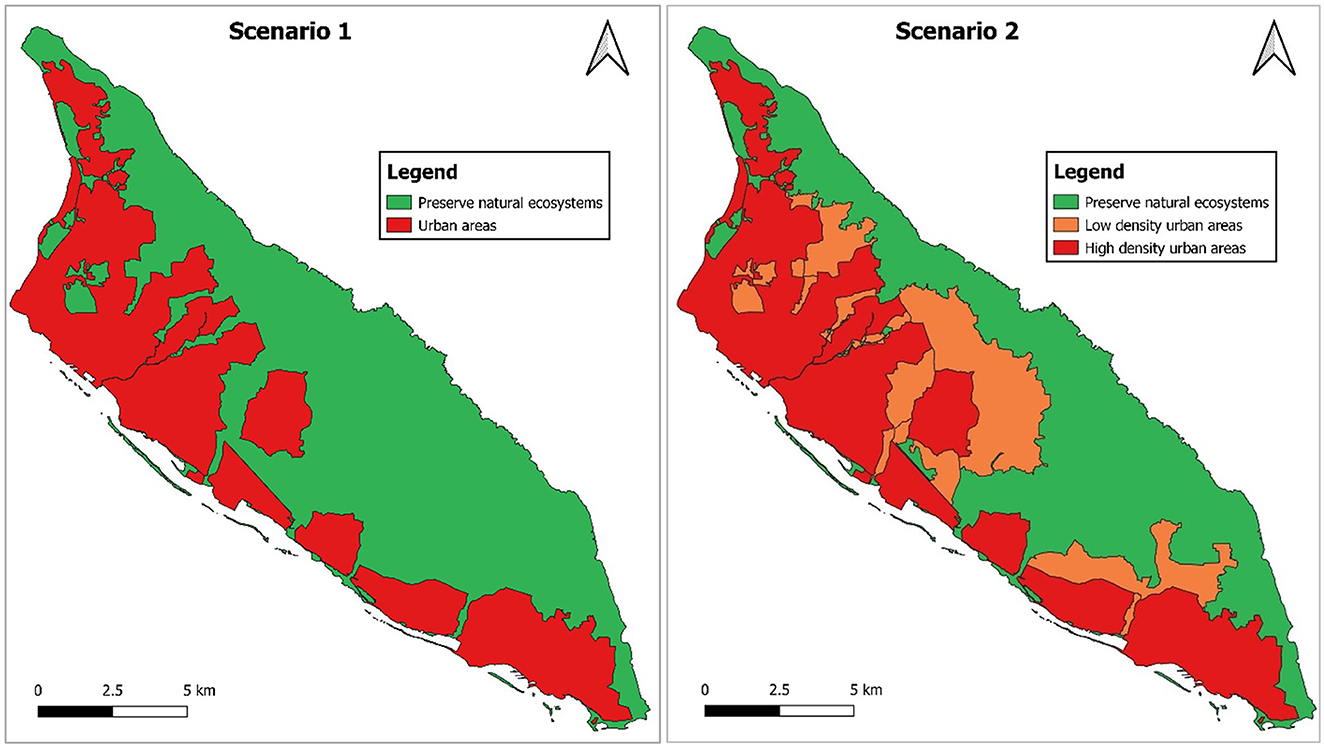
Figure 7 . Restrictive (Scenario 1) and conservative (Scenario 2) built-up scenarios by 2030.
Table 5 displays the calculated population densities in urban areas for both Scenario 1 and Scenario 2. As mentioned before these 3 projections are based on demographic extrapolations of CBS. Under Scenario 1, a moderate population projection of 132,225 translates to a population density of 1836 p/km 2 . Conversely, under Scenario 2, the same projection corresponds to a density of 1271 p/km 2 . Likewise, a high population projection of 146,674 equates to 2036 p/km 2 and 1410 p/km 2 respectively. In perspective, the population density in urban areas was ~1862 p/km 2 in 2020.
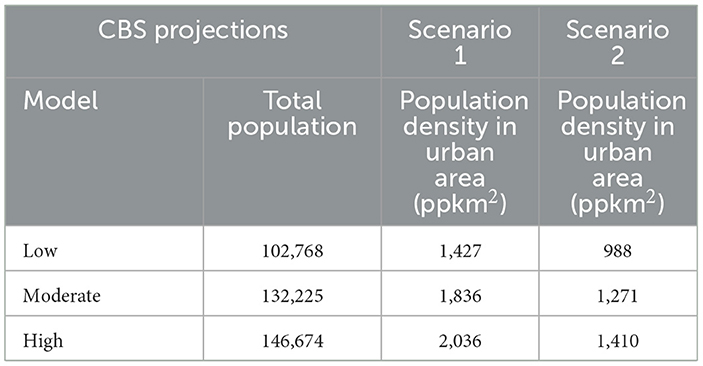
Table 5 . The calculated possible population densities in urban areas for the different scenarios by 2030.
The maximum projections for tourism are based on two growth models, namely the desired model and the threshold model. Using 2017 as the reference year, the possible growth by 2030 for both models equates to 1,218,383 and 1,716,841 stay-over visitors for the desired and the threshold model, respectively. This translates to a stay-over visitors density of 6769 and 9538 tourists/km 2 respectively. In perspective, the tourism density in 2019 was 6217 tourists/km 2 .
5 Discussion and conclusions
The results presented in this study indicate that ~29 km 2 Aruba was built in 1986. Over four decades Aruba's urban area increased to one-third, 60 km 2 out of 180 km 2 .Combined with the area occupied by the National Park, around 36 km 2 , half of the island is already designated. Furthermore, the calculated land metrics used to characterize the built environment, show that the morphological characteristics of urbanization changed over time from a highly sprawled landscape to a more homogeneous landscape. The absolute size of features like Greatest Patch Area (GPA) increased while the Number of Patches (NUMP) decreased over time, indicating that new built-up was created near existing areas ( Table 4 ). However, the landscape still reflects sprawled built-up toward the northeastern coast. The reason is that the government purposefully designated those areas as countryside, an area to be used for both agriculture and sprawled built-up ( Directie Infrastructuur en Planning, 2019 ). Noteworthy is that in the Spatial Development Plan the government also designated other areas containing important ecological structures to urban areas and explicitly mentioned that those structures must be preserved. From this we can deduce that some leniency is offered to facilitate new built-up in areas high in biodiversity to deal with the limited available land.
Inspection of demographic change shows that urbanization in Aruba is mostly driven by migration. Contrary to mainland countries, urbanization in Aruba is not defined by a rural – urban dichotomy ( McGranahan and Satterthwaite, 2014 ), but controlled by in- and outmigration of economic prosperity and high quality of life seekers ( Cole and Razak, 2009 ; Peterson, 2020a ). From the literature it is apparent that these venturers are indispensable since the initial settlement of Aruba ( Ridderstaat, 2007 ; Fitzpatrick, 2015 ; Derix, 2016 ). Moreover, Figure 5 clearly illustrates the impact of tourism as economic growth model on the demographic changes from 1986 onwards. Especially, the first peak around 1993 demonstrates the direct impact of tourism growth on demography. This relation between migration and the number of stay-over tourists is further corroborated by the plot in Figure 6A . From this graph it is obvious that the population increased concordant with the number of tourists. However, the plot also indicates that both at the onset as well as further down the line there are tipping points to consider. This observed S-trend is typical for small island tourism destinations ( Pantin, 1999 ).
Although tourism numbers continued to increase after 2012, the population reached a plateau. Furthermore, an inspection of Figure 5 shows that after 1993 net migration decreased overall over time with 2020 as the major pit. The COVID-19 pandemic ceased all tourism activities resulting in a considerable outmigration. Nevertheless, the end-year population also indicates a decreasing trend from 2018 onwards, suggesting a threshold has been reached between population and the number of stay-over tourists ( Vanegas and Croes, 2003 ).
The results presented in Figure 6B suggest that there is no clear relation between annual stay-over tourists and Real GDP per capita, while the relation between annual stay-over visitors and tourism receipts show a relation of the S-curve. Because of the data limitations it is difficult to pinpoint the exact cause of this fluctuating trend, but based on literature we can state that Aruba's tourism is volatile, highly competitive, and unforgiving ( Kempadoo, 1999 ; Vanegas and Croes, 2003 ; Murphy, 2011 ; Ridderstaat et al., 2014 ; Peterson, 2020b ). According to Peterson (2020b) , Aruba is experiencing an exhaustion effect. Various studies by Sustainable Travel International (2018) conclude that Aruba has reached or surpassed its carrying capacity, overstretching its resources beyond sustainable levels. Continuing this path will lead the island to deterioration on both social and environmental levels ( Stoffelen and Ioannides, 2022 ).
Although the alarm regarding Aruba's tourism had been sounded over a decade ago already ( Croes, 2006 ; Cole and Razak, 2011 ), the tourism growth model still prevails to this day. Since 2018 plans have been made to shift the model to one that attracts high value – low impact tourists, yet instead of working toward increasing the revenue by encouraging economic linkages with other local industries ( Sinclair-Maragh and Gursoy, 2015 ), growth models are discussed by various tourism entities ( Sustainable Travel International, 2018 ; Aruba Tourism Authority, 2021 ). Therefore, we have presented two scenarios to provide an overview of developmental possibilities. Based on analysis of the scenarios presented, both the high population and threshold model will most definitely lead to deterioration of the island's ecosystems. For the demographic projections, the goal should be to strive for a moderate growth model under either scenario because the population density in scenario 1 is closest to the current density. Furthermore, when evaluating the overall population trend observed in Figure 5 , it is obvious that the projected population growth by 2030 might be extreme as from 2018 onwards total population has been declining. The same is observed for the desired tourism growth model. Based on the desired growth model the number of stay-over tourists by 2030 would be 1.2 million, which is relatively close to the 1.1 million reached in 2019. The scenarios presented in this study are simplistic in nature, yet still provide valuable insight into possible future prospects. The models provide a good example that can be used as targets for sustainable tourism management and land use management in general.
Finally, besides the aforementioned shortcomings, this study has some additional limitations such as the low spatial resolution of the satellite data, causing under and over-classification of land-use due to the presence of mixed pixels. Higher data resolution would have resulted in less uncertainty and higher accuracy, especially in the earlier classifications. Furthermore, the direct impact of tourism on the landscape was not addressed. Such an analysis requires more detailed data such as the space visitors need, and the average time spent on the beach or other attractions. Assessing the carrying capacity entails much more than calculating population and tourism density, the psychology of the tourism crowd must also be considered ( Stoffelen and Ioannides, 2022 ). Likewise, a deeper assessment is needed of forces driving changes at the urban level than only observing the change in demography ( Thomas, 2013 ).
This study demonstrated that by 2020, approximately one-third, 60 km 2 , of Aruba consisted of built environment. From 1986 till 2020, expansion was characterized by urban sprawl in the earlier years and changed to infilling in the latter. Furthermore, the results indicated that all socio-economic indicators were strongly positive correlated to tourism. Based on extrapolation, the island's possible maximum physical carrying capacity for annual stay-over visitors and the number of inhabitants were calculated to be ~1.7 million and 150.000, respectively. To conclude, through the performed analysis all research questions were answered demonstrating that the proposed method allows for a comprehensive understanding of the impact of tourism on the physical carrying capacity of an island without having access to richness in data that similar studies ( Tejada et al., 2009 ; Zacarias et al., 2011 ; Leka et al., 2022 ; Vandarakis et al., 2023 ) had access to.
Data availability statement
The raw data supporting the conclusions of this article will be made available by the authors, without undue reservation.
Author contributions
SJ: Conceptualization, Investigation, Methodology, Writing—original draft, Visualization, Formal analysis. EM: Funding acquisition, Supervision, Writing—review & editing. AV: Conceptualization, Supervision, Writing—review & editing.
The author(s) declare that financial support was received for the research, authorship, and/or publication of this article. This research was conducted with the financial support of the European Union through the 11th European Development Fund (FED/2019/406-549) for the Sustainable Islands Solutions through Science, Technology, Engineering, and Mathematics (SISSTEM) project. Its contents are the sole responsibility of the authors and do not necessarily reflect the views of the European Union.
Acknowledgments
The authors wish to extend their gratitude to Dr. Lisa-Marie Hemerijckx from KU Leuven (Belgium) for her constructive feedback on a previous version of this manuscript.
Conflict of interest
The authors declare that the research was conducted in the absence of any commercial or financial relationships that could be construed as a potential conflict of interest.
Publisher's note
All claims expressed in this article are solely those of the authors and do not necessarily represent those of their affiliated organizations, or those of the publisher, the editors and the reviewers. Any product that may be evaluated in this article, or claim that may be made by its manufacturer, is not guaranteed or endorsed by the publisher.
Aruba Tourism Authority (2021). Corporate Plan: Tourism Recovery Marketing Plan 2021 . Oranjestad: Aruba Tourism Authority.
Google Scholar
Bambrick, H. (2018). Resource extractivism, health and climate change in small islands. Int. J. Clim. Change Strat. Manage. 10, 272–288. doi: 10.1108/IJCCSM-03-2017-0068
Crossref Full Text | Google Scholar
Bowen, D. S. (2019). In the shadow of the refinery: an American oil company town on the Caribbean island of Aruba. J. Cult. Geograph. 36, 49–77. doi: 10.1080/08873631.2018.1502398
Briguglio, L., and Avellino, M. (2019). “HAS OVERTOURISM REACHED THE MALTESE ISLANDS?” in Occasional Papers on Islands and Small States 01, 1–27.
Budeanu, A., Miller, G., Moscardo, G., and Ooi, C. S. (2016). Sustainable tourism, progress, challenges and opportunities: an introduction. J. Clean. Prod. 111, 285–294. doi: 10.1016/j.jclepro.2015.10.027
Butler, R. W. (1999). Le tourisme durable: un état de la question. Tourism Geograph. 1, 7–25. doi: 10.1080/14616689908721291
Cannonier, C., and Burke, M. G. (2019). The economic growth impact of tourism in small island developing states—evidence from the Caribbean. Tourism Econ. 25, 85–108. doi: 10.1177/1354816618792792
Capocchi, A., Vallone, C., Pierotti, M., and Amaduzzi, A. (2019). Overtourism: a literature review to assess implications and future perspectives. Sustainability 11, 3303. doi: 10.3390/su11123303
Central Bureau of Statistics (2010). The Social Atlas of Aruba 2010 . Available online at: chrome-extension://efaidnbmnnnibpcajpcglclefindmkaj/https://cbs.aw/wp/wp-content/uploads/2015/10/Social_Atlas_Aruba_2010.pdf (accessed April 13, 2020).
Central Bureau of Statistics (2014). Population Projections Revised 3 . Available online at: www.cbs.aw (accessed June 23, 2022).
Central Bureau of Statistics (2022). Mapping Census 2020: Social-Demographic Diversity in Aruba . Available online at: https://storymaps.arcgis.com/stories/0f88c5a5462e4a37906fdae232490de4 (accessed February 7, 2022).
Centrale Bank van Aruba (2022). Annual Statistical Digest 2021 . Available online at: chrome-extension://efaidnbmnnnibpcajpcglclefindmkaj/https://www.cbaruba.org/readBlob.do?id=11992 (accessed July 14, 2022).
Chakraborty, A. (2021). Can tourism contribute to environmentally sustainable development? Arguments from an ecological limits perspective. Environ. Dev. Sust. 23, 8130–8146. doi: 10.1007/s10668-020-00987-5
Cole, S., and Razak, V. (2009). How far, and how fast? Population, culture, and carrying capacity in Aruba. Futures 41, 414–425. doi: 10.1016/j.futures.2008.11.013
Cole, S., and Razak, V. (2011). Island awash–sustainability indicators and social complexity in the Caribbean. Q. Life Commun. Indic. Parks Recr. Tour. Manage. 21, 141–161. doi: 10.1007/978-90-481-9861-0_8
Croes, R. R. (2006). A paradigm shift to a new strategy for small island economies: embracing demand side economics for value enhancement and long term economic stability. Tourism Manage. 27, 453–465. doi: 10.1016/j.tourman.2004.12.003
Cupul-Magaña, A. L., and Rodríguez-Troncoso, A. P. (2017). Tourist carrying capacity at islas marietas national park: an essential tool to protect the coral community. Appl. Geograph. 88, 15–23. doi: 10.1016/j.apgeog.2017.08.021
Department of Economic Affairs C. and I. of A. (2019). Sustainable Tourism. https://www.deaci.aw/wp-content/uploads/2020/11/FINAL-Report-Sustainable-Tourism.pdf (accessed June 23, 2022).
Department of Economic Affairs C. and I. of A. (2020). Nos Plan, Nos Futuro: National Strategic Plan 2020-2022 . Avaialable online at: https://www.deaci.aw/wp-content/uploads/2020/11/FINAL-NSP-REPORT-STRATEGY-10202020.pdf (accessed June 23, 2022).
Derix, R. R. (2016). Landscape series No.4: The suburbanization of the Aruban landscape . https://cbs.aw/wp/wp-content/uploads/2016/12/H4_LandscapeSeries_Urbanization_10-10-2016-2.pdf (accessed June 23, 2022).
Directie Infrastructuur en Planning (2019). Ruimtelijk Ontwikkelingsplan Aruba 2019 . Available online at: https://www.dip.aw/wp-content/uploads/2021/06/20190722-ROP-2019-definitief-1.pdf
Dodds, R., and Butler, R. (2019). The phenomena of overtourism: a review. Int. J. Tour. Cities 5, 519–528. doi: 10.1108/IJTC-06-2019-0090
Drius, M., Bongiorni, L., Depellegrin, D., Menegon, S., Pugnetti, A., Stifter, S., et al. (2019). Tackling challenges for Mediterranean sustainable coastal tourism: an ecosystem service perspective. Sci. Total Environ. 652, 1302–1317. doi: 10.1016/j.scitotenv.2018.10.121
PubMed Abstract | Crossref Full Text | Google Scholar
Fitzpatrick, S. M. (2015). The pre-columbian caribbean: colonization, population dispersal, and island adaptations. PaleoAmerica 1, 305–331. doi: 10.1179/2055557115Y.0000000010
García-Ayllón, S. (2015). La Manga case study: consequences from short-term urban planning in a tourism mass destiny of the Spanish mediterranean coast. Cities 43, 141–151. doi: 10.1016/j.cities.2014.12.001
Hardy, A., Beeton, R. J. S., and Pearson, L. (2002). Sustainable tourism: An overview of the concept and its position in relation to conceptualisations of tourism. J. Sust. Tour. 10, 475–496. doi: 10.1080/09669580208667183
Hayward, P. (2021). Embodying the anthropocene: Embattled crustaceans, extractivism, and eco-tourism on christmas island (indian ocean). Island Stu. J. 16, 229–248. doi: 10.24043/isj.145
Hernández, J. M., Suárez-Vega, R., and Santana-Jiménez, Y. (2016). The inter-relationship between rural and mass tourism: the case of Catalonia, Spain. Tour. Manage. 54, 43–57. doi: 10.1016/j.tourman.2015.10.015
Herva, V. P., Varnajot, A., and Pashkevich, A. (2020). Bad Santa: cultural heritage, mystification of the Arctic, and tourism as an extractive industry. Polar J. 10, 375–396. doi: 10.1080/2154896X.2020.1783775
HIAS Aruba staff (2022). HIAS Aruba Opens Community Center, Foster Local Integration. HIAS Aruba Opens Community Center, Foster Local Integration . Available online at: https://hias.org/news/hias-aruba-opens-community-center-fosters-local-integration/ (accessed April 20, 2022).
Higgins-Desbiolles, F. (2018). Sustainable tourism: Sustaining tourism or something more? Tour. Manage. Persp. 25, 157–160. doi: 10.1016/j.tmp.2017.11.017
International Monetary Fund. Western Hemisphere Dept (2023). Kingdom of the Netherlands-Aruba: 2023 Article IV Consultation Discussion-Press Release; and staff Report.
Jung, M. (2016). LecoS—A python plugin for automated landscape ecology analysis. Ecol. Inf. 31, 18–21. doi: 10.1016/j.ecoinf.2015.11.006
Kempadoo, K. (1999). Sun, Sex, and Gold : Tourism and Sex Work in the Caribbean . Lanham: Rowman and Littlefield Publishers.
Leka, A., Lagarias, A., Panagiotopoulou, M., and Stratigea, A. (2022). Development of a tourism carrying capacity index (TCCI) for sustainable management of coastal areas in mediterranean islands – case study Naxos, Greece. Ocean Coast. Manage. 216, 105978. doi: 10.1016/j.ocecoaman.2021.105978
Liu, D., Chen, N., Zhang, X., Wang, C., and Du, W. (2020). Annual large-scale urban land mapping based on Landsat time series in Google Earth Engine and OpenStreetMap data: a case study in the middle Yangtze River basin. ISPRS J. Photogr. Remote Sens. 159, 337–351. doi: 10.1016/j.isprsjprs.2019.11.021
Loperena, C. A. (2017). Honduras is open for business: extractivist tourism as sustainable development in the wake of disaster? J. Sust. Tour. 25, 618–633. doi: 10.1080/09669582.2016.1231808
Lu, J., and Nepal, S. K. (2009). Sustainable tourism research: an analysis of papers published in the journal of sustainable tourism. J. Sust. Tour. 17, 5–16. doi: 10.1080/09669580802582480
Marshall, D. (1982). Migration as an agent of change in Caribbean island ecosystems. Int. Soc. Sci. J. 34, 451–467.
McGranahan, G., and Satterthwaite, D. (2014). Urbanisation Concepts and Trends . Available online at: chrome-extension://efaidnbmnnnibpcajpcglclefindmkaj/https://www.iied.org/sites/default/files/pdfs/migrate/10709IIED.pdf (accessed June 1, 2023).
Meadows, D. H., Randers, J., Meadows, D. L., and Meadows, D. H. (2005). Limits to Growth : the 30-Year Update. London: Earthscan.
Mohee, R., Mauthoor, S., Bundhoo, Z. M. A., Somaroo, G., Soobhany, N., Gunasee, S., et al. (2015). Current status of solid waste management in small island developing states: a review. Waste Manag. 43, 539–549. doi: 10.1016/j.wasman.2015.06.012
Murphy, K. S. (2011). An exploratory study of global issues impacting the future of tourism in Aruba. ARA Caribb. J. Tour. Res. 3, 5–18.
Pan, Y., Zhai, M., Lin, L., Lin, Y., Cai, J., Deng, J. S., and Wang, K. (2016). Characterizing the spatiotemporal evolutions and impact of rapid urbanization on island sustainable development. Habitat Int. 53, 215–227. doi: 10.1016/j.habitatint.2015.11.030
Pantin, D. A. (1999). The challenge of sustainable development in small island developing states: case study on tourism in the Caribbean. Nat. Res. Forum 23, 221–233. doi: 10.1111/j.1477-8947.1999.tb00911.x
Peeters, P., Gössling, S., Klijs, J., Milano, C., Novelli, M., Dijkmans, C., et al. (2018). Research for TRAN Committee - Overtourism: Impact and Possible Policy Responses. Available online at: chrome-extension://efaidnbmnnnibpcajpcglclefindmkaj/https://www.europarl.europa.eu/RegData/etudes/STUD/2018/629184/IPOL_STU(2018)629184_EN.pdf (accessed January 14, 2024).
Peterson, R. R. (2020a). Over the caribbean top: community well-being and over-tourism in small island tourism economies. Int. J. Commun. Well-Being 18, 1–38. doi: 10.1007/s42413-020-00094-3
Peterson, R. R. (2020b). Whence the twain shall meet: Weathering over-tourism and climate change in small island tourism economies. Available online at: chrome-extension://efaidnbmnnnibpcajpcglclefindmkaj/https://www.cbaruba.org/readBlob.do?id=7674 (accessed September 8, 2023).
Ratter, B. M. W. (2018). Geography of Small Islands: Outposts of Globalisation. Cham: Springer International Publishing.
Ridderstaat, J. (2007). The Lago Story, The Compelling Story of an oil Company on the Island of Aruba, 1st Edn . Lebanon: Editorial Charuba.
Ridderstaat, J., Croes, R., and Nijkamp, P. (2014). Tourism and long-run economic growth in Aruba. Int. J. Tourism Res. 16, 472–487. doi: 10.1002/jtr.1941
Saarinen, J. (2015). Conflicting limits to growth in sustainable tourism. Curr. Issues Tour. 18, 903–907. doi: 10.1080/13683500.2014.972344
Schilstra, A. J., and van Belle, J. (2003). Development of an Environmental Assessment Method for Aruba . Groningen: IVEM Center for Energy and Environmental Studies.
Schmutz, P. P., Potter, A. E., and Arnold Modlin, E. (2017). “Aruba, Bonaire, and Curaçao,” in Landscapes and Landforms of the Lesser Antilles , ed. C. D. Allen (Springer), 293–317. doi: 10.1007/978-3-319-55787-8_18
Sinclair-Maragh, G., and Gursoy, D. (2015). Imperialism and tourism: the case of developing island countries. Annal. Tour. Res. 50, 143–158. doi: 10.1016/j.annals.2014.12.001
Stoffelen, A., and Ioannides, D. (2022). Handbook of Tourism Impacts: Social and Environmental Perspectives. London: Edward Elgar Publishing.
Sustainable Travel International (2018). A study on the Tourism Carrying Capacity for the Island of Aruba . Seattle, WI: Sustainable Travel International.
Tejada, M., Malvarez, G. C., and Navas, F. (2009). Indicators for the assessment of physical carrying capacity in coastal tourist destinations. J. Coastal Res. 1, 1159–1163.
Thomas, S. (2013). “The Future is Urban” Challenge of Sustainable Urban Development in the Caribbean: the Search for Sustainable Urban Forms,” in 49th ISOCARP Congress . Available online at: chrome-extension://efaidnbmnnnibpcajpcglclefindmkaj/https://www.isocarp.net/Data/case_studies/2328.pdf (accessed April 13, 2020).
Vainikka, V. (2013). Rethinking mass tourism. Tourist Stu. 13, 268–286. doi: 10.1177/1468797613498163
Van Den Oever, F. (2000). Aruba - A geochemical baseline study. Netherlands J. Geosci. 79, 467–477. doi: 10.1017/S001677460002196X
Vandarakis, D., Malliouri, D., Petrakis, S., Kapsimalis, V., Moraitis, V., Hatiris, G. A., et al. (2023). Carrying capacity and assessment of the tourism sector in the South Aegean region, Greece. Water 15, 16. doi: 10.3390/w15142616
Vanegas, M., and Croes, R. R. (2003). Growth, development and tourism in a small economy: evidence from Aruba. Int. J. Tour. Res. 5, 315–330. doi: 10.1002/jtr.441
Wong, A. (2015). Caribbean island tourism: pathway to continued colonial servitude. Études Caribéennes 22, 31–32. doi: 10.4000/etudescaribeennes.7524
World Tourism Organization (2018). UNWTO Annual Report 2017 . Geneva: World Tourism Organization (UNWTO).
World Tourism Organization (2023). UNWTO Tourism Statistics Database . Geneva: World Tourism Organization (UNWTO).
Zacarias, D. A., Williams, A. T., and Newton, A. (2011). Recreation carrying capacity estimations to support beach management at Praia de Faro, Portugal. Appl. Geograph. 31, 1075–1081. doi: 10.1016/j.apgeog.2011.01.020
Zolfani, S. H., Sedaghat, M., Maknoon, R., and Zavadskas, E. K. (2015). Sustainable tourism: a comprehensive literature review on frameworks and applications. Econ. Res. 28, 1–30. doi: 10.1080/1331677X.2014.995895
Keywords: tourism, extractivism, carrying capacity, land use land cover change, urbanization, Caribbean, small island states
Citation: Jurgens SS, Mijts E and Van Rompaey A (2024) Are there limits to growth of tourism on the Caribbean islands? Case-study Aruba. Front. Sustain. Tour. 3:1292383. doi: 10.3389/frsut.2024.1292383
Received: 11 September 2023; Accepted: 13 February 2024; Published: 07 March 2024.
Reviewed by:
Copyright © 2024 Jurgens, Mijts and Van Rompaey. This is an open-access article distributed under the terms of the Creative Commons Attribution License (CC BY) . The use, distribution or reproduction in other forums is permitted, provided the original author(s) and the copyright owner(s) are credited and that the original publication in this journal is cited, in accordance with accepted academic practice. No use, distribution or reproduction is permitted which does not comply with these terms.
*Correspondence: Sharona S. Jurgens, sharona.jurgens@ua.aw
- Arts & Entertainment
- Construction & Works
- Consumer Affairs
- Contributed Articles
- Environment
- Fire & Emergency
- Human Interest
- Industrial Relations
- Law & Order
- Politics & Government
- Press Releases
- Science & Technology
- Search & Rescue
- Transitions
- Travel & Leisure
- Educational Escalator
- Garden Golf
- Health Hummus
- Personal Pies
- Technology Tangle
- Travel Tango
- WhatsApp Alerts

Caribbean Tourism Experiences Strong 2023 Growth

BRIDGETOWN, Barbados (March 15, 2024) – Continuing its positive recovery trend, Caribbean tourism grew in 2023 with an estimated 14.3% increase in international stay-over arrivals to the region, the Caribbean Tourism Organization (CTO) has reported.
Delivering the “Caribbean Tourism Performance Review 2023” in Bridgetown today, Dona Regis-Prosper, Secretary-General of the CTO, shared that last year’s growth was in line with CTO’s forecast for the year, and attributed the outcome to sustained demand for outbound travel from the United States – the Caribbean’s main source market, enhanced tourism-related infrastructure within the destinations, the fulfillment of strategic marketing initiatives, and augmented airlift capacity between the region and its source markets, albeit unevenly distributed among the destinations.
The recovery of global tourism has been resilient, despite variability in the regional performances, according to Regis-Prosper, with the Caribbean surpassing pre-pandemic arrivals by a modest 0.8%, outperforming most of the main global regions in terms of recovery.
“Based on preliminary data provided so far by the destinations in the Caribbean, tourist visits were approximately 32.2 million – about four million more than in 2022,” stated Regis-Prosper, who noted that the data showed that each month’s arrivals exceeded those of 2022 thus establishing a continuous growth trend over the past 33 months as tourism steadily rebounded toward pre-pandemic levels.
Arrival levels amongst Caribbean destinations either significantly recovered or moderately exceeded the benchmark numbers of 2019, with 11 destinations, Anguilla, Aruba, Curaçao, Dominican Republic, Grenada, Guyana, Jamaica, Puerto Rico, St. Maarten, Turks & Caicos Islands, and U.S. Virgin Islands performing better than in 2019.
The majority of those recovered greater than 50% of their 2019 arrivals. In addition, multiple destinations registered new record levels for tourist arrivals in a single year.
United States and Canada Markets
For the Caribbean, only the U.S. market has fully recovered, while the recovery rates of arrivals from Europe and Canada reached 88.2% and 88.1%, respectively. An estimated 16.3 million stay-over arrivals to the region came from the United States, representing an annual growth rate of 12.7%. The performance here established a new record level of arrivals from this market and surpassed the pre-pandemic arrivals by 4.2%. The performance of the Canadian market resulted in an estimated three million Canadian tourist visits by the end of the year, an increase of 46.1% compared to 2022. Increased air service from major Canadian cities to Caribbean destinations played a pivotal role in driving up visitor numbers.
Europe, Caribbean and South America Markets
Regis-Prosper noted that arrivals from Europe to the Caribbean region were stagnant in 2023. A total of approximately 5.2 million trips originated from the market.
In 2023, travel among Caribbean residents to destinations within the region increased by approximately 3.6%, a total of 1.6 million trips, which was 0.3 million more compared to 2022.
This also indicated a recovery of 62.5% from pre-pandemic levels. “Despite this positive outcome, intra-regional travel remained expensive due to fragmented air service and reduced air capacity,” said Regis-Prosper. By the end of the year, trips from South America to the region surged by an estimated 14%, totaling 1.7 million trips.
Caribbean Hotel Performance
The Caribbean hotel sector experienced a remarkable turnaround in 2023, including a surge in the establishment of new hotels and resorts.
According to STR, throughout the Caribbean, average room occupancy grew to 65.6% in 2023 from 61% in 2022.
The average daily rate (ADR) experienced a considerable increase of 11.8% with the region’s ADR reaching US$329.37 while the revenue per available room (RevPAR) jumped 20.2% to US$215.97.
Cruise Tourism Performance
Preliminary data for 2023 showed that Caribbean destinations received an estimated 31.1 million cruise visits, reflecting an increase of 11.3 million visits or 56.8% compared to 2019.
This level established a new record for the regional cruise sector, surpassing the previous record of 2019 by 2.4%.
Pent-up demand and the resumption of operations drove strong bookings for Caribbean cruises, along with improvements in cruise infrastructure such as larger ships, enhanced facilities, itineraries, and shore excursions.
Projections indicate that the cruise sector will continue its upward track, with an estimated 34.2 million to 35.8 million cruise visits expected in the Caribbean in 2024. This anticipated expansion falls within the range of 10% and 15%.
Remarkable Resilience
Chairman of the Caribbean Tourism Organization’s Council of Ministers and Commissioners of Tourism, Kenneth Bryan, who also serves as the Cayman Islands’ Minister of Tourism and Ports, noted the remarkable resilience of the tourism industry and its ongoing recovery and growth in 2023.
However, he emphasized that the industry and the region will continue to face an array of challenges, including the high cost of travel, ongoing conflicts, heightened geopolitical tensions, and their anticipated impacts, in 2024.
“Caribbean destinations remain adaptable and responsive, and the region is still highly desired by travelers for its safety and diversity of tourism products,” stated Chairman Bryan, adding that the region will also be positively impacted by key developments in 2024, including increased air capacity throughout the year, which will facilitate greater access between the destinations and some of their legacy and emerging markets.
Chairman Bryan also pointed to “intensive strategic marketing initiatives” that are being executed to attract visitors to the region to enjoy its culture and heritage, including its carnivals and festivals.
He noted that the CTO is pleased that the ICC (International Cricket Council) Men’s T20 World Cup 2024 is being hosted in several destinations bringing not only teams but also their loyal followers to the region and further raising awareness and promoting the diverse offerings of Caribbean destinations to global audiences.
“Hence, the Caribbean’s prospects appear highly promising, with more regional destinations poised to either match or surpass the arrival figures recorded in 2019. Anticipated growth is forecast to range between five percent and 10 percent, potentially welcoming between 33.8 million and 35.4 million stay-over tourists,” concluded Chairman Bryan.
SOURCE: Caribbean Tourism Organization
Please note that comments are moderated. When commenting, please remember: 1) be respectful of all, 2) don't make accusations or post anything that is unverified, 3) don't include foul language, 4) limit links, 5) use words, not volume, and 6) don't add promotional content. Comments that do not meet the above criteria or adhere to our "Commenting Policy" will not be published.
Good news, let’s pay the Hotel workers not less than $10+ per hour to share the wealth of TOURISM.. Let’s get out of slave wages and pay the workers a decent living minimum wage.. I endorse my thoughts and observations
LEAVE A REPLY
Save my name, email, and website in this browser for the next time I comment.

Suspected Suicide Reported In Canadian Woman’s Death

Gros Islet Fishermen’s Co-Operative Staff Down Tools

3 Teenagers Rushed To Hospital After Castries Stabbings
Subscribe to our st. lucia times newsletter.
Get our headlines emailed to you every day.
- Faculty Voices Podcast

- Current Issue
- Spotlight: Costa Rica
- Perspectives in Times of Change
- Past Issues
- Student Views
- Student ReViews
- Book Reviews
Select Page
- Focus on Cuba and the Caribbean
Caribbean Tourism and Development
by Yorghos Apostolopoulos and Sevil Sönmez | Dec 18, 2002

A Havana street scene. Photo by Andrew Klein.
Mass charter tourism is the cornerstone of development plans in the Caribbean. Unparalleled tourism investment in the post-World War II era has boosted a tourist influx of unprecedented dimensions, the world’s largest peacetime population movement, especially in developing insular regions. The heavy influx of tourists has contributed to significant economic gains in Caribbean nations. However, it has simultaneously inflicted a plethora of long-term adverse consequences, including the emergence and diffusion of infectious diseases. Paradoxically, while the sustainable development of the Caribbean requires the control of infections and diseases, travel and tourism actually produce the facilitating conditions for their very emergence.
Tourism, the dominant economic activity of the Caribbean islands, reaches higher than 90% of Gross Domestic Product in many islands. At the same time, this vital source of income has also been identified as a major threat to the region’s sociocultural, ecological, and public health sustainability. These include spatial and socioeconomic polarization, uneven development, ecological degradation, domination of regional political economies, management repatriation, rising alienation among locals, and structural under-development. Such negative externalities of tourism have eclipsed the potential for equitable social, sectoral, and regional benefits, especially considering that mass tourism was expected to demonstrate the greatest positive impact. Further, this unprecedented growth has resulted in a surplus of accommodations and its subsequent consequences, inflationary pressures causing dramatic rises in the cost of living, labor and other resource shortages, and a failure to integrate tourism with other sectors.
The conventional mass tourism model must undergo a significant overhaul to avoid undermining local communities, ecological and social systems. This means encouraging different types of tourists and tourism, spreading tourism over more diverse destinations, and thinking about products in markets, in short, profound structural changes in the tourist industry. These modifications must include interregional differentiation, diverse regional tourism production, and maximized economic benefits in both the informal and formal sectors over an entire region. All this can be accomplished by initiating effective interlinkages between tourism and other economic sectors, by assuring equity and encouraging local involvement, by incorporating environmental considerations into policy making and tourist product development, and by assuring continuity and adjustability of the region’s tourism development within its wider environment. Further, considering the tourism industry’s vulnerability to uncontrolled internal and external shocks (i.e., recession, natural disasters, geopolitical conflicts, epidemic disease), the welfare of the littoral Caribbean may be undermined and ultimately constrained by neglect of the critical importance of social and geographic ecology.
HEALTH REPERCUSSIONS OF CARIBBEAN TOURISM
While microbial adaptation and change most often account for the origin of diseases, international travel has been linked with an explosion of disease propagation in several geographic regions. When people travel, not only do they carry their genetic makeup, disease pathogens and vectors, and accumulated immunologic experience, but they also transport their capacity to introduce diseases into new regions. Like other exchangeable goods, the diffusion of disease through traveling human populations traces the structure of social networks, as various diseases travel along different structural routes.
The Caribbean already suffers from problems associated with underdevelopment and endemic and climate risks. However, the annual influx of millions of mass tourists to the Caribbean constitutes an added pathway for the diffusion of infections and diseases. It also sets the stage for intermingling diverse genetic pools and cultures. The public health repercussions affect the host population, as well as the traveler, in ways previously unknown and unanticipated. The tourist brings these public health repercussions back home, and both ecosystems receive their impact. The global leisure revolution, ongoing improvements in transport media, and movement between diverse climatic zones (exemplified by global warming and climate change) have exacerbated the vulnerability of travelers to infectious diseases. Beyond the illnesses induced by travel itself, the exposure to unfamiliar infectious agents and demonstration of risky behaviors heightened by the vacation setting and culture, have the potential to cause enormous health strains on the parties involved.
Travel health risks in the Caribbean, ranging from malaria and dengue fever to HBV and dysentery, differ by types of travel. However, mass tourists are the travelers most at risk for infection. Furthermore, the magnitude of health consequences of mass tourism largely depends upon the volume and scope of tourists, as well as health determinants related to the process of travel. The tourist influx bridging disparate population health determinants often crosses gaps in socioeconomic development and public health practices with analogous consequences.
As is the case in most littoral areas, risky behavioral patterns involving substance misuse and casual/unprotected sexual encounters constitute a prevalent hazard in the Caribbean islands particularly due to the pervasiveness of “sun, sea, sand, and sex” tourists. Moreover, the tourist-based commercial sex industry, fueled by the eagerness of certain travelers to seek out commercial sex opportunities while on a Caribbean vacation provides prostitutes with ample opportunities to give sexually-transmitted infections (STIs) to travelers in the absence of state control and regulation. Further, similarly risky encounters occur between “beach boys” and white foreign women, between locals and “exotic” visitors, and between pedophiles and victims of child sex tourism. In the Caribbean, as in many other developing tourist regions, informal sector tourism is inseparable from the sexual exploitation of women and children. Sex tourism is based on networks that provide services such as tourist guides, prostitutes, brothels, and massage parlors and often serve foreign sex tourists as well as local customers. Minors in particular are attracted to working in sex tourism by the lure of foreign tourists’ wealth and consumerism. Sex tourism, homophobia, and poverty have been blamed for the AIDS increase in the Caribbean, which has the second highest rate of HIV infection after Africa. Surprisingly, the Caribbean along with Latin America continues to be perceived as an attractive destination by sex tourists.
Preconceived images of “exotic” local women have fueled the idea that they are full of sexual energy or that they only think about sex. These images are often promoted as part of the amenities of a tourist holiday package by some islands, such as the Dominican Republic. On others, such as Haiti, sex between adult male tourists from the U.S. and local children has remained a part of the informal commercial sex industry for many years. Of course, while tourism is not the cause of minors’ sexual exploitation, it does provide easy access to vulnerable children. Therefore, the acute importance of regulation and health surveillance of the commercial sex industry is self-evident, particularly as it intersects with travelers.
HEALTH POLICY FOR A GLOBALIZED INFLUX
The globalization process has dramatically transformed global tourist patterns. As there are clear indications that human mobility will further intensify over the coming years, regardless of the setbacks experienced by the tourism industry resulting from the September 11 terrorist attack in the U.S., there are immense public health ramifications. Tourist health is practically treated as a hidden dimension of tourism and consequently neglected. Yet, both tourists in the Caribbean and host populations are increasingly exposed to new health problems as the circulation of pathogens and vectors increases due to intersecting epidemiological and sociocultural boundaries. Discrepancies in the level of knowledge and types of beliefs, attitudes toward diseases and health, and expectations for and access to health services or information are likely to exist between travelers’ home communities and the destinations they visit. Assessing and monitoring factors that affect health and health services for international tourists are crucial for anticipating and proposing changes and adaptations to tourists’ health needs. A clear understanding of the related causes and risk factors is critical for targeting adapted preventive interventions. The growing awareness of the dangers of HIV/AIDS and other STIs make this even more imperative, especially since such serious health risks can create irreversible problems for the Caribbean’s predominantly “4S” tourist market.
The health risks of travelers are related not solely to the destination and direction of travel but also to the movements of tourists across epidemiological, behavioral, and geographic boundaries. The multi-directionality of tourist flows in the Caribbean and their demographic composition can essentially determine the health characteristics of populations. Since tourism is of such importance to the Caribbean, the promotion of travel health represents a crucial strategy because subsequent public policies, if properly initiated, could make significant contributions to the maintenance and growth of international economies. While travel health promotion may have the correct intentions, its shortcomings are often due to unplanned and uncoordinated activities within the amorphous, acephalous, and fragmented tourist industry, to the narrow focus of much contemporary medical education, to widespread ignorance of medical (disease) geography, and to the associated risks of disease importation and spread from tourist migration.
Because of increasing global tourism and emerging and re-emerging infections, the World Health Organization and World Tourism Organization have been urged to cooperate on a strategic initiative to provide guidelines for future action. The global public health ramifications of tourism can only be mitigated by the synergistic efforts of these international organizations. The emphasis of the initiative rests on the importance of working with primary stakeholders involved in and influenced by global tourism patterns. The “healthy travel and tourism” campaign has resulted. The campaign aims to define constructive action priorities to avoid health problems, to promote health among both travelers and host communities, and to establish healthy tourism networks among private sector representatives (such as tour operators and travel agencies) and host country authorities. Travel health promotion as well as mitigation planning, ongoing disease prevention, hazard mapping and surveillance, and risk assessment bolstered by sociomedical research are critical for a sustainable tourism sector in the Caribbean.
Winter 2002 , Volume I, Number 2
Yorghos Apostolopoulos is a Research Associate Professor of Sociology and Sevil Sönmez is an Associate Professor of Tourism Management, both at Arizona State University, Tempe, Arizona. Their work delves into development, health, population/tourism, and the epidemiology of migration.
Related Articles

Editor’s Letter: Tourism
Ellen Schneider’s description of Sandinista leader Daniel Ortega in her provocative article on Nicaraguan democracy sent me scurrying to my oversized scrapbooks of newspaper articles. I wanted to show her that rather than being perceived as a caudillo

Recreating Chican@ Enclaves
Centrally located between southern Colorado and northern New Mexico, is a hundred-mile long by seventy-mile wide intermountain basin known as the San Luis Valley. Surrounded on the east …

Tourist Photography’s Fictional Conquest
Recently, while walking across the Harvard campus, I was stopped by two tourists with a camera. They asked me if I would take a picture of them beside the words “HARVARD LAW SCHOOL,” …

Harvard University | Privacy | Accessibility | Trademark Notice | Reporting Copyright Infringements Copyright © 2020 President and Fellows of Harvard College. All rights reserved.
Admin Login
- January 9, 2023
Tourism in the Caribbean
The Caribbean has a very diverse culture as a result of the region’s rich history. Countries are home to many historical man-made attractions such as forts and colonial era structures, as well as many natural attractions, primarily pristine beaches all complemented by a warm tropical climate. It is no surprise that many countries in the region have sought to capitalize on these features by promoting the tourism industry, attracting visitors from around the globe. The tourism industry, primarily international tourism (by air and cruise), has become a vital part of Caribbean economies with many being heavily dependent on the sector not only for driving economic activity but also to generate much needed foreign exchange. Inter-regional tourism, while present, does not contribute on the same scale because of deficiencies in air connectivity in combination with a prohibitive relative ticket cost. Limited number of flights along with high taxes, fees, and charges (TFCs) on regional flights make it cheaper for travelers to fly outside of the region.
The World Travel & Tourism Council (WTTC) notes that eight out of the ten countries most dependent on tourism are from the Caribbean. Tourism contributes approximately 13.9% of GDP for the entire Caribbean, the highest share of any region in the world. The contribution of travel and tourism towards GDP for Caribbean countries is shown in Figure 1.

The reliance on the tourism sector has made the economies of the Caribbean very vulnerable to shocks in the global economy as well as the environment. The tourism sector is highly dependent on international conditions as was proven with the COVID-19 pandemic. Major source markets for the region are the United States of America (US), United Kingdom (UK), Canada, and France, making up 70% of all travelers entering the region in 2019 according to the WTTC. In the height of the pandemic, strict lockdown measures were introduced in these major markets, driving Caribbean economies to a virtual standstill.
Further to this, the Caribbean is also highly susceptible to natural disasters. According to the OECD, the Caribbean is the second most environmental hazard-prone region in the world, with natural disasters and climate change causing major economic and infrastructural damages. Recent examples of natural disasters that have struck the region are Hurricane Dorian in 2019 that made landfall in The Bahamas, causing roughly USD3.4 billion (over 25% of GDP) in damages; Hurricane Maria in 2017 which ravaged Dominica, destroying roughly 90% of the island’s infrastructure and costing an estimated USD1.3 billion (226% of GDP).
Tourism Industry Recovery
The tourism industry came to a standstill in the height of the COVID-19 pandemic, with lockdown measures and strict travel restrictions being imposed by governments to curb the spread of the virus. International travel was generally restricted to only what was absolutely necessary for 2020 and only eased slightly in the Q1 2021. It was not until the Q2 2021 that restrictions began to gradually ease as vaccines were more readily available around the world and the number of cases began to fall. The easing of restrictions saw the return of tourists as air travel resumed, even though with strict testing and vaccination requirements. While the cruise industry was essentially closed off for most of the pandemic, nearing the end of 2021 and throughout 2022, the industry reopened, though, its performance remains below pre-pandemic levels.
Data from the United Nations World Tourism Organization (UNWTO) shows that as of September 2022, global tourism has recovered significantly, only 27% below 2019 levels. Recovery in the Caribbean has been much more robust, with the region outpacing most of the world. UNWTO data indicates that monthly tourist arrivals for September 2022 were the same as 2019, though total arrivals for the year is 18% less. The recovery path for tourism in the Caribbean region is shown in Figure 2.

In the Caribbean, the recovery of the tourism industry varied greatly depending on the restrictions and travel policies in place in different countries. Countries such as Jamaica were able to recover more quickly than others in the region largely due to restrictions being eased at a much quicker pace than the rest of the region. Jamaica was amongst the first in the Caribbean to ease and subsequently remove travel restrictions for international travelers; in March 2022 travel authorization requirements were removed for entry into Jamaica, making the country open to all visitors. Given the significant contribution of tourism towards Jamaica’s GDP (29.1% of GDP in 2019), growth in the Jamaican economy began to recover, primarily driven by the tourism industry. Further, in April 2022, all testing requirements were removed for travelers entering Jamaica, which allowed for an improvement in processing speeds for travelers. As a result, the recovery of the tourism sector in Jamaica accelerated, with the months following, almost reaching 2019 levels. Figure 3 shows the total amount of tourist arrivals in Jamaica from 2019.

In the height of the pandemic, travel into the Eastern Caribbean ground to a stop. Data from the Eastern Caribbean Central Bank (ECCB) shows that for the period April 2020 – December 2020 total travelers entering the Eastern Caribbean was a mere 1,887, this is compared to 2.8 million for the same period in 2019. Latest data from the ECCB (March 2022) shows that while tourist arrivals have recovered, levels were still well below where it was pre-pandemic. Figure 4 shows total arrivals for the entire Eastern Caribbean.

On a country level, the rate of recovery has varied due to restrictions being eased at different periods from country to country. Some of the earliest countries to ease restrictions were St Lucia and Grenada, with the former easing restrictions in March 2022, and the latter removing all restrictions in April 2022. Countries such as St Vincent and the Grenadines have only recently removed pre-testing requirements for fully vaccinated travelers as of August 2022, whereas Antigua and Barbuda, and St Kitts and Nevis have fully removed all entry requirements that were in place.
Barbados’s economy depends on the tourism industry for a significant chunk of activity (29.5% of GDP in 2019). It is of no surprise that with the stagnation of the industry, the Barbadian economy suffered a severe contraction. With regards to COVID-19 restrictions, Barbados has been relatively conservative, keeping some travel restrictions in place until September 2022, with a gradual easing at key periods to aid in recovery efforts. The easing of restrictions and the subsequent recovery in tourism has been the main driver of growth for the past six quarters in the Barbados economy. Tourism arrivals do however remain well below pre-pandemic, reaching 71% of 2019 levels in September 2022. Figure 5 shows total tourist arrivals into Barbados.

The tourism industry in the Caribbean is expected to sustain its recovery, however, at a slower pace. Growth in the tourism sector for 2023 is projected by WTTC to slow further to 11.1% in the Caribbean region, much lower than 2021 and 2022 which saw growth of 36.6% and 27.2% respectively. Pent up demand, easing of COVID protocols by countries, and a forecasted improvement in the cruise industry will drive tourism growth in 2023 for the Caribbean. Downside risks to the industry include persistently rising prices, the threat of prolonged recessions in key tourist markets, as well as fluctuations in the currency market.
Two of the most significant source markets, the US and UK, are projected to slow further in 2023, with GDP forecasted by the IMF to grow at 1% and 0.32% respectively. This projected low growth comes after a less than stellar performance throughout 2022. The US economy contracted by 1.6% and 0.6% for Q1 and Q2 2022 before recording growth of 3.2% in Q3 2022, while in the UK, growth has been moderating sharply, with current forecasts showing persistent economic contractions until Q4 2023.
For the Eastern Caribbean, travelers are primarily from the US (43.4% of all travelers in 2019) with a notable contribution from the UK (16.6% in 2019). The slowdown of the US and UK economies will likely impact tourism activity as a result. Given the significance of US in the Eastern Caribbean, fluctuations in the US dollar (USD) will greatly affect the tourism demand. The Eastern Caribbean Dollar (XCD) is fixed to the USD at a rate of XCD2.7 to USD1; given the fixed exchange rate, tourist demand would fall if there is a strengthening of the USD as the relative cost to tourists would be higher. The USD is currently forecasted to strengthen in 2023 as the rate hikes by the US Federal Reserve continue to make the dollar an attractive asset, serving as a downside risk to tourism in the Eastern Caribbean. Tourism growth will vary slightly among countries within the region; St Vincent and the Grenadines, St Kitts and Nevis, as well as Antigua and Barbuda are expected to post the highest growth, largely in part to their recent removal of restrictions for travelers entering the country.
Jamaican tourist arrivals are forecasted to remain along its current trajectory, with the total number of arrivals improving with the return of the cruise industry. Jamaica operates a managed floating exchange rate regime, with the Bank of Jamaica gradually depreciating the value of the Jamaican dollar (JMD) in recent years to boost competitiveness of exports. This gradual depreciation of the JMD may be beneficial and can potentially improve tourism demand. Tourism is forecasted to return to pre-pandemic levels in Jamaica by mid-2023.
Barbados’s key tourist markets are the US and the UK, making up roughly 32% and 33% of all tourist arrivals in 2019. The projected slowdown of these economies in 2023 will negatively affect Barbados’ tourism sector. Similar to the Eastern Caribbean, Barbados operates a fixed exchange rate regime, at a rate of BBD2 to USD1. The forecasted strengthening of the USD will reduce the relative competitiveness of tourism in Barbados for tourists.
Notwithstanding the headwinds, the tourism industry is expected to continue along the path of recovery, supported by the complete removal of all pandemic restrictions as well as projected improvements in the cruise industry.
DISCLAIMER
First Citizens Bank Limited (hereinafter “the Bank”) has prepared this report which is provided for informational purposes only and without any obligation, whether contractual or otherwise. The content of the report is subject to change without any prior notice. All opinions and estimates in the report constitute the author’s own judgment as at the date of the report. All information contained in the report that has been obtained or arrived at from sources which the Bank believes to be reliable in good faith but the Bank disclaims any warranty, express or implied, as to the accuracy, timeliness, completeness of the information given or the assessments made in the report and opinions expressed in the report may change without notice. The Bank disclaims any and all warranties, express or implied, including without limitation warranties of satisfactory quality and fitness for a particular purpose with respect to the information contained in the report. This report does not constitute nor is it intended as a solicitation, an offer, a recommendation to buy, hold, or sell any securities, products, service, investment or a recommendation to participate in any particular trading scheme discussed herein. The securities discussed in this report may not be suitable to all investors, therefore Investors wishing to purchase any of the securities mentioned should consult an investment adviser. The information in this report is not intended, in part or in whole, as financial advice. The information in this report shall not be used as part of any prospectus, offering memorandum or other disclosure ascribable to any issuer of securities. The use of the information in this report for the purpose of or with the effect of incorporating any such information into any disclosure intended for any investor or potential investor is not authorized.
DISCLOSURE
We, First Citizens Bank Limited hereby state that (1) the views expressed in this Research report reflect our personal view about any or all of the subject securities or issuers referred to in this Research report, (2) we are a beneficial owner of securities of the issuer (3) no part of our compensation was, is or will be directly or indirectly related to the specific recommendations or views expressed in this Research report (4) we have acted as underwriter in the distribution of securities referred to in this Research report in the three years immediately preceding and (5) we do have a direct or indirect financial or other interest in the subject securities or issuers referred to in this Research report.

Lost or Stolen Card
If your Card is lost or stolen, the account can be blocked with a single call to 1 (246) 431 4577 to immediately prevent unauthorized use.
AN ANALYSIS OF THE ONGOING RECOVERY IN CARIBBEAN ECONOMIES POINTS TO AN INFLECTION POINT IN GROWTH PROSPECTS AND EXTERNAL RISKS.
A new report from the Inter-American Development Bank (IDB) highlights the progress in economic recovery in most Caribbean economies, despite persistent external shocks, but it warns that risks remain in the near-term.
Global and Regional Economies at a Crossroads notes that tourism-oriented economies have recovered more rapidly than expected from the sharp pandemic-induced contraction of 2020. Commodity prices have declined, though they remain above pre-pandemic levels, with persistent negative effects on households across the region, while at the same time buoying macroeconomic prospects for commodity exporters.
The global economy is characterized by softening growth combined with lingering above-average inflation, as noted in the spring edition of the IMF’s World Economic Outlook. The IMF’s Regional Economic Outlook for the Western Hemisphere, titled “slower growth, stubborn inflation.” The IDB Macro Report earlier this year called for “preparing the macroeconomic terrain for renewed growth” as Latin America and the Caribbean face the triple threat of social, fiscal and growth challenges. The Caribbean is at a crossroads in addressing these challenges as well.
The key findings of the report:
- After the economic recovery of 2021 and 2022, key forecasters expect a global economic slowdown in 2023, driven mostly by expected lower growth in advanced economies. That said, those advanced economies remain the key drivers of demand for Caribbean tourism exports as well as commodity prices.
- Regional economies have grown faster than the global economy, recovering from a deeper shock, but growth rates are likely to converge to pre-pandemic levels unless there are significant structural changes to enhance productivity, as noted in other editions of this periodical . In the near-term, key macroeconomic risks and economic growth opportunities remain relevant. Risks include external shocks from commodity prices, a potential synchronized downturn in advanced economies and external financing conditions. Emerging opportunities include near-shoring (especially for global services), a renewed impetus for regional integration (especially for agriculture), and strengthening of existing lead sectors, with a focus on environmental sustainability and green energy. Government and private sector responses to take advantage of emerging opportunities can steer economies onto the high path in the current crossroads, with superior economic growth than what was experienced pre-pandemic.
- Country circumstances vary substantially, as noted in the country sections of this report. Some countries’ (The Bahamas and Jamaica) tourism sectors have recovered more rapidly than others (Barbados), and there is the hydrocarbon-fueled extraordinary growth of Guyana that dwarfs the economic growth of all countries in the Western Hemisphere. Key risks and opportunities also vary across countries, and these are analyzed in the country sections of the report.
“Government and private sector responses to take advantage of emerging opportunities can steer economies onto the high path in the current crossroads, with superior economic growth than what was experienced pre-pandemic. Continued efforts to mitigate risks through macroeconomic policy strengthening continue to be a key enabler for future investment and innovation.” said David Rosenblatt, the Regional Economic Advisor for the IDB’s Caribbean Department.
Global and Regional Economies at a Crossroads is part of the IDB’s Caribbean Economics Quarterly series. In addition to a regional overview section, it has country-specific sections for The Bahamas, Barbados, Guyana, Jamaica Suriname, and Trinidad and Tobago.
About the IDB
The Inter-American Development Bank is devoted to improving lives. Established in 1959, the IDB is a leading source of long-term financing for economic, social and institutional development in Latin America and the Caribbean. The IDB also conducts cutting-edge research and provides policy advice, technical assistance and training to public and private sector clients throughout the region. Take our virtual tour .
Garcia,Geraldine
Global and Regional Economies at a Crossroads
Caribbean DevTrends
Jamaica: Travel Advisors “Critical” to Tourism Growth
Travel advisors are critical to advancing the growth of tourism in Jamaica, Tourism Minster Edmund Bartlett said this week.
Bartlett, who was addressing a group of top travel advisors in New York, said agents and advisors had an essential role in the country’s tourism performance.
To access this content, subscribe now. Choose from two tailored subscription options: Caribbean Journal Invest for comprehensive investment news or Caribbean Journal Travel Advisor for targeted content for travel agents and advisors. Subscribe today to unlock this article and receive our biweekly newsletter. Categories: Caribbean Travel Advisor , News Recent Articles

American Airlines Adding More Flights as Cayman Islands Travel Demand Surges
Flights , news.
As part of a continued push to the Caribbean for the upcoming winter, American Airlines is adding another daily nonstop route, Caribbean Journal has learned. American Airlines is transitioning to daily nonstop service between Dallas-Fort Worth and Grand Cayman in […]
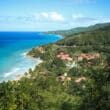
US Virgin Islands Tourism IS Off to a Strong Start in 2024
US Virgin Islands tourism is off to a very strong start this year, according to data provided by the Caribbean Hotel and Tourism Association. Overseas arrivals in the USVI were up 21 percent in the first quarter of 2024, as […]

Marriott’s New Turks and Caicos Resort Just Launched Bookings
The newest resort in Turks and Caicos has launched bookings ahead of its debut early next year, Caribbean Journal has learned. Salterra, a Luxury Collection Resort and Spa in Turks and Caicos, has launched bookings on its new Website ahead […]

Caribbean Cruise Ports Lead Segment Surge
T he Caribbean, the cruise industry’s largest deployment region, is driving its post-pandemic resurgence. Several regional destinations are reporting robust 2024 cruise arrivals following similarly positive results in 2023.
The region’s cruise ship surge lies behind a global passenger increase. A total of 31.7 million travelers cruised in 2023, according to the Cruise Lines International Association (CLIA)’s 2024 State of the Cruise Industry report. The total represents a seven percent increase over pre-pandemic 2019.
Of that number according to CLIA, 44.2 percent of 2023 cruise passengers traveled to the Caribbean, Bahamas and Bermuda, far outpacing the 18.5 percent who sailed to the Mediterranean, the next-highest global region.
In all, 12.9 million cruise passengers traveled to the Caribbean, Bahamas and Bermuda in 2023, a 7.3 percent increase over 2019. “The Caribbean gained almost one million new cruise visitors in 2023 compared to 2019,” CLIA officials stated in the report.
The cruise growth trend is evident, said destination officials. The Bahamas will host 5.6 million cruise passengers at its Nassau Cruise Port in 2024, said Chester Cooper, minister of tourism.
The figure will exceed the 5.4 million the port hosted in pre-pandemic 2019, said Cooper. “We are about 40 percent higher on cruise passengers at the Nassau cruise port,” he said.
In Barbados, government officials say 392 cruise calls carrying 715,527 passengers are confirmed for the 2024 winter season. The figures represent an 18 percent increase compared with the 358 calls and 608,583 passengers hosted in 2023.
Overall, Barbados’ 2024 cruise passenger arrivals are poised to exceed its 2023 numbers, with 826,338 passengers expected to arrive at the country’s Bridgetown port this year, arriving on 338 calls. Last winter, Barbados hosted 661,635 passengers arriving on 373 calls, said Ian Gooding-Edghill, minister of tourism.
Curaçao Ports Authority (CPA) officials quoted in a Curaçao Chronicle article anticipates 300 cruise calls with an average occupancy of 90 percent in 2024. The ships will deliver 800,000 cruise passengers to the destination this year, a 13 percent increase over 2023 totals.
Cruising High
The dual-island nation of Antigua and Barbuda is also among the Caribbean’s 2024 cruise visitation leaders. The destination is expected to host 800,000 cruise ship visitors in 2024 according to government tourism officials quoted in a WICNews.com report.
On March 12, Antigua and Barbuda hosted 15,808 passengers aboard six cruise ships, a record for the dual-island destination. The vessels included ships from Costa Cruises, Princess Cruises, Royal Caribbean International and Aida Cruises and Sea Dream Yacht Club.
Antigua and Barbuda followed its record March with a five-ship day on April 1, as vessels from Regent Seven Seas Cruises, Princess Cruises, Celebrity Cruises and Emerald Cruises carrying 10,820 visitors called at the destination, according to government tourism officials.
Caribbean tourism officials attending last week’s Seatrade Cruise Global conference in Miami Beach detailed the cruise segment’s resurgence in their countries.
Edmund Bartlett, Jamaica’s tourism minister, said Royal Caribbean Group officials “reaffirmed their commitment to Jamaica,” during the conference, maintaining a target of 400,000 annual visitors at Jamaica’s Falmouth cruise port.
The country hosted 389,319 cruise passengers in 2023, a 29.7 percent increase compared with 2022.
Saying “Seatrade 2024 signaled the returning strength of the cruise sector,” Bartlett held discussions with Carnival Cruise Lines, Disney Cruise Line and Princess Cruises during the event.
The Jamaica minister also held “very positive” discussions with MSC Cruises officials regarding “their interest in forging a larger strategic partnership involving investment in local infrastructure.”
Regional Resurgence
Other Caribbean nations reporting recent cruise visitation growth include the Turks and Caicos, where Experience Turks and Caicos officials reported 98,161 cruise ship visitors in March, the year’s highest total.
The Dominican Republic’s cruise ports hosted 52 cruise ships in April said Atahualpa Paulino, northern regional director of tourism, in a DominicanToday.com report.
The higher 2024 Caribbean arrivals follow similar success across 2023. The twin-island federation of St. Kitts and Nevis hosted 774,512 cruise ship visitors in 2023, a 61 percent increase over the 481,077 arrivals in 2022.
British Virgin Islands Ports Authority (BVIPA) officials said the territory hosted 720,392 cruise ship visitors in 2023, a 110 percent increase over the 343, 571 visitors hosted in 2022. The 2023 total “also surpasses the highest recorded arrivals” of 699,105 passengers in 2016, according to BVIPA.
Significant room for growth remains for the Caribbean cruising despite the increased arrivals in 2023 and 2024.
St. Kitts and Nevis’ 2023 cruise arrivals growth still trails the 1,053,388 cruise visitors the destination hosted in 2019, according to statistics from Tourism Analytics.
Bermuda hosted 525,413 visitors on 183 cruise ship calls in 2023, up 30.5 percent and 11.6 percent respectively from 2022, according to the Bermuda Tourism Authority’s 2023 Visitors Arrivals Report. Yet the total still trails the 535,561 cruise visitors Bermuda hosted in 2019.
The Cayman Islands hosted 937,000 cruise ship visitors in 2023, according to Economics and Statistics office data quoted in a Cayman Compass article. The figure represents a year-over-year increase of 118.1 percent but is about half of the 2019 total of 1.83 million cruise visitors.
“We are seeing the huge [cruise] growth, but if we haven’t yet reached the numbers before COVID,” Hugo Clarinda, Curaçao’s deputy tourism director, said earlier this year.
The Caribbean nation hosted “around 700,000 cruise visitors” in 2023, said Clarinda. “We will surpass 800,000 for sure,” he predicted. “Cruise continues to be important part of the mix [that] contributes to [our] economic impact.”

- Share full article
Advertisement
Supported by
The Maya Train Will Get You to All of Yucatán’s Best Spots. But Not Yet.
In December, the train began running on its first route through Mexico’s Yucatán Peninsula. On a five-day journey a few months later, the author encountered enthusiasm, and scheduling hiccups.

By Elisabeth Malkin
Elisabeth Malkin has been visiting the Yucatán Peninsula for three decades.
I stepped off the platform at the gleaming new Maxcanú train station, eager to see the magnificent Maya archaeological site of Uxmal. All I needed was a taxi to take me there, a trip of about 30 miles away.
There are no taxis, said the stationmaster, as we stood on the polished limestone floors of the high-ceilinged station, which was cool and breezy despite the brilliant late-morning sun outside. And I was the third person in two weeks to get off at Maxcanú expecting to reach Uxmal, he said.
I was midway through a five-day trip to explore the brand-new Maya Train and several of its destinations in the Yucatán Peninsula of Mexico . Designed to run 965 miles (1,554 kilometers) around a loop of 34 stations when completed, the train will whisk passengers in cool comfort through colonial cities, archaeological sites, splashy resorts and tropical forests.
Now I was stunned. Wrangling a taxi has never been a problem in Mexico. But the drivers gathered in the main square of Maxcanú offered only beat-up vans that hopscotch through small towns, where I might or might not find a taxi to Uxmal. The next van was leaving in 45 minutes.
Yucatán’s layers of history have long held me spellbound. During earlier car trips, I have clambered up deserted Maya temples and palaces, stepped into the cool naves of massive 16th-century churches and visited restored haciendas, testaments of the ostentation — and hardship — of the peninsula’s 19th-century plantation economy. Traveling by train, I thought, would allow me to steep myself in more of that history.
But as I found in Maxcanú, a train won’t necessarily get you to where you want to go.
During my February trip, I traveled on the only route then available, an east-west leg that opened in December and runs from Cancún to Mérida, and then south through the port city of Campeche to the Maya site of Palenque (a short route between Cancún and Playa del Carmen opened last month, with three trains a day). I encountered scheduling confusion, unfinished stations and a dearth of trains — just two operating daily each way between Cancún and Campeche, and only one to Palenque. Overnight sleepers and special dining trains seem years away.
President Andrés Manuel López Obrador considers the Maya Train his showcase development project, and wants to inaugurate the rest of the train before he leaves office on October 1. Based on my experience, that goal seems elusive.
A $29-billion route through the jungle
I started my journey in Cancún, where in the pre-dawn gloom the station hovered like a glowing spaceship. An attendant scanned the ticket I had bought online and a half-dozen more pointed me toward my tourist-class car, which was about a quarter full. I planned to go to Campeche, about 300 miles away, stopping once each day. At 120 kilometers (about 75 miles) an hour, the train covers the route in about six hours, the same as a car. (When construction is complete, the train’s speed should increase to 160 kilometers an hour.)
The car’s wide windows looked out at a wall of low jungle. The blue-green seats were comfortable and there was ample space between the rows. I bought a very good cappuccino at the snack bar, but declined the plastic-wrapped sandwiches. The rest of the merchandise was fruit cups, milk boxes and junk food.
The train will ultimately cost much more than the $29 billion budgeted so far, and it’s not the first time ambitious planners have alighted on the region. Cancún was once a tiny fishing village, selected half a century ago as a tourist hub. Last year 10 million international tourists flew into its airport, more than the airports of Mexico City, Los Cabos and Puerto Vallarta combined.
But uncontrolled growth has stressed the Caribbean coast’s fragile environment. The Maya Train, scientists warn , will push those problems south, threatening the area’s water supply, its unique system of underground limestone caves and its vast nature reserves.
Mr. López Obrador has charged ahead, handing the train over to the military , and arguing that it will spread Cancún’s wealth and attract new visitors. Mexico received more than 42 million overseas tourists last year and they spent almost $31 billion .
Local governments see an opportunity. “The train will allow people to disperse throughout the peninsula,” said Michelle Fridman, the tourism secretary for Yucatán state, which promotes dozens of attractions far beyond highlights like Mérida and Chichén Itzá .
Now that the train is operating, transport companies will begin to connect stations with lesser-known sites nearby, she said.
It’s fair to ask whether the train is the most effective way to develop the peninsula’s tourism. Tour companies already run trips to many sites from major cities, which are well served by buses. Driving a rental car through most of the area is considered safe , according to U.S. State Department travel guidance .
Route of Mexico’s Maya Train
Canceled trip.
It took two hours (and one time-zone change) to reach Valladolid, a colonial city of handsome streets and ancient churches, where I bought the rest of my tickets at the station. A tourist-class ticket from Cancún to Valladolid costs 472 pesos (around $28) for foreigners and 355 pesos (around $21) for Mexicans. First class, with wider seats, costs 755.50 pesos and 566.50 pesos, and discounts are available for older travelers and residents of the five states along the train’s route. (A first-class bus from downtown Cancún to Valladolid costs between 222 and 344 pesos, depending on the time of day, and takes half an hour longer.)
It was impossible to run the new Maya Train tracks into dense city centers and the Valladolid station, like the rest, was outside the urban core. A waiting bus took disembarking passengers downtown, a 15-minute ride for 35 pesos.
That day I toured Ek Balam , the site of a ninth-century Maya kingdom that is dominated by a 100-foot palace distinguished by a facade of carvings depicting winged warriors, stylized animal features and geometric patterns bordered by giant fangs. Admission to the site includes entry to the X-Canché cenote, one of thousands of limestone sinkholes that were sacred to the Maya.
Later that afternoon, I was wandering through the Museum of Ethnic Clothing, a private collection of traditional dress, embroidery and hats, when a WhatsApp message from the ticket office blinked on my phone. My train scheduled for the following day was canceled.
I decided to deal with the problem in the morning and enjoy the city. As I wandered past the antique shops and boutique hotels of the elegant Calzada de los Frailes, it was clear that Valladolid’s tourism, and the infrastructure to handle it, was well established. The Maya Train is simply an alternative way to reach a city that tourists discovered years ago.
‘We’re on the Tren Maya!’
In the morning, I found that my train had not been canceled, but the station for which I had a ticket, Tixkokob, was closed. I got off instead one stop earlier at Izamal, known for its ocher streets and the giant Franciscan convent of San Antonio de Padua, built atop the ruins of a pyramid.
During the 90-minute ride, I heard widespread enthusiasm among fellow travelers who expressed a willingness to give the train time to work out the kinks. “We’re an experiment,” said Oliva Escobedo Ochoa, 64, who was vacationing from her home in central Mexico.
Leticia Iliassich, 57, who is Mexican, was traveling with her Croatian husband along with relatives from Mexico and Croatia. They had initially been scheduled on an earlier train to Mérida that had been canceled. “We knew that it was a new project,” she said. “We don’t mind.”
The group had already sent a video to friends declaring, “We’re on the Tren Maya!”
At the Izamal station I hitched a 15-minute ride into the town center with a man who had asked me to take his photo alongside the train and his father. From there I negotiated a taxi to Hacienda San Lorenzo Aké, a working hacienda that still turns the fiber from an agave plant called henequén into coarse rope. Global demand for henequén, known as Yucatán’s “green gold,” brought fantastic wealth to the region in the mid-19th century, speckling the peninsula with more than 1,000 haciendas. ( Many are now sumptuous hotels.)
Where geometry, nature and the divine merge
It was during my third day that I found myself stuck in Maxcanú, after a 90-minute train ride from Izamal. The stationmaster, an army captain, offered me a ride to Uxmal, just as he had to the stranded tourists before me.
Eying Uxmal’s 4 p.m. final ticket sale, I accepted.
My situation made it clear just how distant the Maya Train’s promises are for tourists seeking to explore more of Yucatán. In time, that will change, said Ms. Fridman, the tourism secretary. “The idea is to have more hotels along the train line,” she said. “That will happen little by little.”
But Uxmal , among the most stunning of the Maya sites, made up for the inconvenience. Uxmal’s grand buildings are faced with intricate decorative masks as well as friezes in which geometry, nature and the divine merge. New plaques at each structure offer detailed information in English and Spanish, part of the government’s investment in improving displays at Maya sites for the train project.
Most tourists either take day trips by car or bus to Uxmal from Mérida or stay at one of three nearby hotels. As I finished dinner at my hotel, the dining room began to fill up: 47 Polish tourists had arrived.
Panama hats and a cramped van
My plan for the day was to go by taxi to Bécal, a town where Panama hats are woven in limestone caves to keep the fibers soft, and then pick up the afternoon train in nearby Calkiní for the port city of Campeche.
But I spent so much time watching the hat-making demonstration and then fitting my new hat and buying gifts that we set off with little time to reach the station. To my chagrin, I missed the train, the last one of the day.
On Calkiní’s central square, I found a van that was leaving for Campeche. Cost: 65 pesos. Time: about 1 hour and 20 minutes, similar to what I would have spent on the train. Of course, I was trapped in a cramped seat and had to listen to the driver’s choice of sentimental ballads, but I was dropped off in downtown Campeche, close to my hotel.
The next day, I toured the Museum of Maya Archaeology , an expertly curated collection that included haunting jade funeral masks, glyphs and delicate ceramic figures.
José Madrigal, 45, an engineer from Fremont, Calif., was trying to make Maya pottery interesting for his twin sons. The boys had just turned 5 and their birthday present had been a ride on the Maya Train. “They love trains,” Mr. Madrigal said. Then the family moved on, keeping up a brisk clip through the museum. They had another train to catch.
Should you take the train?
Yes, if you are traveling between larger stations. The train also offers a way to get to Palenque, which is harder to reach and has roads with security concerns. Travelers can stow bicycles on board.
To see train times, check the destinations on the website . You cannot buy tickets online more than a week in advance. But when you finally board, the ride is smooth — and the coffee is excellent.
Follow New York Times Travel on Instagram and sign up for our weekly Travel Dispatch newsletter to get expert tips on traveling smarter and inspiration for your next vacation. Dreaming up a future getaway or just armchair traveling? Check out our 52 Places to Go in 2024 .
Open Up Your World
Considering a trip, or just some armchair traveling here are some ideas..
52 Places: Why do we travel? For food, culture, adventure, natural beauty? Our 2024 list has all those elements, and more .
Mumbai: Spend 36 hours in this fast-changing Indian city by exploring ancient caves, catching a concert in a former textile mill and feasting on mangoes.
Kyoto: The Japanese city’s dry gardens offer spots for quiet contemplation in an increasingly overtouristed destination.
Iceland: The country markets itself as a destination to see the northern lights. But they can be elusive, as one writer recently found .
Texas: Canoeing the Rio Grande near Big Bend National Park can be magical. But as the river dries, it’s getting harder to find where a boat will actually float .

- Latest News
- North & East
- Environment
- International
- Social Love
- Horse Racing
- World Champs
- Commonwealth Games
- FIFA World Cup 2022
- Art & Culture
- Tuesday Style
- Food Awards
- JOL Takes Style Out
- Design Week JA
- Black Friday
- Relationships
- Motor Vehicles
- Place an Ad
- Jobs & Careers
- Study Centre
- Jnr Study Centre
- Supplements
- Entertainment
- Career & Education
- Classifieds
- Design Week
Grenada PM wants more inclusion in Caribbean tourism industry
ST GEORGE’S, Grenada (CMC) — Grenada’s Prime Minister Dickon Mitchell Monday called for more inclusion of stakeholders within the region’s tourism industry, warning that failure to do so could seriously hamper the development of the industry.
Addressing the opening of the Caribbean Tourism Organization’s (CTO) Caribbean Sustainable Tourism Conference (STC 2024), hosted by the CTO in partnership with the Grenada Tourism Authority (GTA), Mitchell told delegates that any discussion on sustainable tourism needs to take into consideration the partnerships with the various stakeholders.
“We cannot sustain ourselves,” said Mitchell, informing the conference that while he had prepared a speech for the event, he would not be delivering it.
“So it means that when we have our conversations, you probably have to be a little more inclusive and invite the farmers, the fishermen etc etc, the supply chain people to help sustain this tourism industry. which is our crown jewel in the Caribbean.”
Mitchell warned that failure to do so would result in a couple of things including “these people are not going to defend the tourism sector and it also makes it easier for the politician not to defend, the tourism sector”.
He told the conference having worked for a number of hotels in the past, he shared a view of the sector “that was pampered, treated quite well and to a large extent sort of treated our people by rewarding them with low paying unskilled jobs”.
“And there is some element of that, and so in Grenada’s case. Once upon a time there was a very deliberate public education campaign that tourism was every body’s business and the question is why did we have to do that?
“People did not believe that tourism is everybody’s business. They did not believe that tourism was good for them and good for the country. I think we have come a long way from that and that the average Grenadian, the average Caribbean person accepts, understand the importance of tourism.”
Mitchell said however that the tourism industry itself “needs to do a better job of making sure that it integrates, connects with, supports, encourages other sectors of society that needs to grow as quickly as tourism has grown to ensure that tourism remains sustainable.”
He said in Grenada for example, the government is under “severe pressure” to relax the rules as well as the concessions for the duties we pay for getting the food needed by the hotels into the island.
“Many of our hoteliers will tell you it is difficult to get the type of food in quantities and quality that they need to sustain and to remain competitive. But if the only solution is to import all of the food, I am guaranteeing you that the tourism will not be sustained and I think we know that and therefore we owe it to ourselves, our farmers, our fishermen, our agro-processors…to ensure to help them to be part of the solution that we need to make our food more sustainable, make our food healthier…”
“So if we are talking partnerships let us go beyond having a room where we are talking to ourselves and that we speak to the persons who could assist us with that partnership,” he said, making reference to the fact that there is also need for unity in dealing with other issues in the sector, including the provision of adequate supply of water and dealing with the problems associated with mosquitoes.
He said in the Caribbean, most of the water now comes from desalination plants “but the reality is…we have not planned for the growth in tourism by ensuring that we invest in water conservation and the smart use of water, in recycling the use of water etc etc etc”.
Centred around the theme of the 5 Ps – People, Planet, Prosperity, Purpose and Partnership, the CTO said that STC 2024 aims to address pressing issues facing the Caribbean tourism industry and foster collaboration among stakeholders to promote sustainable development.
“The conference is poised to deliver impactful discussions and initiatives that will drive positive change within the region’s tourism sector.”
In his address to the opening ceremony, the executive chairman of the Sandals Resorts International, Adam Stewart, acknowledged that the main problem facing the tourism industry in the region is understanding visitors who are representing a different generation than in the past.
Sandals International President Adam Stewart (Photo: CMC)
“There are multitudes of generations at any given time in any segment of tourism…and the magic is to figure out how to get them to come here continuously and on an ongoing basis and to widen that net of inclusivity,” said Stewart, who is also the ATL Group and Sandals Foundation president.
“Customers don’t owe us anything…they do not have the loyalty of the former explorers, they have the internet to guide them without ever leaving their rooms,” Stewart said, noting that the most powerful of the theme of the conference is that of partnership.
“The most powerful part of the five Ps is partnership, the public sector has a role, the private sector has a role to the degree to which those two things come together to determines your gains and your future,” he told the opening ceremony, adding that there has been more changes and advancements in tourism globally in the last decade than there have been in the last 50 years.
“Our job through my eyes in the short time I get to talk is unity, it’s for all of us to come together, it’s to stand together, to take head on the challenges that we face and to find a way to include everybody,” he said, recalling the problems faced by the industry due to the outbreak of the coronavirus (COVID-19) pandemic.
“We as business leaders, we as policy makers in government have to dig deeper, we have to stop being reliable or stop saying this is government business or the private sector business. The sooner we come together with the collective to say that this is our own, that is Caribbean business, is the sooner we will get advancement,” Stewart said.
Focusing on the need for training for workers in the tourism industry, he said there are minimum standards that customers will not accept.
“So, we have to prepare, even if it is mother nature, for the arrival of the visitor that has the choice to go anywhere in the world but choose to come here in the region,” he said.
Dozens of speakers are scheduled to address the conference.
HOUSE RULES
- We welcome reader comments on the top stories of the day. Some comments may be republished on the website or in the newspaper; email addresses will not be published.
- Please understand that comments are moderated and it is not always possible to publish all that have been submitted. We will, however, try to publish comments that are representative of all received.
- We ask that comments are civil and free of libellous or hateful material. Also please stick to the topic under discussion.
- Please do not write in block capitals since this makes your comment hard to read.
- Please don't use the comments to advertise. However, our advertising department can be more than accommodating if emailed: [email protected] .
- If readers wish to report offensive comments, suggest a correction or share a story then please email: [email protected] .
- Lastly, read our Terms and Conditions and Privacy Policy
Comments are closed.
- Privacy Policy
- Editorial Code of Conduct
IMF says Latam, Caribbean economies resilient but more growth is needed
- Medium Text
PUBLIC DEBT AN ISSUE
The Reuters Daily Briefing newsletter provides all the news you need to start your day. Sign up here.
Reporting by Rodrigo Campos Editing by Alistair Bell
Our Standards: The Thomson Reuters Trust Principles. New Tab , opens new tab

Thomson Reuters
Rodrigo Campos is based in New York. He covers economic and financial news from global emerging markets -from Argentina and Turkey to the BRICs, from El Salvador to Suriname and Ghana. Rodrigo previously covered the U.S. stock market for Reuters and reported for Colombian daily El Tiempo covering Arts and Culture.
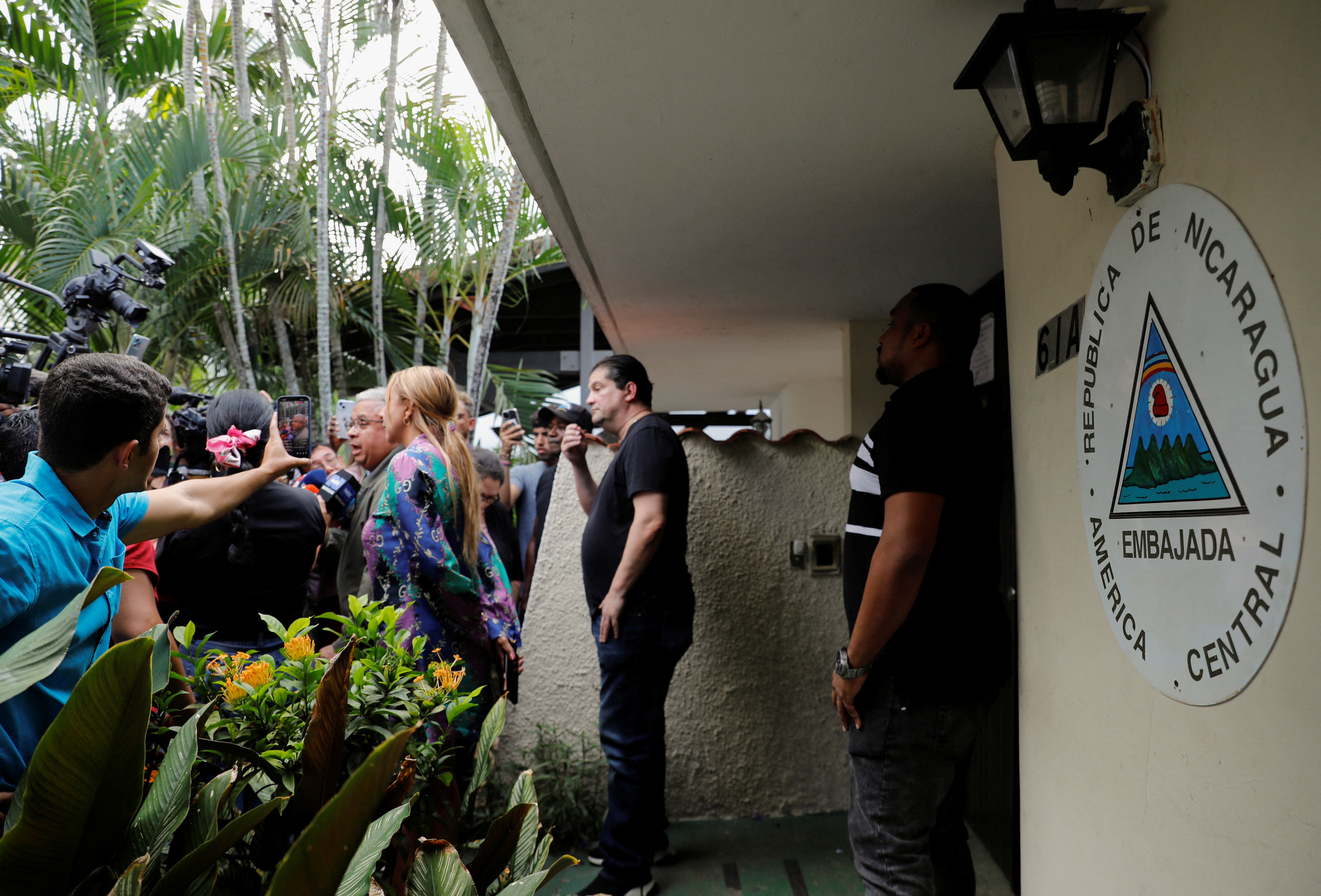
Mexican soldiers arrested Abraham Oseguera, the brother of Nemesio "El Mencho" Oseguera who leads the hyper-violent Jalisco New Generation Cartel (CJNG), officials said on Monday, touting the capture as a major blow to organized crime.

World Chevron

Russia to step up strikes on Western weapons in Ukraine
Russia will intensify strikes on Ukrainian storage bases that house Western-supplied weapons, Defence Minister Sergei Shoigu said on Tuesday, as the United States prepares to approve and deliver a long-delayed batch of new military aid.


IMAGES
COMMENTS
The region outperforms global trends, showing remarkable resilience and growth. In 2023, tourism in the Caribbean saw a notable surge, registering a 14.3% boost in international visitors, as reported by the Caribbean Tourism Organization (CTO). This uplift aligns with the predictions made by the CTO and was announced during the "Caribbean ...
Last updated: 4:00 PM ET, Sun March 17, 2024. According to the Caribbean Tourism Organization's (CTO), inbound tourism in the Caribbean continued its upward rebound from the pandemic in 2023, with international stay-over arrivals numbers growing by an impressive 14.3 percent. The CTO's Secretary-General, Dona Regis-Prosper, presented the ...
Tourism is the lifeblood of the Caribbean economy, and comprises 40% of the region's GDP and employs 13.4% of the people. However, challenges include better harnessing the region's natural capital in a sustainable way and making the tourism sector more resilient to natural disasters. Recently, category five hurricanes Irma and Maria clearly ...
Delivering the "Caribbean Tourism Performance Review 2023" in Bridgetown today, Dona Regis-Prosper, secretary-general of the CTO, shared that last year's growth was in line with the Caribbean Tourism Organization's forecast for the year, and attributed the outcome to sustained demand for outbound travel from the United States - the ...
Delivering the "Caribbean Tourism Performance Review 2023" in Bridgetown today, Dona Regis-Prosper, Secretary-General of the CTO, shared that last year's growth was in line with CTO's forecast for the year, and attributed the outcome to sustained demand for outbound travel from the United States - the Caribbean's main source market ...
Feb. 10, 2022. Last April, when Pat George, 70, wanted to take his family on vacation, he chose the Dutch side of the Caribbean island of St. Maarten. "It's the first time in 35 years that our ...
The Caribbean is the most tourism‐dependent region of the world (Chappell & Frank, 2020; UNWTO, 2001).The tourism sector, acknowledged as one of the major attributes for economic, cultural, and environmental development today, is perceived as a significant source of opportunity to the local communities (Baker & Unni, 2021; Croes & Vanegas, 2008; Ramesh, 2002).
In this article, we use tourism data for 15 Caribbean small states over the period from 1980 to 2015 to study the link between tourism and economic growth. We measure tourism as the amount of spending undertaken in the country by international travelers as well as the number of individuals entering the country from abroad and are engaged in ...
The tourism industry in the Caribbean is expected to sustain its recovery, however, at a slower pace. Growth in the tourism sector for 2023 is projected by WTTC to slow further to 11.1% in the Caribbean region, much lower than 2021 and 2022 which saw growth of 36.6% and 27.2% respectively.
17th March 2023. The Caribbean Tourism Organisation (CTO) is voicing optimism on the region's tourism prospects for the remainder of 2023. Speaking in Barbados during the organisation's launch of the 2022 "Tourism Performance and Outlook Report," Acting Secretary General of the CTO, Neil Walters declared that the Caribbean had one of the quickest recovery rates globally.
Caribbean tourism experiences strong growth in 2023, with a 14.3% increase in international stay-over arrivals. Find out more in our latest blog post. Sunday, March 31 2024 .
The Caribbean opened its arms to 7% more tourists last year, growth that was higher than every other region, and nearly double the 4.4% global average tourism growth in 2015, according to the ...
The Caribbean is a diverse region with significant economic potential and growth opportunities. Gross National Income (GNI) per capita varies from around US$800 to over US$30,000 and most countries rely primarily on tourism, while some on commodity exports. With its stunning scenery and vibrant cultures, the Caribbean is one of the world's ...
According to the Caribbean Development Bank, while real tourist expenditure grew from $6.8 billion in 1989 to $13.1 billion in 2014, the average expenditure per visitor declined by 30.1%. Some of this is due to the growth of the cruise industry in the region. While a long-stay tourist spends approximately one week in their destination, a cruise ...
The expected recession in the United States beginning in Q224 will lower demand for Caribbean tourism, dragging down growth across the region. Past 2024, we expect a rebound driven in part by the tourism recovery, and see regional growth at approximately 2.4% (2023-2028). We are expecting growth in the Caribbean region to slow in 2024, after ...
Mass tourism is a major driver of economic growth in the Caribbean. One major trade-off of this economic growth model is the loss of natural areas due to tourism activities and increasing urbanization. Aruba is one of the most tourist intense destinations within the region with a total of 1.1 million stay-over tourists in 2019. Moreover, this island has one of the largest population densities ...
As for 2024, Aruba is projecting 3 percent further growth next year, along with a 6 percent jump in tourism receipts and a 1 percent increase in revenue per available room. On the cruise side ...
Delivering the "Caribbean Tourism Performance Review 2023" in Bridgetown today, Dona Regis-Prosper, Secretary-General of the CTO, shared that last year's growth was in line with CTO's forecast for the year, and attributed the outcome to sustained demand for outbound travel from the United States - the Caribbean's main source market ...
Caribbean Market Update Q4 2022 Report 6 The highest growth in ADR was reported by the Cayman Islands, at 99% above the same period last year, followed by Barbados (+46.3) and Trinidad/Tobago (+39.4%). In terms of improvement in occupancy, the Bahamas reported a 93% growth rate, Barbados grew 88%, and St. Lucia grew 78%.
Tourism, the dominant economic activity of the Caribbean islands, reaches higher than 90% of Gross Domestic Product in many islands. At the same time, this vital source of income has also been identified as a major threat to the region's sociocultural, ecological, and public health sustainability. These include spatial and socioeconomic ...
Tourism is one of the Caribbean's major economic sectors, with 25 million visitors contributing $49 billion towards the area's gross domestic product in 2013, which represented 14% of its total GDP. It is often described as, "the most tourism-dependent region in the world". The first hotel was built on the island of Nevis in 1778 and brought wealthy visitors, such as Samuel Taylor Coleridge.
The tourism industry in the Caribbean is expected to sustain its recovery, however, at a slower pace. Growth in the tourism sector for 2023 is projected by WTTC to slow further to 11.1% in the Caribbean region, much lower than 2021 and 2022 which saw growth of 36.6% and 27.2% respectively.
The Caribbean is at a crossroads in addressing these challenges as well. The key findings of the report: After the economic recovery of 2021 and 2022, key forecasters expect a global economic slowdown in 2023, driven mostly by expected lower growth in advanced economies. That said, those advanced economies remain the key drivers of demand for ...
Travel advisors are critical to advancing the growth of tourism in Jamaica, Tourism Minster Edmund Bartlett said this week. Bartlett, who was addressing a group of top travel advisors in New York ...
St. Kitts and Nevis' 2023 cruise arrivals growth still trails the 1,053,388 cruise visitors the destination hosted in 2019, according to statistics from Tourism Analytics.
But uncontrolled growth has stressed the Caribbean coast's fragile environment. The Maya Train, scientists warn, ... it was clear that Valladolid's tourism, and the infrastructure to handle it ...
He said in the Caribbean, most of the water now comes from desalination plants "but the reality is…we have not planned for the growth in tourism by ensuring that we invest in water ...
Newport Harbor Island Resort, the sole accommodations on Goat Island, is set to open at the end of April following a $50 million renovation. The renovation marks a new era for the former-Gurney ...
Earlier this week, the IMF slightly lifted its 2024 view on economic output growth for Latam and the Caribbean to 2.0% from its 1.9% January forecast, in both cases calling for a deceleration ...
Elevated national food prices, weak currencies and lower economic growth prospects continue to constrain access to food for many net-food-importing developing countries and vulnerable communities. As an average, Latin America and the Caribbean recorded the highest cost of a healthy diet compared to other world's regions in 2021.